Engaging your community


Running on empty cows
Grazing by degrees
SMASHING THE TOP OFF INFLATION
Using smart strategies and clever spending to protect your profit margin










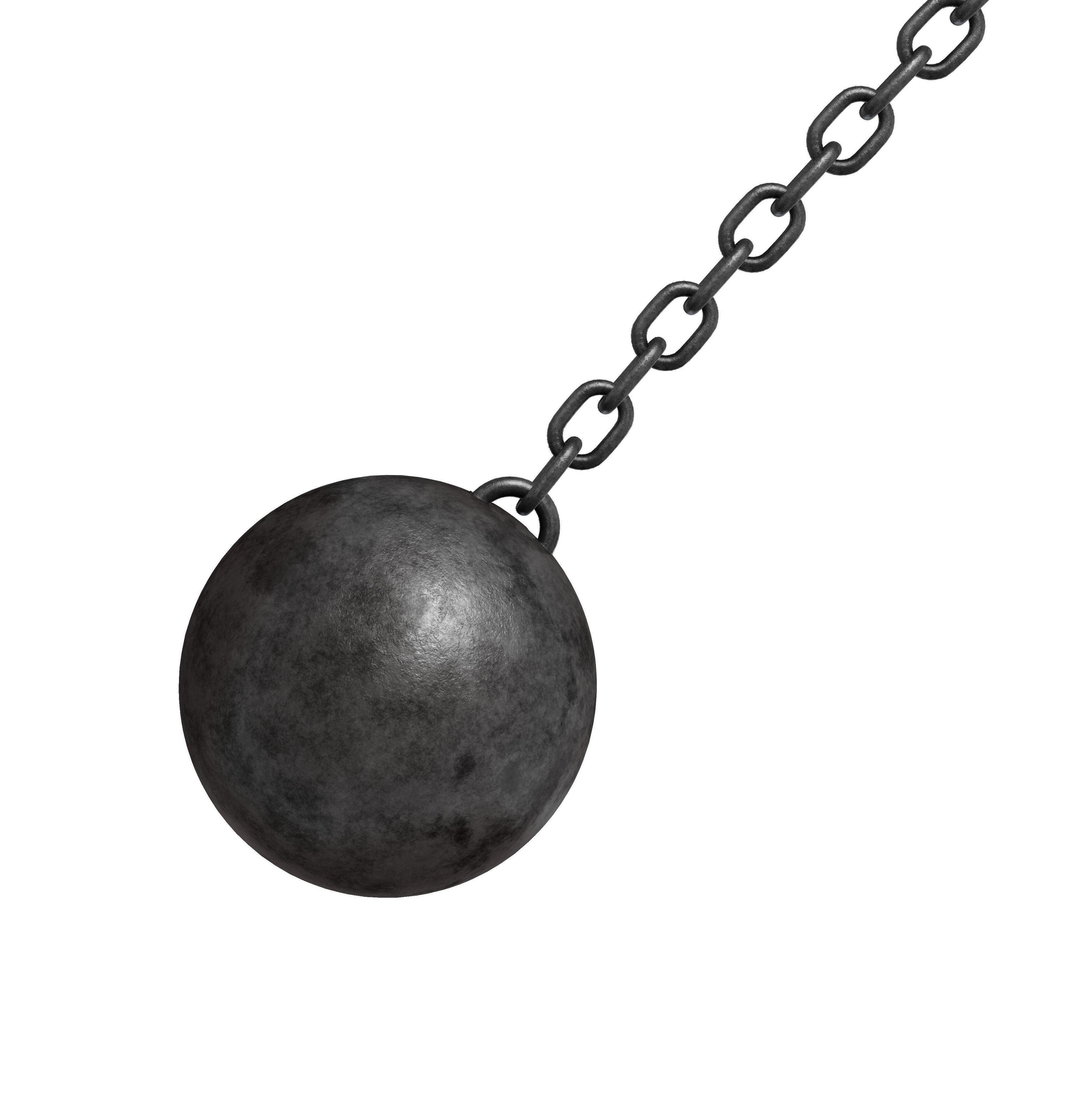

$12 incl GST JULY 2022 $12.95

Salmonellosis is over three times more prevalent than in 20131
Salmonella is widespread on New Zealand farms and cases are increasing nationwide1. Striking without warning and spreading quickly, Salmonella can pass from your stock to the ones you care about most.


Vaccinate today to reduce the destructive impact of an outbreak*.


SALVEXIN®+B

NEW ZEALAND’S ONLY SALMONELLA VACCINE FOR SHEEP AND CATTLE
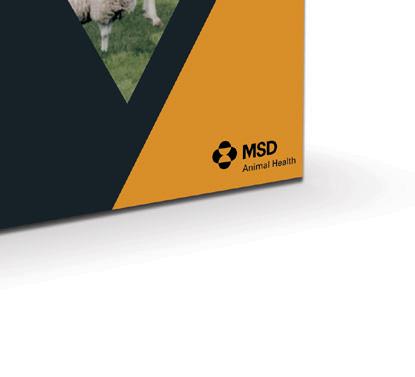


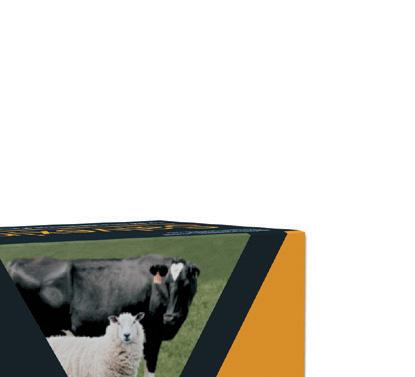

3
For more info watch our Salmonella webinar at: www.msd-animal-health.co.nz/salmonella-roadshows AVAILABLE ONLY UNDER VETERINARY AUTHORISATION. ACVM No: A7886. Schering-Plough Animal Health Ltd. Ph: 0800 800 543. www.msd-animal-health.co.nz NZ-SAL-210500001 ©2020 Intervet International B.V. All Rights Reserved. *Salvexin+B should be used in conjunction with other management practices to help control the risk of Salmonella. 1. Surveillance. Vols 41-47, No. 3, September 2014-2020


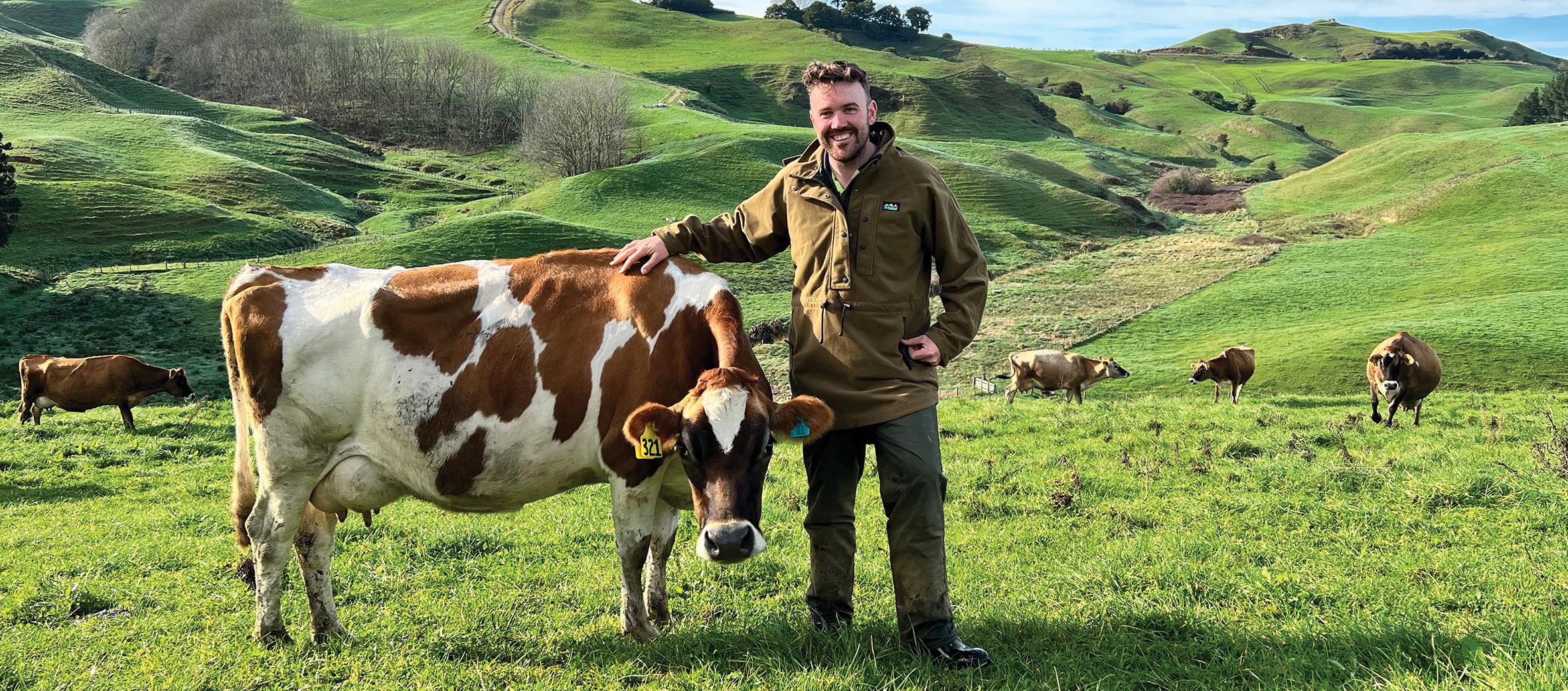

4 Dairy Exporter | www.nzfarmlife.co.nz | July 2022 CONTENTS MILKING PLATFORM 10 Jess and Cam Lea have reassessed the financial side of their business. 11 Anne-Marie Wells wonders if farmers should reframe themselves as #1 cow 12 Robert Hodgkins prepares to milk sheep in Hertfordshire, England 13 DairyNZ responds to West Coast issues UPFRONT 14 NZ ag needs to pivot towards modern foods 17 Global Dairy: Netherlands farmers at war with their government 18 Global Dairy: Brazil’s environmental journey 20 Market View: Lower milk prices support stellar milk prices. BUSINESS 22 Cash flow is king 32 Cows running on empty SYSTEMS 38 SIDE: Grazing by degrees 40 Alltech ONE addresses key areas 42 Minimising the wet effect in Southland
32
22 Page 11
Page
Page
SPECIAL REPORT: Smashing the top off inflation

46 Costs crimp record payouts


51 Paying the price
52 SIDE: Control what you can
54 Fertiliser: The right product at the right price
57 Keeping the grain flowing
ENVIRONMENT
60 Wetlands: A farm Taonga
63 Equipping Coast farmers for future
65 Research: Time to take another look at urine
STOCK
68 Calf rearing: Going for gold
69 Colostrum is gold
70 SIDE: Rumination on repro
72 Improving in-calf rates
73 Calves: Back to basics with veal
74 The good grain
75 Wagyu: First Light goes it alone
76 Germany: Organics and Jenseys
78 Vet Voice: The value of a post mortem
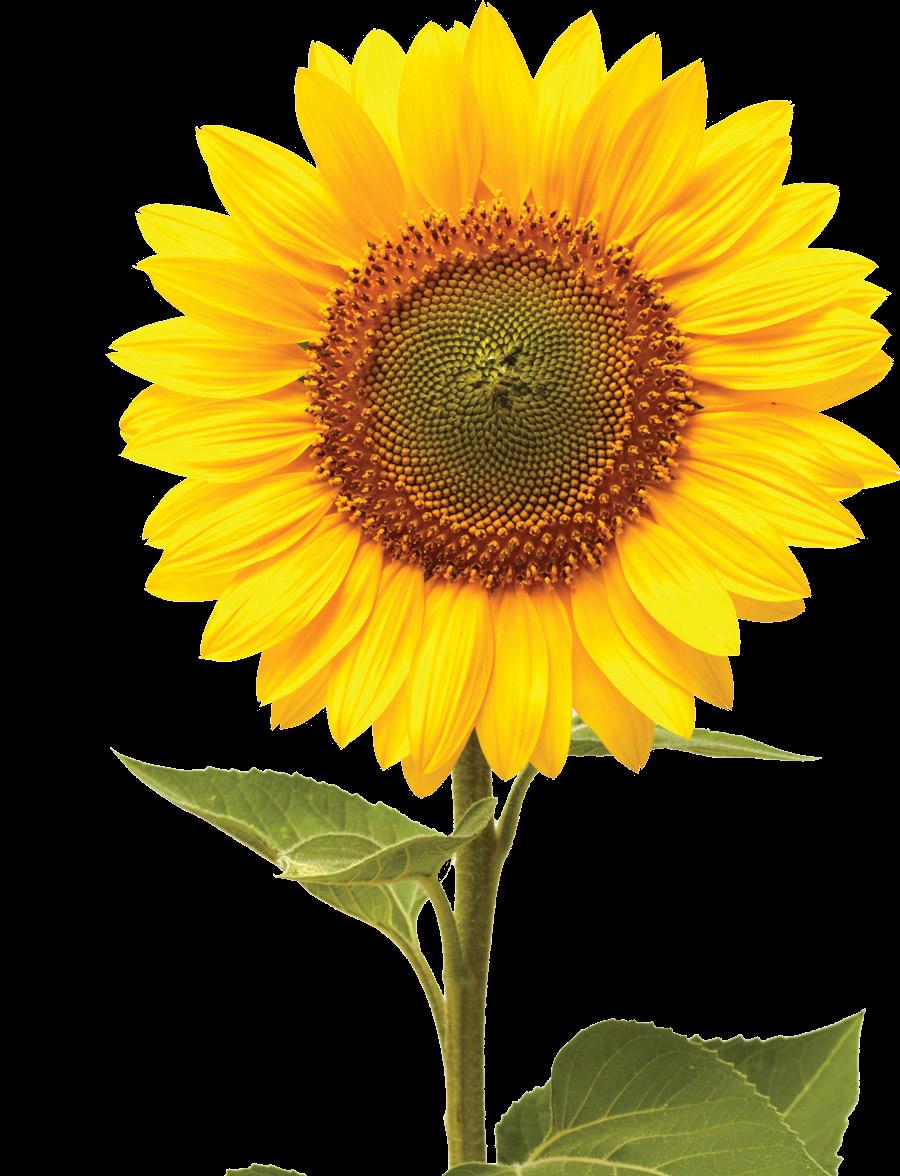
Front cover design: Emily Rees
YOUNG COUNTRY
80 Catching the director’s eye.
82 Attracting workers to dairying

WELLBEING
84 Taking a break with the team
DAIRY 101
86 Staffing: Migrants again welcome
SOLUTIONS
88 Monitoring: Focusing on the heat
89 Know your colostrum powder
OUR STORY
90 50 years ago in the NZ Dairy Exporter
Exporter | www.nzfarmlife.co.nz | July 2022 5
Dairy
Page 80
Page 76
Page 80
DAIRY DIARY





July 25 – Weekly farm walks begin again on the Lincoln University Dairy Farm on Mondays at 9am at the farm on Shands Road. The next focus day will be held on September 29, beginning at 10.15am and will have a focus on mating, managing costs and inflation. For more about the farm, visit www.ludf.org.nz.
July 26 – A relationship property live webinar is being held by Dairy Women’s Network in conjunction with Hammertons Lawyers Ltd. It looks at intergeneration farming operations, constructive trusts and how you can protect against adverse outcomes when a relationship breaks down. For more details and to register, visit register.gotowebinar.com/ register/82950879656517133.
August 14 – Applications close for 2023 Nuffield New Zealand Farming Scholarships. Each year up to five scholarships are awarded in the rural leadership programme to fast track the development of emerging leaders in the agri-food sector. To find out more and apply, go to ruralleaders.co.nz/ nuffield.

September 27-28 – DigitalAg 2022 is being held at the Distinction Hotel in
Rotorua. The formerly MobileTECH Ag brings together technology leaders, agritech developers, early adopters and the next generation of primary industry operators. The real innovation now is in digital platforms that capture realtime data and convert it into practical information that drives productivity. To find out more about the event and to register, go to agritechnz.org.nz/event/ digitalag.
October 2-7 – World Dairy Expo 2022 is held in Madison, Wisconsin. Find out more about the expo at worlddairyexpo.com.
October 6-7 – The New Zealand Landcare Trust is hosting the National Catchments Forum at Te Papa Tongarewa in Wellington which brings together speakers with knowledge and experience in catchment management. It looks at water reforms, integrated farm and catchment planning, and how catchment groups are addressing the climate challenge. For more about the forum visit www.landcare.org.nz/eventitem/national-catchments-forum.
October 28-30 – Waikato A and P Show has been held at Claudelands Showgrounds for more than 100 years and celebrates traditional competitions,
rural lifestyle and bringing communities together. For more, go to waikatoaandp.co.nz.
October 30 – Applications close for the first 2023 Kellogg Rural Leadership Programme at Lincoln which is aimed at developing leaders for the rural and agri-food sector. For more details and to apply visit ruralleaders.co.nz/kellogg.
November 9 – The New Zealand Agricultural Show is held at Canterbury Agricultural Park in Christchurch. Livestock entries open on August 1. For more information about the show visit www.theshow.co.nz.
November 15-17 – The NZ Grassland Association’s annual conference takes place in Invercargill. For more information and to register, visit www.grassland.org.nz.
November 30 – December 3 –Fieldays is a summer event this year at the Mystery Creek Events Centre near Hamilton. Get the details about the Southern Hemisphere’s largest agricultural event at www.fieldays.co.nz.
Dairy Exporter | www.nzfarmlife.co.nz | July 2022
TALK TO THE EXPERTS FOR FARMING SUPPORT FARM SERVICES HOMEOPATHIC farmservices.nz info@farmservices.nz 07 858 4233 @HomeopathicFarmServices
Travel
Easing
Injury Combo Support
Udder Combo Supports sudden onset of udder in ammation with
Combo
the transition for young
for
Staying strong onfarm portrays an innovative programme run by Reporoa dairy farmer and cancer survivor Sarah Martelli, who helps other women find their balance and build strength and wellbeing to be the best they can be.
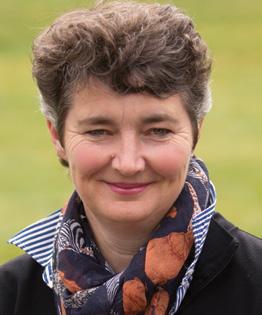
THE INFLATION WRECKING BALL

Strong Woman is an online community for women to work on their fitness with a workout to do at home, find quick and easy healthy recipes, goal planners and to connect with other women on the same journey. Her philosophy is to help women create healthy, sustainable habits around moving and feeding their bodies and their families.
If women can prioritise their own health and fitness, they can inspire their partners, their children and their community around them, Sarah says (p82).
She is an inspirational woman creating a moment of lift for many women.
Inflation is hot news all over the world at the moment - with the New Zealand rate hitting 7% for the first time in 30 years - so realistically anyone under 45 will not really have seen or been affected by the like in their lifetimes. And it seems the rate of inflation in the ag sector is running even hotter.
(p42). We also cover the Heald family of Norsewood (p52) who have transitioned to organics, OAD and philosophies and are enjoying the less intensive more resilient system they have moved to, along
In this issue we take a look at the regenerative agri journey some NZ farmers are already on, and that the government has signalled they want others to join in on, in our Special Report.
The old, wise and grey heads in the sector will remember the rampant inflation of the early 1980s - spiking at 18% in 1980 and the record high interest rates farmers were subjected to.
milksolids production, from a range of adverse climatic conditions around the country. He puts into context that 4% is only two container ships of our product - out of the roughly 42 that shift a total season’s production, but the chaos in Europe has also led to declining production there and in the United States, so the price is being supported by less product.
The regen debate has divided the farming community in a big way - many scientists are affronted that NZ would need regenerative methods from overseas countries with highly degraded soils - would that then infer that our conventional methods were degenerative?
My first dairy farm job was in the summer of 1984 and the young first farm owners I milked for in eastern Taranaki were struggling with interest rates around the early 20% mark - while I milked the small herd through the little old eight-bail walk-through shed the farm owner rushed around the district baling hay for other farmers, trying to make enough extra cash to cover his mortgage and feed his young family.
Harriet Bremner encourages farmers to get their team off farm during the quiet time to get to know them while doing something fun and different - she took her crew to an escape room challenge.
They say the methods won't work, and that research has already shown that, and also our farmers are already following regenerative practices. Others say that the methods are not prescribed and each farmer can take out of it what they want. It has been called a social movement rather than a science and the claimed benefits of improved soil and stock health and building soil carbon through diverse species, use of biological fertilisers and laxer and less frequent grazing practices along with less nitrogen is something that resounds emotionally with many.
We have taken a snapshot of thinking by scientists in MPI and DairyNZ (p46) and portrayed what farmers using the practices are finding, including ongoing coverage of the comparative trial work by Align Group in Canterbury
Our special report this issue warns farmers against the danger of complacency about cost inflation with a record high payout forecast. Chris Lewis of BakerAg says in these strange times of Covid and the Ukraine war and their affects on the world economy and supply chains, when fuel, fertiliser and feed costs have had a fire lit under them, profit margins will be squeezed by the higher costs.
Dairy Exporter | www.nzfarmlife.co.nz | June 2021
There is more research to be done in the NZ farm system context, says MPI’s chief scientist John Roche, figure out what will and won’t work, but he encourages farmers to engage and learn more, and to embrace regenerative as a verb - saying all farmers could be more regenerative, more resilient, lowering carbon
If you are interested in getting into farm ownership getting out but retaining an interest, read about Moss’ innovative idea for a speed-dating weekend potential partners (p11). We think it could be a
NZ
@YoungDairyED @DairyExporterNZ @nzdairyexporter
We have drilled down into feed, fert and people costs and come up with ways for farmers to help protect their profit margins from the wrecking ball of cost inflation. (page 46).
Stu Davison, in his Market View column, covers off the effects of a 4% drop in NZ
Sneak peek
In the next issue:
JULY 2021 ISSUE
• Special Report: Farming/business investment – if you are starting out or bowing out.
August 2022
Reading articles from both here and overseas has made me feel like I was living an escape room challenge this week - from stories of Dutch farmers protesting nitrate directives that will see many of them paid to quit their dairy herds (pg17), to Kiwi journos asking if we should be looking at meat and dairy like tobacco and calls to remove cows from the Canterbury plains… We need to keep reminding ourselves there are farmers all around the country evolving towards building wetlands, planting waterways, concentrating on highly efficient cows in their herds and being smart about nitrogen application. Evolution certainly beats revolution, we need to keep making changes towards more sustainable ways of farming. @YoungDairyED
• Wildlife onfarm
• Ahuwhenua winners
• Governance: Knowing your why, defining your purpose and values
• Sheep milking conference coverage
• More coverage of the Oamaru SIDE conference
• What is sentience, and how does it impact our animal welfare practices?
Dairy Exporter | www.nzfarmlife.co.nz | July 2022 7 Editor’s note
@DairyExporterNZ @nzdairyexporter NZ Dairy Exporter
STRONGER TOGETHER
Dairy
ONLINE

New Zealand Dairy Exporter’s online presence is an added dimension to your magazine. Through digital media, we share a selection of stories and photographs from the magazine. Here we share a selection of just some of what you can enjoy. Read more at www.nzfarmlife.co.nz
IRRIGATION IMPROVEMENTS CREATING RESILIENCE
The Woodhouse family’s irrigation improvements are creating resilience. Good data and investment into spray irrigation that allows lower rates to be applied at shorter return intervals will help maintain pasture production levels as nutrient inputs reduce with regulation.

Take a look:
https://youtu.be/bivsGOWbM9Q
ASB RURAL INSIGHTS
- Succession Series Podcast


PROVING THE THEORIES
Pareka farm has gone through a significant change in farm systems this season with the aim of cutting N losses and methane emissions, paving the way and creating learning opportunities for others.
Take a look:
https://www.youtube.com/watch?v=SV9t9tqB3Kc



COMING SOON:
Welcome to From the Ground Up, a podcast brought to you by Young Country. This is a podcast for the go getters, the big dreamers, the innovators of the primary sector. Host Rebecca Greaves plans to serve up a healthy dose of inspiration, motivation, and maybe even challenge your thinking a little.

NZ Dairy Exporter is published by NZ Farm Life Media PO Box 218, Feilding 4740, Toll free 0800 224 782, www.nzfarmlife.co.nz

Editor
Jackie Harrigan P: 06 280 3165, M: 027 359 7781 jackie.harrigan@nzfarmlife.co.nz
Deputy Editor Sheryl Haitana M: 021 239 1633 sheryl.haitana@nzfarmlife.co.nz

Sub-editor:
Andy Maciver, P: 06 280 3166 andy.maciver@nzfarmlife.co.nz
Reporters
Anne Hardie, P: 027 540 3635 verbatim@xtra.co.nz
Anne Lee, P: 021 413 346 anne.lee@nzfarmlife.co.nz
Karen Trebilcock, P: 021 146 4512 ak.trebilcock@xtra.co.nz
Delwyn Dickey, P: 022 572 5270 delwyn.d@xtra.co.nz

Phil Edmonds phil.edmonds@gmail.com
Elaine Fisher, P: 021 061 0847 elainefisher@xtra.co.nz
Claire Ashton P: 021 263 0956 claireashton7@gmail.com
Design and production:
Lead designer: Jo Hannam P: 06 280 3168 jo.hannam@nzfarmlife.co.nz
Emily Rees emily.rees@nzfarmlife.co.nz
Partnerships Managers: Janine Aish
Auckland, Waikato, Bay of Plenty
P: 027 890 0015 janine.aish@nzfarmlife.co.nz
Welcome to the ASB Rural Insights
- Succession Series podcast, where we’re talking about farm ownership transition from all sides. Thanks to the ASB Rural team for partnering NZ Farm Life Media on this four-part series. Each week Angus Kebbell will be profiling farming families, talking to experts from the advisory sector and investigating new opportunities for farmers thinking about diversifying their farming business. When it comes to ‘what’s next’ for the farm, there’s a lot to think about, so we aim to share success stories, provide useful tips and help you understand more about the many facets of succession planning in the food and fibre sector today.
To listen:
https://nzfarmlife.co.nz/podcasts-2/
CONNECT WITH US ONLINE:

www.nzfarmlife.co.nz
NZ Dairy Exporter @DairyExporterNZ
NZ Dairy Exporter @nzdairyexporter


Sign up to our weekly e-newsletter: www.nzfarmlife.co.nz

Tony Leggett, International P: 027 474 6093 tony.leggett@nzfarmlife.co.nz
Angus Kebbell, South Island, Lower North Island, Livestock
P: 022 052 3268 angus.kebbell@nzfarmlife.co.nz
Subscriptions: www.nzfarmlife.co.nz subs@nzfarmlife.co.nz
P: 0800 2AG SUB (224 782)
Printing & Distribution:
Printers: Ovato New Zealand
Single issue purchases: www.nzfarmlife.co.nz/shop
ISSN 2230-2697 (Print)
ISSN 2230-3057 (Online)
8 Dairy Exporter | www.nzfarmlife.co.nz | July 2022 NEW ZEALAND
NEW ZEALAND
2022/2023 Fonterra forecast price Average $9.34/kg MS $/kg MS 11 10 9 8 7 8.50 8.90 10.38 9.25 10.00 9.00 Fonterra forecast 10.25 Mid 9.50 8.75



Dairy Exporter | www.nzfarmlife.co.nz | July 2022 9 Long Acting Injectable Selenium 1 SHOT FOR 4 SEASONS 1 SHOT FOR 4 SEASONS For more information visit www.selovin.co.nz or scan the QR code to find out more! Prolaject Coppermax™ and Flexidine™ are Restricted Veterinary Medicines (RVM). No: A004943, A007789, A007790, A007791, A009469, A007866. Only available under veterinary authorisation. Face-Guard™, Prolaject™ and Selovin™ are registered under the ACVM Act 1997. No: A009773, A010198, A010744, A005850, A006170, A006536, A006903, A006139, A009509. Face-Guard, Coppermax, Prolaject, Flexidine and Selovin, Elanco and the diagonal bar logo are trademarks of Elanco or its affiliates. Elanco New Zealand, 106 Wiri Station Road, Manukau, Auckland 2104. www.elanco.com | 0800 446 121. © 2022 Elanco. PM-NZ-22-0110 VetOnly
the status quo RE-EVALUATING
The 2021/22 season brought many interesting surprises. We found ourselves still navigating around Covid restrictions, border closures and a short supply in staff. We also encountered the pressure of change in our farming practices, as the call for a greener New Zealand, along with climate change has seen many farmers stressing about what this means for the future of dairy.

An increased milk payout was a welcome sight, but as the payout increased, a lot of the costs inflated. Not only was this from global pressures as the cost of living has risen significantly, but we also have seen issues in supply chains, the wait times for feed and products impacting our businesses directly.
goals to achieve the final goal of farm ownership. It is also to help us adapt to changing circumstances of fluctuating milk prices and operating costs. Taking time to re-evaluate the companies we use for insurance, gas and power also plays a part in trying to keep costs down.
Along with evaluating the financial side of our business we find the dry period great to assess our whole business structure and focus on our staff’s goals, making training plans so we can see them get the most out of farming and formalising our operations. Catching up on the tasks that were put aside while we were busy but also finding the time to take a bit of time off, so our staff and ourselves can come in refreshed for calving, which is due to commence early July. It has been an interesting challenge going from being mentored to becoming the mentor.
I find myself thinking of my experiences and advice I have been given by my mentors and passing similar advice on to our staff and using that same advice to overcome challenges.
We have finished the season and now can reflect and look at the expenses from the last 12 months. Thanks to great accounting programmes and a good accountant, it is a relatively easy process evaluating where we spent our money and how it compares to previous years.

We find ourselves reassessing the profitability of costs that we deemed as a necessity in previous seasons and finding alternatives or changing how we use them. Our big three increased costs are fuel, imported feed and fertiliser. We do this monitoring to ensure we meet our short-term financial
We are fortunate to come in to farming having built relationships with a great group of farmers around us. They have helped us grow our business and they are also happy to listen to our ideas and let us turn to them for advice. For that we are grateful to them and hope like our predecessors we can also inspire and mentor other generations coming in to farming. The best advice we can give to anyone wanting to advance in farming is to surround yourself with successful people, learn, grow, set goals and be open to a bit of change. Looking to this new season, we find ourselves in a strong position, in a great industry and the outlook where we take each challenge in our stride, knowing that we are getting closer to buying that first farm.
10 Dairy Exporter | www.nzfarmlife.co.nz | July 2022
MILKING PLATFORM BAY OF PLENTY
Taking time to re-evaluate the companies we use for insurance, gas and power also plays a part in trying to keep costs down.
With the big three increased costs of fuel, imported feed and fertiliser, Opotiki farmers Jess and Cam Lea have reassessed the financial side of their business.
Cam and Jess Lea with son James.
no.1 cow BEING

Ialways feel a sense of lethargy once we have dried off the cows and completed all the compliance reporting. The push to finish the season well often feels more challenging than calving – there are so many areas to get right to set up successfully for the season ahead. And despite best efforts throughout the season to make compliance reporting easy, it still takes a while to be sure what we are submitting is correct.
As I read June’s milking platform articles, it struck me just how different a season can be between farming operations.
We are fortunate enough to have had a great season here on the Taieri, everything seemed to align – the weather, the milk price, cow condition.
We have had our challenges, but they have been ones within our control, and we are feeling optimistic as we head into the new season.
With SIDE being in Oamaru this year, it was a good chance for Duncan to get a couple of days off farm and he enjoyed hearing about the latest theories and innovations. While we might not all be ready to invest in these recent technologies, events such as SIDE mean we are able to share in knowledge that is being drawn from them.
We are particularly interested in cow collars at the moment, which was the focus of one of the workshops. As well as finding out more about collars, the workshop also shared what is being learnt from them – such as data from collars are pointing towards the optimum rumination time between calving and moving to twice a day milking. Unlike other industries, this information is not kept secret to help one farm perform better than another, it is shared so that everyone can benefit.
One thing I do find a shame though, is how the number of rural professionals at these events seems to outweigh the number of farmers. By paying levies, fees, and


commission, we fund other people to go, yet struggle to get there ourselves.
As well as taking time off the farm, by the time we have paid for a ticket, accommodation, and transport, it adds up – and this all comes out of our farm expenses. There is an argument that each year our budget should include money set aside for education, but that is easier said than done.
We can justify spending time and money on our cows or infrastructure, but when it comes to ourselves, it is not always as easy.
This point rang true in the Thursday morning SIDE keynote session from Dr Tom Mulholland. Farmers know their cow, production, and environment numbers, yet are not aware of their own health numbers, such as blood pressure and cholesterol.
As we head into the new season, I wonder if it is time for farmers to think of themselves as the number 1 cow in their herd and do all that they can to keep that number 1 cow fit, healthy and productive.
Dairy Exporter | www.nzfarmlife.co.nz | July 2022 11
MILKING PLATFORM SOUTH OTAGO
One thing I do find a shame though, is how the number of rural professionals at these events seems to outweigh the number of farmers.
Anne-Marie Wells wonders if farmers should reframe themselves as #1 cow in their herdand look after themselves accordingly.
- more from less ENTERPRISE STACKING

As Robert Hodgkins prepares to start milking sheep in Hertfordshire, England, he describes how his farming operation has adapted to soaring costs.

We’re in the midst of our sheep dairy build at the moment. We received planning permission on April 25 and we hope to start milking around June 15 so it’s pretty full throttle.
Neither of us have ever milked before so we’re relying heavily on our new dairy shepherdess Robbyn, and a lot of our Nuffield dairying friends to direct us.
Only one Holstein and one Jersey dairy farm are left in Hertfordshire - before refrigeration all of our county would’ve been dairy farms because of its proximity to London (50 kilometres to the centre). Dairying has now moved to the west of England where greater rainfall favours ryegrass production, so we’re somewhat bucking the trend, as we were when we set up our sheep flock, at which time only two other significant flocks existed in the county - so why are we so determined to do the opposite to everyone else?
Well, we are large tenant farmers on modern agreements (historically a lot of tenant farmers have been on threegeneration ‘AHA’ tenancies which include buildings, houses and sometimes workers’ cottages at a very reasonable rent). We also have no interest in diversification - most of our tenancies preclude the obvious things neighbours have adopted such as caravan storage, farm shops, holiday cottages, commercial property lets, dog walking paddocks (no seriously), horse stables etc. So to keep paying big commercial rents purely from farming is very unusual, particularly in our part of the world where the soil is not great and there’s no irrigation.
So how do we do it? Enterprise stacking (a very modern version of mixed farming) allows us to produce more from less area. Before we started farming our farms, they only directly employed one person and produced some straw, wheat, barley, oilseed rape, some hay for horses and about 200 ewes. All with a great reliance on inorganic fertiliser and chemicals. Ten years into our management, we are a team of six now, still producing wheat and barley, but also quinoa, borage, oats, grass for seed and peas, running 2500 ewes (with room for more) and milking 300 ewes (should be 600 in two years time). We grow cover crops before spring crops
allowing us to graze sheep over winter and reduce fertiliser inputs. We graze our winter crops allowing a huge reduction in chemicals. We use herbal leys for grazing that receive no fert, weed wipers for low chem use.
An inter-row hoe reduces our herbicide costs and works on our resistant grass weed population we inherited. We only bale spring barley straw as we have no need for straw and neither does anyone in the area (others bale for burning in a power station) but I’d rather return ours to the soil to reduce fertiliser reliance.
And there’s further room for chickens - both meat and egg birds - with little detriment to what we’re producing already.
The modern bit for us is in making each enterprise as profitable and thus sustainable in its own right. Our system has developed over 10 years and this year has brutally highlighted our most sustainable enterprise - the dairy and our riskiest enterprise, arable cropping.
Even with all the steps we have taken, our arable cropping still relies too heavily on unsustainable inputs of inorganic fert propping it up. We use N testers, N sensors, endophyte seed dressings etc to reduce our N requirements, so where our predecessor would have applied 220kg/ha N, we can grow the same yields on 90-120kg/ha N but I believe we need to reduce this further through better-formulated fertilisers perhaps?
We have seen fert prices triple, crop, chem and diesel prices double, we have bought additional fuel tanks, allowing us to make more strategic fuel purchases rather than panic buy.
Last time I did the sums, we needed to find an extra £100,000 (NZ$195,000) to get the arable crops to harvest, and we would receive an extra £100,000 from selling them at the ‘new prices’.
This sum has fluctuated a bit over the spring, but crudely this is the situation, so no greater profit for the arable, just a greater cash demand and many argue greater risk of growing crops. The sheep and dairy systems are far less reliant on ‘bought-in energy’ so we are able to pocket the extra profit increased food prices have created.
• First published in Country-Wide July 2022.
12 Dairy Exporter | www.nzfarmlife.co.nz | July 2022
MILKING PLATFORM ENGLAND
DairyNZ responds to West Coast issues
By: Tim Mackle - DairyNZ chief executive

In the last Dairy Exporter, farmer John Milne shares concerns West Coast farmers have had less support from DairyNZ, since the departure of a local consulting officer.
First, we acknowledge the delay in replacing the local consulting officer is unfortunate and regretted. We have been working hard to find a suitable candidate to replace our former West Coast consulting officer and finding, like dairy farmers, it’s a tough job market out there. We are working urgently to fill this position and looking at how to continue supporting West Coast farmers.
Our Upper South Island regional team has been covering the West Coast and our regional contacts Antoinette Archer, Mark Shadwick and Tony Finch are always happy to chat through any issues you want to discuss.
Meanwhile, I’m pleased to see there’s been a steady flow of activity across the region to support farmers. DairyNZ has hosted or supported 13 West Coast events in the past five months – a solid level of events activity, given the Omicron wave we’ve experienced.
Local events have included discussion groups, drought response meetings, significant SMASH sponsorship, supporting pilot projects within Whataroa, consultation on He Waka Eka Noa and other activities. Over the past season the team has also supported farmers and response teams through flooding response and recovery.
We are committed to continuing and building on that good work on the Coast but also encourage farmers to reach out directly to us, to discuss any queries or concerns they have.
Elsewhere, we continue to work with farmers to make sure their views are heard and understood by the Government on critical issues at national level.
We’ve had some wins with significant changes to winter grazing rules, more international dairy workers allowed into New Zealand, and an alternative and less costly emissions pricing option developed for farmers (He Waka Eke Noa) than going into the ETS.

Farmers have also told us they want our services to be more accessible – so they can use resources when it suits, without leaving the farm. Therefore, we are providing more webinars and podcasts to update farmers on key consultations and topics of interest.
But farming is becoming more complex and we recognise that it’s important to be able to talk through some of the more challenging issues with our team.
Please do reach out to our South Island team directly, we are here to work with all farmers on the Coast – particularly while we appoint a new West Coast based regional partner.
Contact: Antoinette (ph 027 1800 3122), Mark (ph 021 287 7057) and Tony (our head of South Island – ph 027 706 6183).
Dairy Exporter | www.nzfarmlife.co.nz | July 2022 13
Tim Mackle
INSIGHT UPFRONT DAIRYNZ RESPONSE
We’ve had some wins with significant changes to winter grazing rules, more international dairy workers allowed into New Zealand, and an alternative and less costly emissions pricing option
......MOVING TOWARDS MODERN FOODS.......
The middle of the year marks the thinking and planning season, where (some) tools are down and ideas percolate out of reports and conference presentations. This year it’s been particularly prevalent with primary sector thinking bolder and planning more pressing.
Most people are likely to have at least heard of the government’s Fit for a Better World ten-year roadmap, launched in July 2020 to accelerate the economic potential of New Zealand’s food and fibre sector. At a high level, the plan established three goals – that by 2030, the sector will deliver an additional $44 billion in export earnings, reduce biogenic methane emissions to 10 percent below 2017 levels, and employ 10 percent more New Zealanders.

Keen observers will have noted that the initial launch coincided with New Zealand having just eliminated Covid for the first time, and while other countries were still reeling, there was an (albeit false) sense that domestically at least, we were out of the rough and back into it.
Progress updates on the Roadmap in 2021 and most recently in June this year have however
necessitated some adjustments to initial assumptions. While the Roadmap remains intact, uncertainty about the future is explicitly documented with fresh relevance to Covidinspired changes in consumer preferences and even more impetus for technology evolution.
The successive updates have noted that meeting the goals laid out in 2020 will require a change in thinking. Hence (although not directly attributed to the Covid nemesis), the establishment of an associate Think Tank, Te Puna Whakaaronui, designated to propel the Roadmap with direction and ideas that will more likely enable the initial goals to be met.
Now, a Think Tank might conjure up an image of an agenda-fuelled group of people with no immediate stake in, or responsibility for the implementation of its ideas. But it would be wrong to dismiss Te Puna Whakaaronui (a team of eight, including familiar sector leaders Andrew Ferrier, Rob Hewitt, Lain Jager, Spring Sheep Milk cofounder Nick Hammond, AgResearch chair Neil Richardson, and financial investor expert Murray Sherwin) as fitting that cliché. For a
14 Dairy Exporter | www.nzfarmlife.co.nz | July 2022 INSIGHT UPFRONT MODERN FOODS
The roadmap of NZ agri production for the next 10 years requires a huge huge pivot towards producing modern foods demanded by the world’s wealthy to support their wellnessare NZ farmers understanding of and up for the challenge? Phil Edmonds asks.
start it is funded by the government (MPI). While it has prescribed independence, its role is to specifically help lead, co-ordinate and implement transformation. So, in short, we should pay attention because ultimately, its recommended actions will be a pointer to where policy change will occur, and public investment will flow.
Te Puna Whakaaronui was formed last year but has only recently come to prominence with the release of its first Insight report, titled :WELL_NZ, which sets out New Zealand’s food sector opportunities.
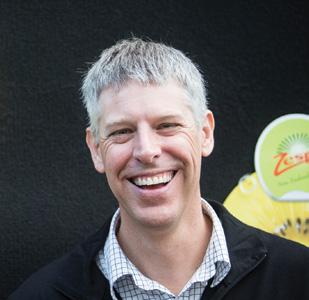
Reassuringly, there’s plenty in the report that we know already – we need to invest to implement new methane mitigation technologies, develop natural fibre products, accelerate ocean farming, support the adaption of dairy sector systems and so on.
But it is very big on making two frequently referenced (but often not much more than referenced) assumptions the cornerstone of what we need to focus on – that fundamental change (starting yesterday) will be compulsory if our agriculture sector wants to remain viable; and that those populating the highestvalue consumer segments will determine what
and how New Zealand farmers produce, rather than what and how farmers want to provide.

In summary, the :WELL_NZ report says that keeping our eyes on how high value consumers are spending will be the surest way to enable New Zealand to leverage its existing reputation for producing quality food. To support this, the report cites a prediction that over the next decade, 80% of consumption growth in Asia will come from the top two income tiers, contrasting the last twenty years, where consumption growth lay firmly in the middle-income tiers.
What do those in these wealthiest segments want from their food? Wellness, predictably enough. And the demand (and more importantly, the value) of products associated with wellness in a broad sense (well people, well environment etc) have grown fastest since the Covid pandemic set in.
Presenting at the BOMA Summit in Christchurch in June, AERU director Caroline Saunders indicated the findings from its most recent consumer insight work support this. For example, UK consumers of NZ lamb surveyed during the pandemic showed they were increasingly likely to pay more for
Dairy Exporter | www.nzfarmlife.co.nz | July 2022 15
“KEEPING OUR EYES ON HOW HIGH VALUE CONSUMERS ARE SPENDING WILL BE THE SUREST WAY TO ENABLE NEW ZEALAND TO LEVERAGE ITS EXISTING REPUTATION FOR PRODUCING QUALITY FOOD.”
Chair of the Te Puna Whakaaronui leaders group Lain Jager
LINK TO LATEST FIT FOR A BETTER WORLD 2022 UPDATE: fitforabetterworld. org.nz/assets/ publications/2022-Fit-fora-Better-World-progressupdate.pdf
LINK TO : WELL_NZ REPORT ‘REFRAMING NEW ZEALAND’S FOOD SECTOR OPPORTUNITIES’ fitforabetterworld. org.nz/assets/ Te-Puna-Whakaaronuipublications/ReframingNew-Zealands-FoodSector-Opportunities.pdf
natural food, that was good for the environment. Meanwhile, US consumers of NZ wine (especially millennials) were less interested in paying for country-of-origin but more for credence attributes like water quality, biodiversity management and social responsibility. (It’s important to remember that by 2030, millennials will have the biggest wallets).
In terms of the need to adjust to this smartly, :WELL_NZ is littered with language prompts that indicate we’re already falling behind moves made by other countries, and we’re in danger of missing out – not just on getting to choose markets before they’re colonised by others, but simply staying in the game. The report concludes that “we have a short window to invest and make progress”, and “making haste is critical.”
Stepping back for a moment and reflecting on the emotive pleas, you might say all positioning reports of this nature are bound to demand ‘we must act now’. And why, for example, are these pleas more significant than those that have gone before in reports that are now gathering dust?
Based on the collective authors being governmentbacked, as mentioned earlier, and given the esteemed heads behind the report, it’s reasonable to acknowledge there is some urgency.
All well and good, but how urgent are farmers - those who will still be doing the heavy lifting – to adapt with haste and capitalise on the opportunities, as prescribed?

Chair of the Te Puna Whakaaronui leaders group Lain Jager, also speaking at the BOMA Summit, accepts getting all participants in the food producing sector to recognise the opportunities that sit in front of New Zealand is a challenge, not least because its value as a future growth industry is still heavily contested. He noted there are three competing views on this – one that sees the primary sector as a sunset (rather than a growth) industry with an ageing workforce; one that sees food producing industries unavoidably associated with poor environmental outcomes and therefore farmers are not ideal stewards of our land; the third sees the sector as still booming, delivering 80 percent of the country’s mechanise exports based on use of the world’s leading farm systems. But rather than change, farmers need to be left alone to get on with doing what they do well.
Jager says part of the problem is there are justifiable arguments within all. The first two have been alive for some time, but regularly dismissed by those within the sector. The last one however might be the most difficult proposition
to overcome. Around the same time that the :WELL_NZ report was released the 2022 edition of KPMG’s annual Agribusiness Agenda 2022 was published. The authors noted this year it was ‘hard to know where to start’ when trying to distil the array of concerns that were expressed by the sector leaders. For some, the focus was the exceptional export returns (up 9% on 2021) and New Zealand continuing to win on the commodity cycle.
The authors (as does the :WELL_NZ report) indicate the impact of this could delay the motivation to take control of the things we can change to assist in creating a sustainable competitive advantage. Possibly the most challenging, and related finding in the KPMG survey was that respondents were more inclined to look inward than in recent years, and trained on domestic issues than outwards, at what markets were saying. It noted that “The one key element of any plausible future scenario that we might seek to explore does not feature in the Agenda because it did not feature in conversations – That is our current relationship with consumers and markets and things that are disrupting them as we move into a Covid adapted world.”
If the KPMG survey findings hold weight, the chance of a quick call to attention and ‘off we go’ advocated by Te Puna Whakaaronui seems doubtful.
It’s not putting Lain Jager off the task however, particularly the conviction that we must commit to environmental excellence involving a reciprocal relationship between people and the land because the opportunities this will open are huge. “Globally we’re failing to hit milestones and the outcomes of global warming are at the severe end of what was predicted. They’re very pronounced on food and fibre systems. So, there will be strong demand for our supply of natural foods if we take a leadership position on environmental stewardship.” Jager told the audience at the BOMA Summit it is a huge commitment, but Te Puna Whakaaronui is confident about its analysis that backs this up.
He didn’t hold back from emphasising the required rate of change towards producing what wealthy consumers want. Having set the ‘opportunities scene’, Te Puna Whakaaronui will deliver two follow up reports this year New Zealand on how we can orientate towards a producer of ‘modern foods’. This will include positioning on the emerging ‘personalised nutrition’ market as well as alternative proteins, where New Zealand is already falling behind other nations.
At the most basic level, having to contemplate, let alone implement change is a nuisance. Doing so in aid of concepts that we don’t know what they mean (modern foods) requires a huge leap of faith. But maybe not too huge.

Dairy Exporter | www.nzfarmlife.co.nz | July 2022
AERU director Caroline Saunders.
Farmers war in the Netherlands

Dutch farmers are taking to the highways in massed protests against nitrogen plans, Jelle Feenstra reports.
In the Netherlands, farmers are at war with the government. Farmers take to the streets en masse with their tractors. They block roads, supermarket distribution centres and stand on the doorsteps of politicians. They are protesting against the threat of halving their livestock numbers.
The direct reason for the actions are the nitrogen plans of the Dutch government. It wants to significantly reduce nitrogen emissions around 162 nature reserves and is allocating €25 billion ($NZ41.6b) for this. Measures for industry and transport will follow, but it is clear the livestock sector must make a significant contribution to nitrogen reduction. According to a calculation by the National Institute for the Environment, 40% of the nitrogen precipitation on nature reserves comes from livestock farming.
The government plans are causing great confusion. Many farmers, especially in the south and east of the Netherlands, where there are many nature reserves, have to halve their livestock numbers to comply with environmental regulations. According to the proposed nitrogen policy, farmers close to nitrogen-sensitive nature reserves should even quit completely. These are businesses that have been in families for generations. The government threatens to expropriate dairy farms if they do not want to cooperate in the buyout.
Farmers emotional and furious
The farmers are furious, for several reasons. There is great doubt, for example, whether nature really suffers so much from nitrogen. They also doubt that farmers are responsible for 40% of nitrogen emissions. In addition, the standards the Netherlands uses for the amount of nitrogen a nature reserve can have, are many times stricter than in all other European countries.
The standards are so stringent that even if all farmers disappear from the Netherlands, they will still not be met.
The agricultural sector also points out that many proposals have already been made to achieve nitrogen reduction, also in the short term. But these have not been adopted by the government. There is little space for technical innovations, while this is allowed in industry, aviation and traffic. As a result, farmers feel not taken seriously and treated unequally.
More farmers commit suicide
The lack of policy based on facts in combination with a total lack of discussion, participation and future perspective is now leading to strong emotions and protests. The unrest and uncertainty has surged in the Netherlands for a few years now. The suicide rate among Dutch farmers has been alarmingly high.
In the meantime, more and more citizens are joining the protest, because they believe the Dutch government does not listen to the people on other fronts as well. They suspect a double agenda, in which the government is not out to improve nature, but is out to acquire cheap farmland for housing. They fear the whole of the Netherlands will be filled with cities, roads and parks full of windmills and solar panels and that there will be hardly any space left for food production. Many farmers, especially in the south and east of the Netherlands, where there are many nature reserves, have to halve their livestock numbers to comply with environmental regulations. Political opposition parties are fiercely opposed to government policy. They mainly describe the nitrogen problem as a paper problem. While hard clashes are taking place between police and farmer protesters in various places, the government wants to deploy a mediator who should calm things down a bit.
Dairy Exporter | www.nzfarmlife.co.nz | July 2022 17 GLOBAL DAIRY NETHERLANDS
• Jelle Feenstra is an agrijournalist for Dutch pressbureau Langsdemelkweg.
Hard clashes between the police and farmers and other demonstrators are taking place in the Netherlands.
MANY FARMERS, ESPECIALLY IN THE SOUTH AND EAST OF THE NETHERLANDS, WHERE THERE ARE MANY NATURE RESERVES, HAVE TO HALVE THEIR LIVESTOCK NUMBERS TO COMPLY WITH ENVIRONMENTAL REGULATIONS.
Brazil’s environment journey
Brazil’s environmental legislation started in 1934, with early discussions in 1898. Native vegetation must now be preserved, currently at 20, 35 or 80% of the farms, depending on regional biomes (from southern grasslands to the Amazon basin, respectively), as well as hill tops, steep slopes (>45°), wetlands and riverbanks (up to 30m preservation on each side). Unauthorised killing of native animals, destroying native vegetation or illegally trading any of these are considered an environmental crime (1998), non bailable since 2012.
In 1975, Brazil pioneered the first large scale renewable energy programme ever adopted worldwide: PROÁLCOOL, a national programme that promoted the production and distribution of sugarcane ethanol and the creation and sale of 10 million ethanol vehicles. Today, there are no petrol only cars in the country, but flex-fuel cars, running on ethanol or petrol (Brazilian petrol has a mandatory 25% ethanol mixture and diesel has 14% biodiesel).
In 1978, federated states started regulating factory emissions (standardised nationally in 2007). In 1997, vehicle emission restrictions were enforced and became more stringent since 2002.

In early 1980’s, direct drilling was introduced (as part of the no-till agriculture) and is now used in more than 90% of cash crops, winter cereals and temperate pastures (98% in the case of soybean seeding).
During the late 1980’s, crop rotation practices and cover crops (“green manure” as they were called then) were adopted in large scale. Since 1993, burning of vegetation, including that of grasslands and sugarcane plantations, became largely
restricted and have since been replaced by alternative management and harvesting practices. Soil erosion, a major concern in the 1970’s, was thus controlled, with the added bonus of an increase in soil organic matter (“carbon sequestration” had not been coined yet).
In the late 1990’s, crop-livestock, livestock-forest, and crop-livestock-forest integrated systems were researched, tested in commercial scale and recommended. Crop-livestock systems were quickly adopted, while the other two alternatives only became commonplace in the 2010’s, including some very promising dairy farm initiatives, providing commercial wood, ample shadow for livestock, and carbon sequestration to mention only some of their advantages.
In 2009, Congress approved the National Climate Change Policy (the “PNMC” law), Brazil’s own voluntary attempt at mitigating greenhouse gas (GHG) emissions, which established the need for sectoral discussions and agreements, particularly energy, agriculture and transport sectors.
It also created the Brazilian Market for Emissions Reduction (the carbon market), but these are only considered ready to operate and fully regulated as of May this year, after a new piece of legislation which defined carbon credit, methane credit, stored carbon parameters, the national carbon emissions and reduction ledger, and the workings of credit transactions.
In 2010, Brazil launched the “ABC plan”
(“agricultura de baixo carbono”, meaning low carbon agriculture, in Portuguese), a large national initiative of voluntary adoption setting out guidelines and rules for farmers and growers to access its specific funding scheme (initially 5.5 then 7% annual interest). The programme was very successful, mitigating 170 million tonnes of CO2 eq., in 52 million hectares by 2020, or 327kg of CO2 eq./ hectare/year, a sum that was 46.5% above programme’s goals (note this is agricultural sector alone). Given its success, “ABC+”, a follow up of the original programme, was announced last June, with the aim of reducing the emission of 1.1 billion tonnes of agricultural CO2 eq. by 2030 (interest rates are currently being revised because of inflation, affecting global economies).
Today, Brazil runs its whole economy on 83% renewable energy, and growing, while the world average is only 27%. This sequence of achievements has not been easy, but it has been done primarily through research, innovation, education, consultation, and legislation. Whenever controversy dominated a discussion, this was overcome before advancing with legislation and in the rare moments when that was not achievable, adoption was made voluntary. Such is the case with carbon emissions in agriculture, and it is working (see graph).
18 Dairy Exporter | www.nzfarmlife.co.nz | July 2022 GLOBAL DAIRY BRAZIL
• Wagner Beskow is a senior dairy researcher and farm consultant with Transpondo, Brazil.
Words by: Wagner Beskow
Trend in per capita GHG emissions (CAIT Climate Data Explorer)
● Wagner Beskow is a senior dairy researcher and farm consultant with Transpondo, Brazil
Trend in per capita GHG emissions (CAIT Climate Data Explorer)
Pasture & Forage News
Picking winners for spring crop
Chances are you’ve already identified which paddocks on the farm need to be put through a crop in spring 2022.
Buffer your feed supply with fast growing oats & Italian ryegrass
How’s your farm feed budget looking for the new season? Have your pastures recovered enough to grow good grass through the season, or are they still showing signs of the hard autumn?
If you have a looming deficit, one way to get ahead is to sow fast growing Catch-crop+ in coming weeks. This will give you a bit of a home-grown feed safety net to reduce your reliance on imported supplement, and help lower your feed bill.

Our mix of Hattrick oats and Tabu+ Italian ryegrass is also – as the name suggests – an ideal catch-crop, soaking up excess nutrients left after cows have grazed winter crops.
Win:win
Extra cool-season growth from oats and Italian ryegrass can be grazed, or will help restore depleted supplements.

If you do run short, that growth will be cheaper than buying in palm kernel, and you don’t have to worry about price volatility or when it might be delivered. Hattrick and Tabu+ can both deliver a bulk of quality feed, just when you might really need it.
Keeps giving
Compared to oats alone, our field
trials show sowing oats and grass together after winter crop gives extra flexibility and better forage quality, with no downsides in cool season dry matter yield or nitrogen uptake. What’s more, you won’t end up with a bare paddock that needs to be resown straight after oats have been cut or grazed! Instead, you’ll have a productive pasture, with good feed quality and excellent yield through spring.
Saves time & cost
Oats on their own are a good catchcrop and provide useful bulk feed in a relatively short period of time, but they’re finished after one or two grazings or silage cuts, and need to be replaced.
Adding grass at sowing gives a high performance pasture for the next 12-18 months. That saves you the time, cost and tractor work needed to immediately re-sow the paddock after oats are finished. Talk to your seed rep about Catch-crop+ today.
For many, these will be the pastures damaged beyond quick repair by prolonged dry weather in summer and autumn. Some of these will have already been re-sown in fast short-term feed for winter and spring, e.g. Tabu+ Italian ryegrass. Others will have been left as they were in autumn, in which case now is the ideal opportunity to make sure they are wellsorted for spring sowing, with everything in place for great crop establishment.
Whether you plan to sow 501 Chicory, Dynamo turnips, Robbos fodder beet, maize or any other crops in a few months, good preparation now will make your life easier come spring.
Key areas to consider at this early stage of the process include soil testing and fertiliser planning. For winter crops, remember to make sure that physical paddock characteristics, like slope for example, meet your regional standards for intensive winter grazing.
Also check for weeds, and spray accordingly, especially if the pasture has really thinned out, and problem species like thistles have taken hold or spread in the bare patches.
Dairy Exporter | www.nzfarmlife.co.nz | July 2022 19
facebook.com/BarenbrugNZ barenbrug.co.nz @BarenbrugNZ
July 2022
Milk production; for dairy farmers, it’s one of the most common conversation topics. It can start from a weather chat or it can finish a weather chat, and no matter the weather, milk production is the key driver of revenue on farm. So, now we have data for the full 2021-22 season, you can all compare your season with the national average. Also, it is worth noting how the rest of the world is tracking on milk production, as it helps to give guidance on expected milk prices going forward.
As I’m sure you’re painfully aware, the 2021-22 season was a tough one; not one part of the country got through unscathed. Southland had a drought, Canterbury and West Coast farmers had floods and Waikato farmers had a gnarly long dry spell, interceded with a cyclone… the list goes on, but it wasn’t easy – not that any season is perfect.
Now, all those weather impacts combined have created a full season production figure of 1,869,078,000 kgMS of milk sent to all processors. This figure is 4.03% lower than the 2020-21 season. That’s a phenomenal figure, 78,548,000 kgMS less than the season prior, and only just squeaking above the 2017-18 season’s total figure. Comparing the 2021-22 season to the season prior isn’t exactly fair. The 2020-21 season was a bumper, potentially the greatest volume of milk to ever be produced in NZ (that is meant to sound like a challenge, by the way!).
In terms of volume produced in the season, production fell
Lower milksolids supports stellar price

A four percent drop in NZ milksolids production for the 2021/22 year and a tough year for overseas producers is supporting the great milkprice outlook for next season, Stu Davison reports.

4.24%, or 947,000 tonnes. To visualize that volume, that is 37,880 fewer 20ft containers of dairy produced in the season (assuming 25t of dairy per container, it’s not really that exact). And for further clarity, the full 2021-22 season’s production would take 855,720 20ftcontainers to move, very roughly. And with some google data, that would take 42 average container ships to shift the total 2021-22 season’s production, with roughly two ships less than the season prior. Of course this isn’t exact at all, just a guide for scale; what I’m getting at is that 4.03% less milk is a massive reduction!!
So, we had a tough season down here, but it must be noted that this has helped to support dairy prices over the last season also; some good with the bad. Now that we are dealing with winter, and counting the days until the herd starts calving again, what is the rest of the world looking like? Well, our biggest exporting competitor, the EU, is having a terrible time. Their milk production continues to decline; they have posted a year of negative milk production figures also. Key growth countries such as Ireland, Poland and Italy have recently hit a wall, and all countries are posting
negative growth figures. Why? Fuel, feed and fert, the three headline figures everyone is throwing around, are also impacting farmers in the EU. Added to these easy ones, environmental regulations are also punishing milk production expectations. Currently in the Netherlands, regulators are looking to buy farmers out of some areas, to stop farming all together, which will have a forever outcome on milk production in those areas. So, it is unlikely that the global supply of milk will be increased from EU farmers while we are in our milk production lull of the year. Likewise, US dairy farmers are struggling with high input costs, and uncertainty also. The environment isn’t really a big issue in the US, yet. The US is increasing exports of dairy, but are still really only playing in cheese, skim milk powder and whey. Milk production in the US continues to creep along, but not at the rates seen over the four years to 2021. So, overall, milk production globally is very constrained. NZ, the EU and the US are not turning on the taps as expected to the current high prices; there is too much downward pressure for farmers. However, this fact is also a key supporter of milk price expectations for the coming season. So, how did your production compare, and will you be aiming to produce more or less than the farm record this season? More importantly, can you exceed the farm record inside the current regulations?
20 Dairy Exporter | www.nzfarmlife.co.nz | July 2022 INSIGHT UPFRONT MARKET VIEW
Stuart Davison.
0 50 100 150 200 250 300 JuneJulyAugustSeptemberOctoberNovemberDecemberJanuaryFebruaryMarchAprilMay NZ
2017 2018 2019 2020 2021 2022 average
MilkProduction ('000's kgMS)



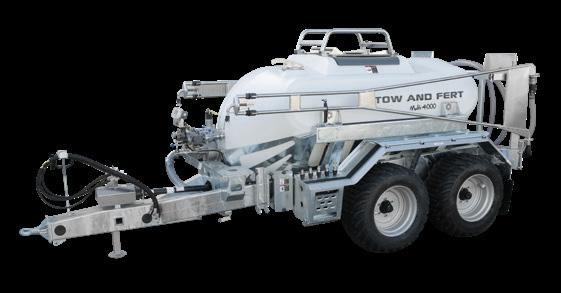


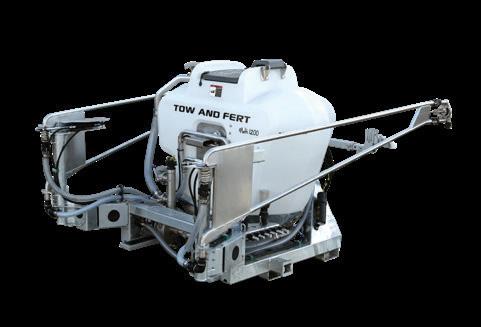
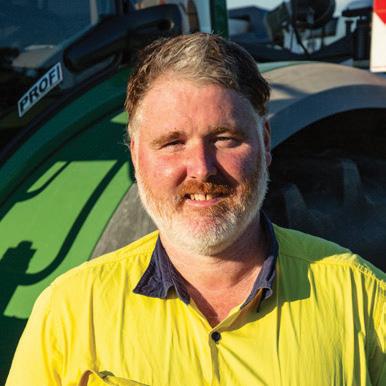
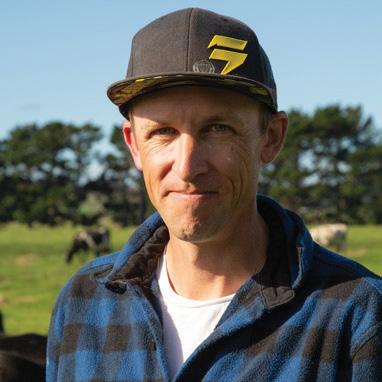
Dairy Exporter | www.nzfarmlife.co.nz | July 2022 21 For more information CALL 0800 337 747 or email us at sales@towandfert.co.nz www.towandfert.co.nz Available in 5 models. Tow and Fert. There is one for your farm. Multi 1000 Multi 500 Multi 2800 Multi 4000 DEMO Make the most of the high milk payout. Reduce your urea, apply multiple products in one-pass, including small seeds, and grow more grass with a Tow and Fert. FREE on-farm Multi 1200 A Tow and Fert is a SMART BUSINESS INVESTMENT We have been able to reduce our synthetic N to almost nothing and we are not tied into a high input system. With the cost of urea now, it’s a really good cost to avoid. Image shows a Multi 1200 in Victoria, Australia spraying a biological brew. Owen Billing, Dairy Farmer Tow and Fert Multi 1200 Owner We have been applying mag oxide, lime flour and other animal health products onto the pasture. We are 6 X less cost per cow in terms of animal health and we have staggering animal health. Geoff Bellamy, Dairy Farmer Tow and Fert Multi 1000 Owner “ “ “ “
CASH FLOW IS KING
Chris and Carla Staples bought their first farm four years ago and it looks immaculate. New shedding has been added, the dairy exterior looks swish and nearly half the 103 hectare (effective) farm has been regrassed. It has all been accomplished from cash flow, in line with their strategy throughout sharemilking and now farm ownership to focus on reducing debt and only spending money when there’s surplus in the wallet.
The couple always hung on to their long-term goal of farm ownership, despite the naysayers along the way who told them they were dreaming.
From a year working on a farm, Chris progressed to four years as a manager and then as a couple with two young kids they took on a lower-order sharemilking contract for four years, followed by seven years in a 50:50 contract.

“There’s a lot of work to get to farm ownership,” Chris says. “To get there you need to have made the decision early on in your career and have clear goals and a pathway to achieve it.”
Milking 360 cows at Whataroa in southern Westland, they won the West Coast-Top of the South Sharemilker of the Year competition in 2014. Winning that competition made them more aware of what they could achieve and that
22 Dairy Exporter | www.nzfarmlife.co.nz | July 2022
BUSINESS FARM OWNERSHIP
Dairy farming on the West Coast proves value for money, say Chris and Carla Staples. Story and photos Anne Hardie.
Chris and Carla grew from sharemilking to owner operators.
they were heading in the right direction for farm ownership.
“We wanted farm ownership and we were strategic in our savings programme,” Carla says. “We’ve always done the work ourselves rather than get staff in – if we could do it.”
Whenever they had extra money they were either buying stock to build up equity or repaying debt. Then four years ago, late in the season, a farm they thought would never be available came on the market at Kowhitirangi in the lush valley inland from Hokitika. It was a difficult time to buy a first farm. Banks were increasingly cautious about lending, especially to first farm buyers. But Carla says their Dairy Industry Award success definitely gave the bank more confidence about their forecasting.
“Our cash flows were always good and when we were buying a farm we could prove we could make money and pay off debt.”
Westland Milk Products was still a cooperative and payout for the 2018-19 season was between $5.80 and $6/kg milksolids (MS). A year later the Staples were milking for Yili after it bought the co-operative, with a 10-year guarantee to match Fonterra’s farmgate milk price, plus the purchase of shares.

For first-farm buyers budgeting on the cooperative’s payout which had been challenging for years, Yili was a lucky break. The cash payment of $3.41 per share went straight into debt reduction and their budgeting suddenly had a higher payout to work with.
They describe West Coast dairy farms as value for money. They have a price tag that is about a third of Canterbury dairy farms and don’t have the cost of irrigation. Production is about half, but overall the return on investment is greater. In Chris and Carla’s view, the West Coast is a good return on investment.
Four years after buying their first farm, they don’t have huge debt which means they are not stressing too much about increasing interest rates, despite being on a floating rate. It’s a risk factor, says Carla, but they are comfortable with that risk.
Each season they have a baseline budget for the business and if the payout is higher than expected, that is a bonus they will use to reduce debt first and then make improvements to their assets. By doing that, they aim to have more flexibility and fat in the business to cope with the unpredictability of payout, climate and government policies.
Dairy Exporter | www.nzfarmlife.co.nz | July 2022 23
‘WE WANTED FARM OWNERSHIP AND WE WERE STRATEGIC IN OUR SAVINGS PROGRAMME. WE’VE ALWAYS DONE THE WORK OURSELVES RATHER THAN GET STAFF IN – IF WE COULD DO IT.’
Chris and Carla decided early in their dairy career to aim for farm ownership.
The Staples had saved hard over the years to achieve their goal and to get the extra equity they needed for the purchase of the farm, they sold 160 of their cows, keeping the young stock with the best genetics in their herd. They had the scope as they were moving from a 360-cow herd to a farm that had been milking 230 Jersey cows.
Their own cows are Friesian crossbreds and so they have dropped numbers to 205 to compensate for Friesian-type cows on the heavy soils. It also fits their philosophy of fewer cows for more production. They begin the season on twice-a-day milking, dropping to 3in2 about March to lengthen the round and then once-a-day for the last month to build up condition and feed going into winter.
With limited inputs and pasture production about nine tonnes drymatter (DM)/ha/year, they reached 880kg milksolids (MS)/ha during the 2020-21 and 430kg MS/ cow. This past season it was back a bit to about 410kg MS/ cow after a particularly wet spring and ended up with a total of 84,000kg MS which is down a bit on their best season of 89,000kg MS from 210 cows.

In the past four years, Carla has detailed much of their progress through their Dairy Exporter’s Milking Platform column – and they have accomplished a lot. Apart from buying the farm, they have baulked at taking on more debt and everything has been done from cash flow. Though they recognise that down the track if they have to make a big purchase such as a new tractor, that won’t come out of cash flow.
Regrassing programme
In their first season, they upgraded the dairy building, including a new roof, cleared drains and subsoiled a lot of the farm to aerate and drain the fertile, but heavy soils. The effluent pond was enlarged to 600,000 litres and they began a major regrassing programme, much of it following the winter swede crop that is used to keep the cows at home. Much of the farm had not been regrassed for 20 years and regrassing is their way of becoming less reliant on imported feed.
In their regrassing programme they have trialled various ryegrass-clover mixes and this past season they have sown 10ha of the tetraploid ryegrass Forge, plus the diploid, Maxsyn, with a couple of different white clovers. It is more regrassing than they planned this year, but after the wet spring, they had a great summer and decided to keep regrassing while the going was good.

“It made us a bit short of feed in early autumn, but we’re fine now as the new grass has really taken off,” Chris says.
He likes to try the newer pasture species to find out what works best on the farm. The Italian ryegrasses weren’t lasting and he has high hopes for Forge. It is a new hybrid that is hard to source after a poor harvest of the seed in Canterbury, but they have enough to also sow this winter’s swede crop back into pasture.
Paddocks are sprayed out and fully cultivated before regrassing and are drilled using their own seed drill. They have purchased
Dairy Exporter | www.nzfarmlife.co.nz | July 2022
Nearly half the farm has been regrassed in the past four years.
all of their own equipment as the weather can often restrict the time available to get the job done. Most of the farm has been aerated in their four years of ownership to help drainage and reduce compaction.
In their first year on the farm, they soil tested every paddock which showed up a few areas that needed attention and fertilised each paddock according to the results. Last year they tested the entire farm again and the results showed the benefits of targeted fertiliser applications.
“It saves you money in the long run because you aren’t applying any more fertiliser than you need,” Carla says.
Last spring was so wet they couldn’t drive over the paddocks for a month and had to spread DAP over the farm by helicopter. It only took 45 minutes to get fertiliser on which Carla says was great for time management, but another cost. A high-rainfall climate means applying fertiliser little and often, including their nitrogen applications which are on target for the 190kg/ha/year cap.
They have also used the plant-growth regulator ProGibb SG which has enabled
them to halve the nitrogen applications in April and May. Chris premixes ProGibb and sprays it on the pasture, so it is a bit of work, but it is only for two months of the year and it gives the pasture a good boost for winter grazing.
Cows graze on grass and a break of the 6ha of swedes through winter with the swede crop yielding 16-18t DM/ha. If it gets wet in autumn, Chris says they start feeding the cows on the crop in May to build their condition going into winter.
They also make wet silage on the farm to feed to the cows whenever they need it through the year and this past season they made 210t to feed out on the concrete feedpad.

They have looked at putting a roof over the feedpad, but at this stage feel it would over-capitalise the small farm. Troughs on the feedpad enable them to feed an imported feed such as palm kernel if required.
Chris says they buy in feed if it is needed, but don’t want to be reliant on it, especially with rising costs. Like the price of fertiliser which has soared
Farm Facts
• Owners: Chris and Carla Staples
• Farm: 103 effective hectares at Kowhitirangi near Hokitika
• Herd: 205 Friesian crossbreds at peak
• Milking regime: Twice-a-day to March, then 3in2 and drop to oncea-day for May
• Production: 430kg MS/cow in 2020-21 season, 410kg MS/cow in 2021-22 season
• Wintering: Cows wintered on and fed grass, silage, palm kernel and swedes
• Bought-in supplements: 430kg DM/cow palm kernel, 239kg DM/ cow molasses in shed.
• Silage made: 210t pit silage
in the past season – doubled for the Staples - the price of palm kernel has risen dramatically. Since October it has risen from $300/t to $500/t for them. Though they still intend to feed some palm kernel through the year, it won’t be as much as the 100-150t per year they have been feeding between April and October. That covers preparation for calving and then mating.
Throughout the season, the cows are fed molasses in the dairy which helps cow flow and gives the cows extra energy when the weather is cold and wet.
Before the increase in palm kernel costs, supplements cost them 84c/kg MS for the 2020-21 season and that included making silage, calf feed, palm kernel and molasses.
It was part of their farm working expenses that tallied a moderate $3.73/kg MS – with this season still to be worked out and expected to increase due to higher costs of just about everything.
“We are really honing in on everything and being careful of what we spend,” Carla says.
Dairy Exporter | www.nzfarmlife.co.nz | July 2022 25
Chris and Carla have upgraded buildings from cashflow.
Better calves with ad-lib milk feeding
The Staples have never been afraid of trying something new and last season Carla decided to give the calves ad-lib access to milk. It meant the calves drank 70% more milk, but they grew faster and were weaned three weeks early.
“Seventy per cent more milk sounds phenomenal! But we had better calves that were quieter because it was like being reared by their mothers.
“When you typically go to a calf shed in the morning they are all going for it, but when they are ad libbing there’s absolute silence.”
The calves were fed whole milk that wasn’t destined for the vat, such as milk from the previously teat-sealed heifers. The calves were kept inside as long as possible, which was about five weeks, then transitioned on to the calfetaria in the paddock which took about three days. By early November they were all weaned because they had reached 90kg liveweight and that saved money on meal.
“The key for ad-lib feeding is never let them run out of milk. I always go over in the morning and top it up and then again in the afternoon. It’s a lot easier and time wise it’s a lot better. I had a pen of newbies so I could teach them to drink and then it’s just making sure they look like they have had a feed. They don’t overfeed because it’s more natural.
70% MORE MILk
Three seasons ago they began teat sealing the heifers to avoid mastitis. The heavy soils on the farm are great for holding moisture through summer but resulted in more mastitis cases in the spring due to their 4m-plus annual rainfall. Teat sealing has helped eliminate mastitis and its associated losses.
“It’s a nightmare of a job though. We do it when it has been dry for a while so the heifers are nice and clean. You have to be really careful about hygiene and we use lots of methylated spirits.”
It worked so well Carla intends to ad-lib feed the calves again this coming season. The calves stay on the farm until May 1 and through autumn where they have ad-lib access to the latest paddocks of new grass. By the time they head down to a grazier at Whataroa, they are huge. The same day, the in-calf heifers return to the farm for winter where they graze with the main herd. Chris says it gives the heifers time to adjust to the herd before the season begins.
“We put the whole lot through the shed once a week in winter and check their teats and teat spray and sometimes just let them walk through the (24-aside herringbone) by themselves.”
“Fun times in the shed,” Carla adds. Then at calving, each teat has to be stripped to completely remove the seal. It’s a hassle and a cost to teat seal each heifer, but Chris says the cost pales in comparison to possibly losing heifers from spring mastitis or having to cull because of lost quarters for the same reason.
The heifers calve toward the end of July, about 10 days before the rest of the herd so there’s a bit of time to “muck around with them” in the dairy before the rest of the herd calve and time is short.
Chris and Carla employ no labour, with a relief milker only brought in when they are away, so early spring is full on.

This season they have extended their calving to 10 weeks to get more cows in calf but will still have the same calving spread by using semen from shortgestation bulls for the last eight days of mating. They are strongly driven by breeding worth (BW) and production worth (PW), always nominating a bull to a particular cow to improve genetics in the herd. They reason that it isn’t a big cost to nominate a bull and you get what you want. Any cows they don’t want replacements from get Hereford straws at AI. The Hereford straws ensure a market for the calves and fewer bobby calves, with the same buyers taking their Hereford-cross calves for the past eight years.
The heifers have been artificially inseminated for the past eight years to improve genetics. This year they went one step further and used sexed semen for 75% of the heifers after a double PG programme and 60% of those resulted in successful pregnancies. They used frozen sexed semen which doesn’t get results as high as using fresh semen, but the heifers were in Whataroa so frozen semen was the only practical way of doing it.
“It costs about $55 for the sexed semen compared with about $25, but you only need one more heifer on the ground and it’s paid for itself,” Chris says.
26 Dairy Exporter | www.nzfarmlife.co.nz | July 2022
They aim at 50 heifer replacements a season which gives them good selection pressure for genetic gain and a younger herd.

Bulls go over the cows that are still cycling after five weeks of AI and that results in a small number of bobbies. They have looked at Hereford sexed semen to create more bull beef calves, but have decided to carry on the way they are for now. Carla says they are always looking at ways to improve everything they do, so they will keep their eye on options.
For the past two years the herd has had no intervention at mating. Cows are tail painted as they calve with different colours for each calving batch and that helps identify calving dates for then being metrichecked for uterine problems. Post insemination they then rely on Estrotect heat detection patches and that tail painting to identify any cows recycling. This season they also used
teaser bulls to help identify cycling cows.
Now that they have a smaller herd and there are just the two of them onfarm, they feel they have more consistency in identifying cycling cows and can record all natural matings after AI. When the cows are pregnancy scanned they also establish the age of the calf so they know whether the AI was successful or whether it was a pregnancy from a bull. Mating is an area they are always trying to make improvements by tweaking different things but mother nature sometimes has other ideas.
They’re happy with the way the season finished up though, considering the severity of spring and are now working on preparing the herd for calving and next season. As the farm improves and their debt goes down, they reckon it can only get better.

Dairy Exporter | www.nzfarmlife.co.nz | July 2022 27 dairynz.co.nz/wintering Let’s winter well for a better future Lying surfaces Fresh water Balanced diet Are your cows comfortable?
They dropped cow numbers to compensate for their Friesiancrossbred cows on heavier soils.
Engaging
your community
chairperson. “They came and went in an hour and we were able to engage with so many people and tell a good story. It’s much easier than people think.”
The dairy industry’s contribution to the economy through the early stages of Covid created a halo effect that was welcomed by farmers. Some feel that is waning now the talk has returned to environmental regulations, but DairyNZ’s chief executive Dr Tim Mackle says the organisation’s surveys show the public still looks favourably on the industry.
a photo on a Golden Bay community facebook page of the sunflowers blooming in their crop, 1,000 people liked the photo – nearly a third of the community’s population. When they posted an invite to the public to head to the farm for photos in the sunflowers and watch the cows head in for milking, more than 50 people turned up.


“We said who wants to come and shift our cows on Saturday?” says Wayne Langford who is Meat the Need cofounder and also Federated Farmers’ dairy
For the past 12 years, DairyNZ has carried out quarterly surveys of 750 people in the general population and though the industry probably peaked in the favourability stakes around 2010, the latest survey shows 61% of New Zealanders have a favourable view of the dairy sector and 63% have a favourable view of dairy farmers. The bulk of the remaining 37% had a neutral view and those with a negative view made up a small percentage of the population.
When it comes to trust, 65% trusted the sector and 66% trusted the farmers, while
28 Dairy Exporter | www.nzfarmlife.co.nz | July 2022 BUSINESS PUBLIC PERCEPTION
While the vocal minority are decrying farmers and causing angst in the farming community, Anne Hardie found it is a small minority and the majority are happy to engage with farmers - they just need to be invited.
90% of respondents agreed that the dairy industry contributed strongly to the New Zealand economy.

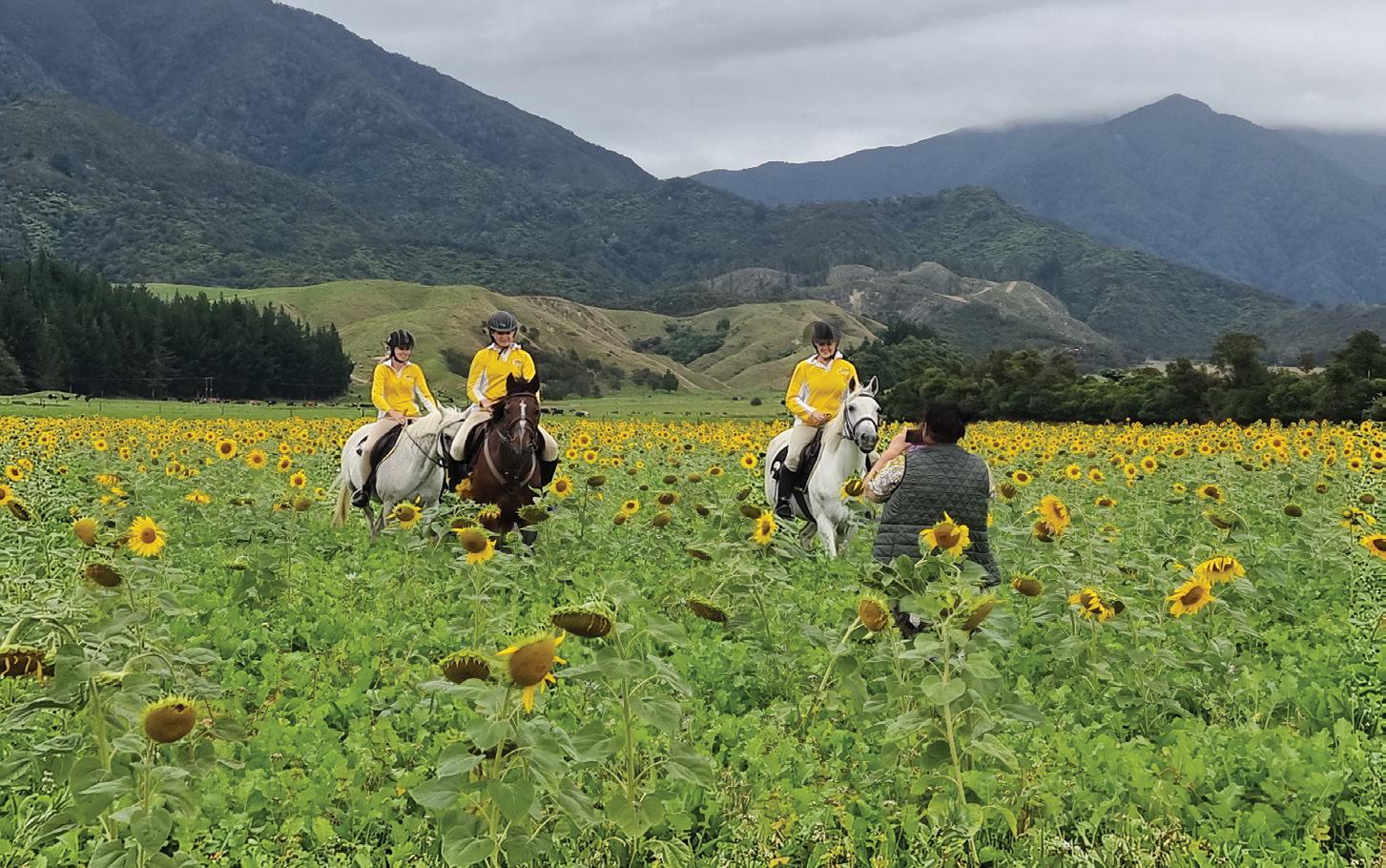

Mackle says there is no evidence that the industry is losing positivity and like so many issues, it is the detractors that make the headlines who are a minority of the population.
“We have work to do, no doubt about that. But I think it’s a lot more positive than people think.”
The Langfords took the bull by the horns three years ago after a water conservation order was placed on nearby Te Waikoropupu Springs and its associated water bodies. They decided that rather than be a target in their very green community, they would invite the community to be a part of their farm management team. They asked their community what their farm should look like by 2030 and how they saw that happening.
It resulted in 20 people joining their Farming 2030 group where they open not just their farm gates, but their books as well so the group understood the financial implications of decisions they were making. Since then, the group has held field days on the farm with hundreds showing up, plus planting days or simply taking photos of the sunflowers. As part of a wider sustainability workshop, they
talked to the community about what the group was doing and had a wider conversation about how their farming business could be more sustainable.
“When the community has that conversation, farming has to be part of it.”
The Farming 2030 group was also a way of involving the enormous expertise that existed in the local community and Langford says every one of the group members has had something to offer. That expertise was a resource they could use on the farm rather than trying to create an environmentally sustainable business on their own.
They discovered those who joined the group were excited about learning new things and positive about what they trying to achieve. A couple of them simply wanted to be heard and Langford says they had been listening to information within their own circle and were amazed at how different it was on the farm compared to how they had previously perceived it. Some left the group when they realised how long it took to make change on a farm and yet
Dairy Exporter | www.nzfarmlife.co.nz | July 2022 29 A monitoring solution that lives up to your standards and our reputation. Built to take the guesswork out of heat detection, improve animal health outcomes and save you time and money. Thinking of monitoring collarschoose a system that gives you confidence, and is delivered by an unbeatable support team from a brand you trust. Chat to your local Allflex Monitoring Specialist today 0800 255 3539 www.allflex.global/nz NZ-NON-220500003 THINKING MONITORING? THINK ALLFLEX
Left: Wayne Langford added just 2kg of sunflower seed into the summer crop and it brought the community to the farm. Above: The local pony club at the farm for sunflower photos. Right: Photogenic.
Langford says even after three years, they are really only just getting started.
“We’ve opened up our business. We don’t have anything to hide and admit we’re not perfect and have areas to work on. It’s working and evolving all the time.
“As a farming leader I can talk until I’m blue in the face and aren’t heard. But if the group can go back and talk about it, they can translate it to the audience they are talking to. It’s pretty rewarding when you go to a café and the woman behind the counter says I love what you are doing on your farm – it’s pretty cool. For some reason, the story of what we are doing on our farm resonates with people.”
He says public sentiment toward dairying and dairy farmers has definitely improved since Covid but is going through a “little tough spot” now as the industry works through the climate space. He puts that down to misunderstanding and the need to get the message right.
When people don’t understand how dairy farmers are farming and form a negative view of the industry, they can be angry and emotional when they confront farmers.
“The reason they are coming to you angry is because they are upset and emotional. You have to deal with why they are upset before you can deal with the problem.
“If someone is talking to you from their heart, talk back to them from your heart.

If they’re talking from their head and using data, then talk back to them from your head – facts and figures.” Langford says there is massive support for farming but the public often doesn’t know how New Zealand farmers are actually farming. He would like to see more farmers open their gates and let people see what they are doing on their farms.
“Some of the anti-farming movement is almost like a church or rugby club and if you were asking them to come from their rugby club to your rugby club, you have to give them real reasons to do that.”
Open Farms and Fonterra’s Open Gates days have been a good way to invite the public onto farms, though he would like to see more commercial dairy farms involved in Open Farms.
Mackle says DairyNZ needs to supply farmers with more facts and figures about the industry so they have the information to talk with their local communities, because it is important to have their support.
Just like the All Blacks, the dairy industry needs support from fellow New Zealanders to compete in the world market and the public has a big impact on decision-makers.
While it is important for business, it is also important to farmers, with DairyNZ’s farmer surveys listing public advocacy as one of the top three factors for spending their levy.
“They know it’s important to our sector
to have that support from a business point of view and it’s important to them also.”
In the quarterly surveys of the general population, the two main factors that interest them in farming are the environment, followed by animal welfare.
Mackie says New Zealand dairy farmers know they are arguably the world’s best, but there’s a big chunk of the population who don’t know that and the industry has to find ways to connect with that silent majority that sit in the middle of the bell curve.

He says they may not be the influencers, but that’s where the political vote matters.
DairyNZ’s ‘Here for the Long Game’ campaign is aimed at helping New Zealanders better understand and connect with dairy farmers. Part of that is setting up stories between media and farmers to tell their story to Kiwis who are busy with their own lives and don’t have the time to make long-term views.
Farmers are increasingly telling their story on social media and he says that has been a good way of portraying the people in the industry and the emotion that is attached to their stories, which is every bit as important as telling the facts.
Though farmers often hear the negative dairy farming stories, he says part of that is they are simply sensitised to hearing those stories.
The organisation monitors the media every month and the negative stories range between seven and eight percent.
“We tend to see those stories and don’t see all the positive stories.”
Though there is a lot of noise out there at the moment, he personally thinks there is a growing awareness in the wider community about the importance of the dairy industry.
“But we always have to up the ante. It’s a collective thing.”
“IF SOMEONE IS TALKING TO YOU FROM THEIR HEART, TALK BACK TO THEM FROM YOUR HEART. IF THEY’RE TALKING FROM THEIR HEAD AND USING DATA, THEN TALK BACK TO THEM FROM YOUR HEAD –FACTS AND FIGURES.”
The only ACVM registered intra-ruminal calcium bolus for the prevention and treatment of subclinical hypocalcaemia and as an aid in the prevention and treatment of clinical hypocalcaemia (Milk Fever) in cows.
Backed by NZ peer-reviewed trial.1
Keep on top of the calcium drop.

Treat Subclinical Hypocalcaemia
• Fast Action
• Sustained Release
• Targeted Individual Treatment
Bolus Technology
Calpro Bolus dissolves completely in the reticulorumen. The coating of the bolus protects against irritation of the epithelial surface of the throat and oesophagus. Furthermore, the bolus has a neutral taste, which makes it easy to administer.
Calcium chloride is rapidly absorbed, and the calcium sulphate is absorbed over a longer period.

1.
Calpro™ Bolus is registered under the ACVM Act 1997 No. A011667. Calpro, Elanco and the diagonal bar logo are trademarks of Elanco or its affiliates. Elanco New Zealand, 106 Wiri Station Road, Manukau, Auckland 2104. www.elanco.com | 0800 446 121. © 2022 Elanco. www.calprobolus.co.nz PM-NZ-22-0101 Calcium Sulfate 23%
release) Calcium Chloride 56% (Dissolves rapidly) Wax coating dissolves in 50 minutes
KI Roberts, J Bennison & S McDougall (2019) Effect of treatment with oral Ca boluses following calving on concentrations of Ca in serum in pasture-based dairy cows, New Zealand Veterinary Journal, 67:1, 20-26, DOI: 10.1080/00480169.2018.1520654
(Slow
VET
ONLY
™
RUNNING ON EMPTY




No one likes to see young healthy animals loaded on to trucks and sent off to the works.
By the same token, should cows that are otherwise healthy and producing good amounts of milksolids be culled simply to make way for replacement heifers.
Along with the time and effort that goes into producing young dairy heifers, should we be trying to accommodate them more if they fail to get pregnant again in their first or second season?
As the industry grapples with reducing waste and “ethical” farming, some farmers are looking at ways to change the system and give animals a second chance at a longer life.
Delwyn Dickey reports.
32 Dairy Exporter | www.nzfarmlife.co.nz | July 2022
SYSTEMS EMPTY COWS
LIVING THE GOOD LIFE – FOR FARMERS AND COWS
For Chris Falconer, who farms 250 hectares in Waerenga, North Waikato, the answers are pretty clear. He sees a change is needed in the system. Not only is there too much waste but the system also fails the animals on which it relies, he says.
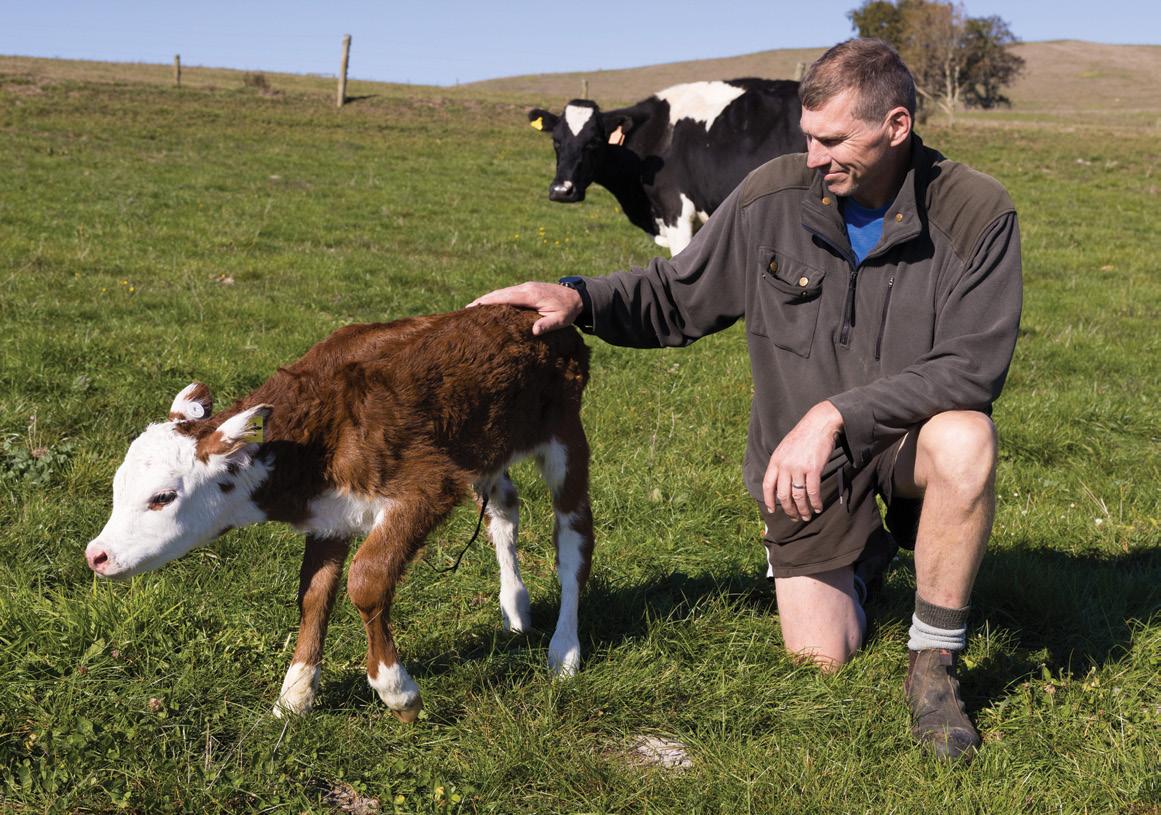
Chris feels the animals should not just be treated well onfarm, but should also have as long a life as can be afforded them within a commercial operation.
Chris hasn’t bought in many in-calf cows for a few years. He goes almost exclusively for empties at the sales and they must have recent herd tests and records. There are plenty to choose from, he reckons, as farmers look to quit empty cows in January and February. He is looking at getting them in-calf again, and is happy with the in-calf rates for them.
“This last year I bought 21 empties, out of a herd size of about 330. I sent 17 cows away as cull cows for all sorts of reasons. The annual replacement rate is about 8%.”
Chris’ reasons for buying cull-cows are economic, environmental, and altruistic.
“The cows were two, three and four years old. They were high indexed, had low somatic cell counts and good udders, with an average price of around $900 each. They are still averaging 1.25kg/day of milksolids (MS).”
The animals’ body condition is also a big part of the decision on which animals he buys.
Cows in good condition are often thrown out to make way for young heifers – there’s nothing wrong with them other than they haven’t got into calf.
The other category of cows he looks for are underweight animals.
“These cows were about 3.5 and were obviously “undergrown” as heifers,” he says.
“The three to six weeks after they calve is their highest energy demand for their yearly cycle effectively. During their highest period of demand, we’re also going to demand the most from them by demanding they get in-calf,” he says. “The two things are not necessarily compatible.”
Jimena Yapura, Senior Lecturer in Anatomy and Physiology – Animal Reproduction, Massey University, agrees.
Body condition has a lot to do with how a cow’s body copes with milking after calving, but also if they can get pregnant again, she says.
“A body condition of five at mating is the magic number for calving. A lot of the milk cows produce for their calves in the first six to eight weeks, and especially the first 10 days, doesn’t come from their diet, rather they metabolise their own body tissues –mostly fat but also some protein.
“It takes eight to 10 weeks before use of body reserves and feed input equalises, and the cows’ body condition starts to improve. By this time, they are likely to have dropped 1 point on the body condition scale – hence the need for a 5 or above body condition starting point,” she advises.
Because low body condition affects the cow’s fertility ahead of mating, it is a good reason to keep the animals in good condition throughout the year, Jimena says.
“You can coax a cycle if you supplement cows in a post-partum period – and may reduce the number of non-cyclers you have in a herd, but this doesn’t always translate into fertility,” she says.
“While you can get the ovaries to wake up when they’re thin, and the cows will show signs of heat, if they’re significantly compromised short-term supplementation won’t overcome the effect poor body condition will have on the performance of the animal,” she says.
Chris is critical of farmers who allow their animals to lose body weight to such a degree in the first place.
“It’s an incredible waste of resources to have these good young cows with good genetics’ go off to the works because we stuff it up,” he says.
Dairy Exporter | www.nzfarmlife.co.nz | July 2022 33
Chris Falconer only produces calves for beef production.
Giving the cows in poor condition time to get their body condition up is one of the keys to the success of his herd replacement ethos.
The farming operation, which includes once-a-day milking, is a low-pressure environment which Chris feels his cows appreciate and tend to reward him for. Age also isn’t on the list for reasons to send an animal to the works.

“A lot of chasing average herd breeding worth/production worth goes on. I’m not interested in those numbers. I’m interested in the cows having a life for their own sake beyond what I need.
“If they’re healthy and getting in-calf, age is not a consideration. I never cull a cow on age.”
There is year-round once-a-day milking on the farm, and also split calving. This sees him less concerned about the carry-over time as he aims for mating in the next block. They will be held over for another six months if their body condition is still not up to scratch.
“I’m not prepared to chuck them away because we need to work on them more,” Chris says, although he acknowledges they’ll be going to the works if they fail to get in calf the following round.
In an effort to reduce waste Chris doesn’t produce any replacement heifers. At mating, artificial insemination (AI) to Speckle Park is used in the first cycle and then their own Hereford bulls for the next. This sees six weeks of mating with no interventions.
Chris likes to think the cows get into calf because they take the heat off them.
All calves are destined for beef production making bobby calves a thing of the past.
“There’s a strong market for feeder calves in April and May. I get more for my feeder calves in April than in September. There’s a scarcity thing going on but also, they’re really healthy animals. Raising animals in the autumn is a breeze.

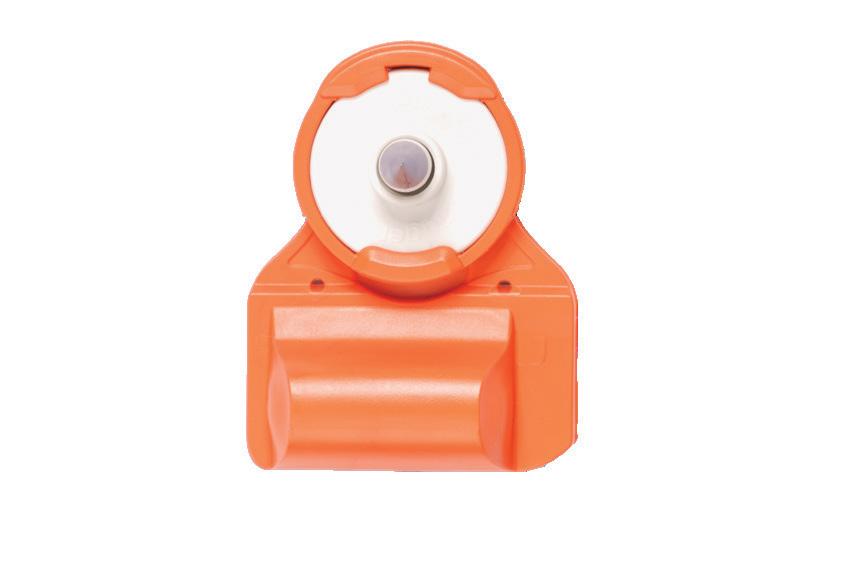
“Most people won’t be able to tell you how much replacements cost – or think they know but they don’t. It could be anything from $1500 to $2500 but they don’t know. I know exactly what mine is because I get an invoice.”




Above: With no calving season work life should be less stressful. Left: Virtually all the cows Matthew Herbert will be contract milking will come onto the farm as empties.

34 Download the Demo App: Accuracy. No Less. Precision heat detection is what you get with CowManager’s leading fertility module. 07 280 5798 | www.senztag.co.nz
“While you can pick up good animals at the yards, we want to develop a relationship with breeders and take on their empties every year.”
GIVING THE GIRLS A SECOND CHANCE
Matthew Herbert has just started his new contract milking position at the beginning of June.
Recently an associate director on the board of DairyNZ, Matthew has long been an advocate of more sustainable dairying.

His new farm has recently changed hands and been bought by a small group of friends who have gone into partnership. Just one has a background in farming. They plan to do something a bit different in terms of the farm system, giving empty cows a second chance, making it more efficient, labour-friendly, and a good lifestyle for the people they’re employing as well. Situated at Piarere, between Cambridge and Tirau on State Highway 1, the 340ha farm sits on rolling country. It will have 450 cows at peak along with grazing young stock for other farms and some beef cows as well.
From day one the formula is to use other people’s in-milk empty cows that would otherwise be culled, Matthew says.
Matthew reckons he might bring in a few special cows in-calf, but the herd will be primarily made up of in-milk empties. While there is also the humanitarian side to giving these young animals a shot at a longer life, the main business focus is on getting the cows in-calf again to sell on, while also getting high milk production from them. If they don’t get into calf, then they will be milked for as long as they are producing enough to be economically viable before sending them off to the works. The operation will be using Jersey animals with the herd average purchase price of $750 each.
Cull Jerseys generally fall in the $600 to $800 range, Matthew says, compared to an in-calf heifer at around $1600
to $1700 each. To raise a calf through to herd replacement level, and do a good job of it, would cost at least $1300, he reckons. The cows will be expected to produce 550kg of milksolids per animal for a year.
“This is quite high for a cow that’s already done 7 months’ lactation by the time she gets to us and will be hard for a Jersey cow to do,” says Matthew. “We are feeding a lot of maize silage plus a PKE blend. Once she’s been sold then we will bring in another empty to replace her.”
Rather than underweight animals they’re looking for good quality cows where the only problem is they turned up empty. For this reason, they will be buying high-quality animals off breeders.
“While you can pick up good animals at the yards, we want to develop a relationship with breeders and take on their empties every year.”
“We’ll look into history of the cows before buying them. Good cow families, good history of the maternal line. Looking at breeders who take pride in their breeding, reared them well - they just turned up empty. In most systems they’d be culled out but we’ll continue milking them,” he says.
The operation should also make working on the farm less stressful for staff. While there will be milking twice a day, with each animal only staying on the property for 12 months, and minimal calving, people should be more relaxed with no huge days or late nights in the shed.
“We have the option to get a small number of cows in-calf, let them calve, then bring on a small number of heifers. But it would be a small amount, 10 to 20 perhaps. But would only be the best or pet cows or something.”
But the big winners will be the main herd of cows, Matthew says.
“Once in-calf they’ll have that opportunity for an extended life in another herd.”
Dairy Exporter | www.nzfarmlife.co.nz | July 2022 35
BUILDING A SHAREMILKING HERD WITH CULL COWS
Soenke and Antje Paarmann are 50/50 sharemilkers in Okaihau, in the Bay of Islands.

When they were getting their original herd together and as they expanded, along with buying good quality cows, the couple also bought empty cull cows and in-calf budget cows.
“It was all about budget,” Soenke says, “getting the average price down. We averaged out at $1650 instead of buying a whole herd at $2200.”
Rather than going through stockyards for the cheaper empty cull cows, they went through a stock agent who sourced them directly from the farm after they advised what they were after. Their carryovers came from five different farms.

“We only bought empty two or three-year-olds. If you buy a five year old and get her back in calf as a
six-year-old you only get a maximum of two years out of her. Younger makes it more economical,” Soenke advises.
The empties were sent out to graze somewhere else before getting into calf again and being ready to be milked. Being able to raise the calves was also part of the strategy.
“One farm we were working on had really high production worth (PW) figures,” Antje recalls. The owners were weeding out cows to send away as they had so many young replacements coming through.
“The empties would go first, then the ones that were a little older, three teaters, that kind of thing. Even though they would have gone to the yards they were still better than in the average herd.”
By offering a generous amount for grazing, Antje and Soenke were able to convince the owners, who wanted to send the animals away earlier, to let them remain on the farm until the end of the season.
“They were a bargain for us - high breeding worth (BW) – in-calf and cull cows. We paid cull price plus grazing to get them through to June 1.”
At a time when there had been a drought two years in a row, they bought 100 carry-over cows from a beef farmer. He had taken on good quality empty cows that were underweight, grazed them back into good condition, got them in-calf and then sold them on for the next season.
“He’d look at their paperwork and wouldn’t buy old or low PW cows. He had an AB technician to inseminate them - two IV for two weeks and then they went out with the bulls.”
There were real advantages for the couple building their herd this way. While a few of the cows turned out to have fertility issues, others remained with the herd for six or seven more seasons.
But they would think twice about introducing animals from so many different sources into their established herd now, because of disease.
“There’s a bit of a biosecurity risk involved from getting so many cows from so many different places,” Soenke says.
36 Dairy Exporter | www.nzfarmlife.co.nz | July 2022
Top: Soenke and Antje were able to become sharemilkers through savvy purchases of cull cows. Above: Cull cows made up about 70% of the original herd.
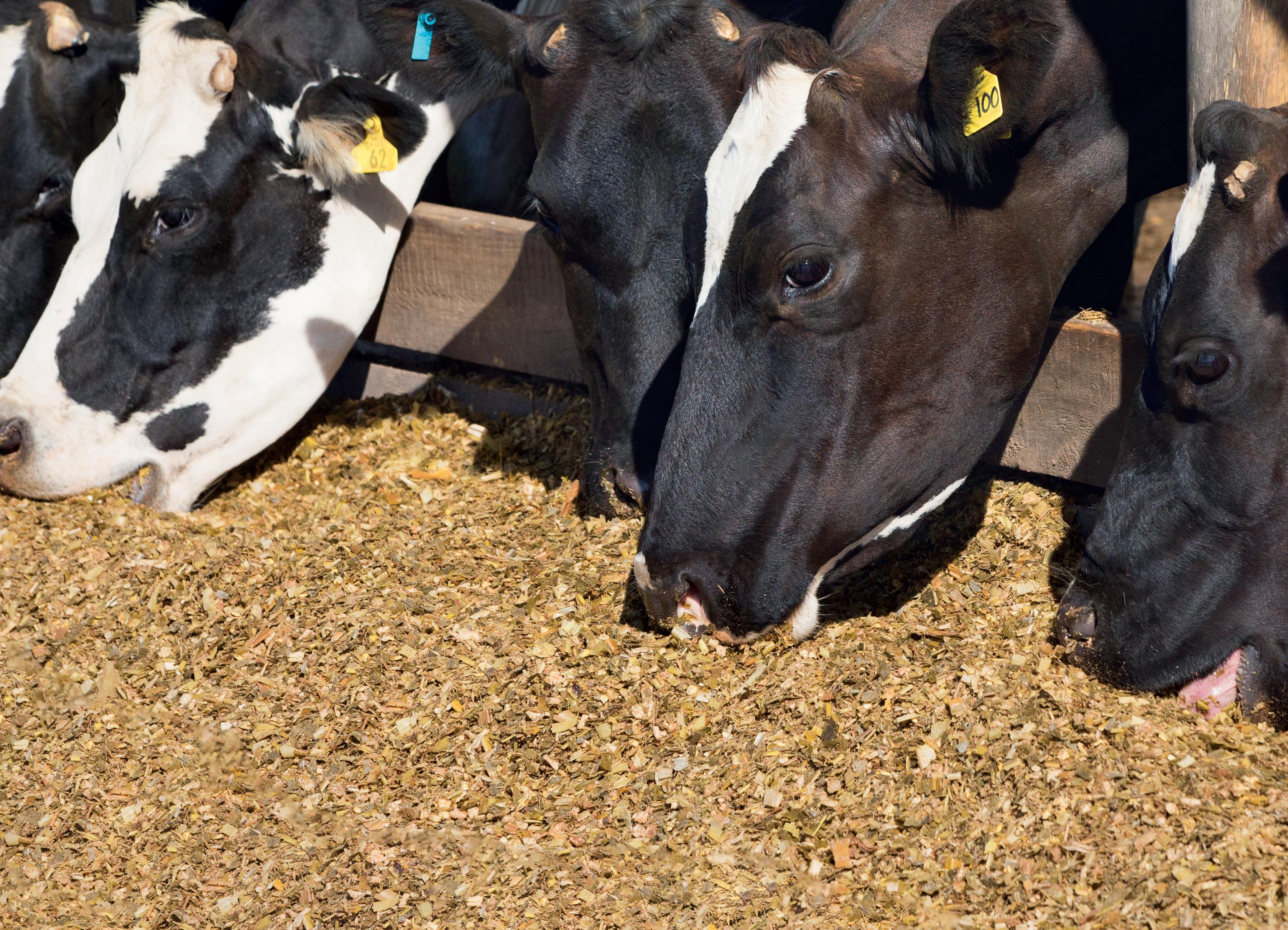





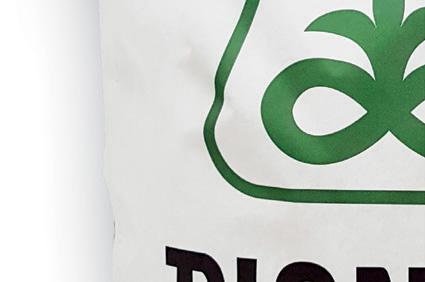

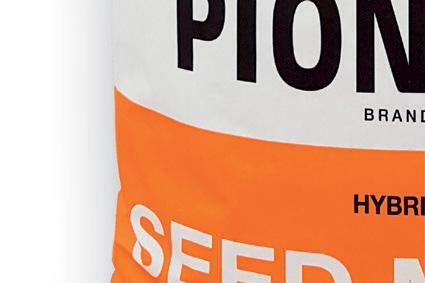


Dairy Exporter | www.nzfarmlife.co.nz | July 2022
Grazing by C
degrees
allum and Twyla Kingan will continue intensive winter grazing (IWG) their dairy runoff near Oamaru even though the slopes on the limestone hill country easily break the 10-degree slope rule which comes into effect later this year. A SIDE workshop in early June visited the farm to see the Kingans’ dairy cows grazing fodder beet on a 25-degree slope.
“We’re hoping to apply for a 10-year consent with Otago Regional Council for winter grazing the whole block and the cost of that spread over the 10 years will probably be the same as several bales of balage for the year,” Callum said.
“We need to be able to winter crop these slopes. It’s an integral part of our business which is why we’re going to pay the money and apply for the consent.”

Although the slope was steep, they were doing everything they could to mitigate issues.
Cows are grazed from the top down on the slope with a sheltered grass paddock at the top if the weather turned bad. Critical source areas such as drains and swales were uncropped and would be left in grass, as were the steeper faces.
Tillage at planting was across the slope instead of up and down to minimise soil movement if it rained heavily before the crop was established.
“Health and safety becomes an issue in the winter if it gets wet when taking a tractor up there.
“You can slip around a bit so we placed the balage and hay out in the autumn when it was dry,” Callum said.
The fodder beet where the balage was placed was lifted first and fed out.
“I actually worry more about winter grazing the flats at the bottom of the hills because if they get wet during winter, they stay wet while the hill dries out again quickly.”
As part of NOSLaM (North Otago Sustainable Land Management), Callum has been doing farm environment plans for 16 years so was used to filling out a winter grazing plan.
“I get my colouring pencils out. It’s just another admin job you’ve got to do.”
DairyNZ lead advisor solutions and development Justin Kitto said having a written plan showing how you were going to graze a winter crop area was now crucial if things went wrong.
“If you have it written down beforehand you can show you had reasonable intentions of what you wanted to do. It shows you’ve thought about it before you did it.
SYSTEMS WINTER GRAZING
The Kingans hope to overcome the rules on slope grazing. Story and photos by Karen Trebilcock.
38 Dairy Exporter | www.nzfarmlife.co.nz | July 2022
“It can’t just be in your head any longer, it has to be written down.”
Winter crop grazing plans must show slope and grazing direction, the prevailing wind and shelter from it, critical source areas and buffer zones, gateways, water troughs both permanent and portable, balage placement and all fences including how break out fences and backing fences were to be used.

They should also show the transition plan for introducing the cows to crop, how cow health was to be monitored, feed budgets and how calving on the crop was prevented.
A plan in case of adverse weather and wet soil also had to be written down.
Justin said slopes could be measured using a slope app on a phone or by tying a piece of string to two fencing standards.
Regional councils were preparing to accept winter grazing consents earlier than government’s November 1 deadline as they recognised winter crop throughout the country would be planted by that date.

“I understand Otago Regional Council
will have the application form on their website in the near future,” Justin said.
He said it was unlikely government would change the rules announced in late April.
“The feeling is they have conceded a lot already by taking out pugging and the date when crop paddocks had to be resown by.
“However, what government has decided upon is only the minimum standard. Regional councils can impose stricter rules on top of them if they think they’re needed.
“We don’t want those bad images from the past of cows standing in mud out there again.
“They were taken out of context but people overseas when they see them don’t know that and they question what we’re doing.”
The SIDE workshop also visited Peter Smit’s farm nearby where he is wintering 200 cows also on fodder beet but near his dairy.
“This used to be a border-dyked farm and there is a gradual slope towards the
road and one year in five we do get a flood and water ends up sitting there at the bottom,” Peter said.
However, Justin pointed out the road drain was not a critical source area as it did not lead to a waterway. Peter was using a portable water trough with a 100m crop face. Large straw bales would be placed in the paddock if bad weather was on the way for shelter for the cows.
“We haven’t had snow in 10 years but it can happen and the prevailing wind can be pretty bad especially when its wet,” he said.
Because of the stony ground he was more concerned about nitrogen leaching than sediment loss and planned to plant an oat and annual ryegrass mix to replace the fodder beet when the cows finished each block, if the weather allowed it.
“We did that last year and it worked well and we ended up feeding it to the late calvers.”
Nitrogen leaching was the reason why he had chosen to plant fodder beet instead of kale and he had been heartened to hear how recent research shows the tap root of mature fodder beet reached down more than a metre absorbing nitrogen.
“The oats we grew last year following the fodder beet certainly looked nitrogen deficient, so it shows what we’re doing is working.”
‘We need to be able to winter crop these slopes. It’s an integral part of our business which is why we’re going to pay the money and apply for the consent.’
Dairy Exporter | www.nzfarmlife.co.nz | July 2022 39
Above left: Farmer Peter Smit with his fodder beet crop grown under irrigation near Oamaru. Above: Cows winter grazing on a 25-degree slope near Oamaru.
Alltech ONE addresses key areas of dairy farming
 Words by: Chris McCullough
Words by: Chris McCullough
Dairy farming is a complex business to run as the management processes are always changing, as is the technology used to run a herd.
Long gone are the days of simply putting clusters on teats and hoping the white stuff in the tank is of high enough quality to achieve a good price.
Nowadays, the thought processes of dairy farmers venture more into data collection, breeding future goals, precise cow diets and daily costs.
While mobile phones continually buzz and ping as new herd data enters the clouds, farmers are bombarded with new ideas, technological advances and the latest dairy thoughts.
This was apparent at the Alltech ONE conference in Kentucky, United States,
when a number of experts addressed some key points in dairy farming today.
Dr Eduardo Ribeiro, an associate professor in the Department of Animal Biosciences at the University of Guelph, highlighted how decisions made during different cow lactations can help shape her future.

First Dr Ribeiro explained that for the ideal transition period, a cow should have a dry period of about 40 to 50 days, a moderate body condition score, have a single calf without any problems, and maintain a good appetite.
He later went on to highlight how postpartum clinical issues such as retained placenta, metritis, mastitis, lameness, digestive and respiratory problems affected production.
“The incidence of clinical diseases is around 50% during the 305-day lactation. But most of those cases are occurring early in lactation. So by 60 days in milk, approximately 40% of the cows will have at least one clinical disease, and by the end of the third week, by 21 days in milk, 30% of the herd will have at least one clinical disease.”
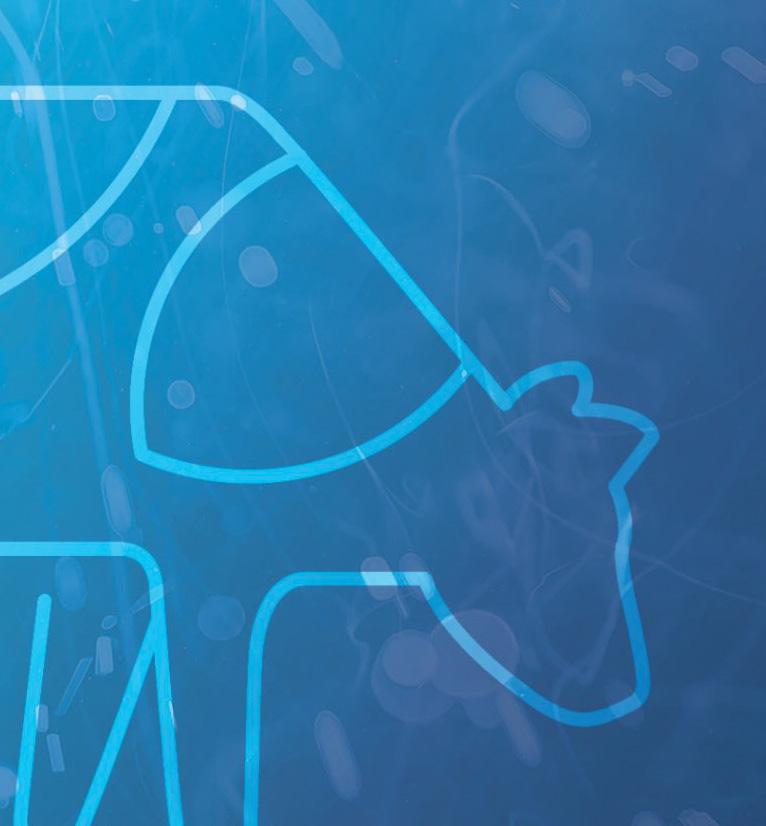
Dr Ribeiro added that although most cases can be treated successfully, the cows won’t have the same performance in the next lactation as they would have without having that disease. Prevention of these diseases in the first place was the key to ensuring healthy cows and lactations in the future.
“And that can be done in a multitude of ways. It can be through genetic selection of the animals that perhaps are less susceptible to disease or more resilient. It could be an investment of infrastructure and providing more comfort and less stress for cows during transition. Or it can be in management in general, which might include simple things like feedback management, or body condition score monitoring.”
The ultimate recycler
As more than 85% of feed consumed by livestock cannot be utilised by humans,
dairy cows, therefore provide a critical link in the food chain.
Dr Vaughn Holder, Alltech ruminant research group director, discussed how important livestock is in converting byproducts to meat and milk for humans to eat. He examined food security and how the protein sufficiency of countries was an important measurement tool indicating if there was enough protein to sustain the population.
An interesting fact delivered by Holder was when discussing protein types.
“Now look at where the protein sources are. You’ve got tofu and eggs and farmed fish, poultry, pork, and soy milk being about the same. Grains and milk and cheese are about the same level of greenhouse gas production.
“When you go into these extensive systems where we are using large, foragebased production agriculture, you are going to have higher greenhouse gases just because of the nature of those fermentations.”
But Holder’s point was that the animals on these larger systems utilise feedstuffs that the rest of that production system cannot use.
“The dairy and the beef industries are using large quantities of byproducts. They are contributing to food security by converting things that we can’t eat or won’t eat into things that we can eat.”
The differential between animal protein and plant protein was also stressed. Holder made the argument that the digestibility and the amino acid composition of plantbased crops was not very good for humans.
“The average milking dairy cow in the United States eats 12kg of byproducts each day. About 8kg of drymatter every day.
“On average, 320g of byproduct per kilogram of milk produced. There’s a lot of byproducts going through dairy cows in the United States.”
In the end, the gist of Holder’s presentation was that the dairy cow is the ultimate recycling machine converting fibre and poor quality protein sources to meat and milk that are more suitable for human consumption.
40 Dairy Exporter | www.nzfarmlife.co.nz | July 2022 SYSTEMS CONFERENCE
Dr Eduardo Ribeiro.
Dr Vaughn Holder.







Dairy Exporter | www.nzfarmlife.co.nz | July 2022 41 Coppermax™ Capsules, Coppermax™ and Flexidine™ are Restricted Veterinary Medicines (RVM). No: A004943, A007789, A007790, A007791, A009469, A007866. Only available under veterinary authorisation. Face-Guard™, Prolaject™ and Selovin™ are registered under the ACVM Act 1997. No: A009773, A010198, A010744, A005850, A006170, A006536, A006903, A006139, A009509. Face-Guard, Coppermax, Prolaject, Flexidine and Selovin are trademarks of Elanco. Elanco and the diagonal bar logo are trademarks of Elanco or its affiliates. Elanco New Zealand, 106 Wiri Station Road, Manukau, Auckland 2104. www.elanco.com 0800 446 121. © 2022 Elanco. PM-NZ-22-0082 www.prolaject.co.nz Prolaject For the treatment and control of cobalt deficiency in both sheep and cattle. VET ONLY For more information see our website or scan the QR code. Prolaject B12 TM Buy ANY and be in to WIN! Terms and Conditions apply. *RRP $578 Airfr yerEssential XL* PHILIPS
Minimising the wet effect
Story and photos by: Karen Trebilcock
The wet is the “Achilles heel” of Paul and Dani Hardegger’s 175-hectare effective dairy farm at Isla Bank in Southland.
So much so, three years ago they built a standoff pad for the cows and since then have seen milk production go up, animal health improve and minimal damage to pastures.
“From May until October a tractor doesn’t go on the paddocks,” Paul told farmers at a Southern Dairy Hub event in early July.
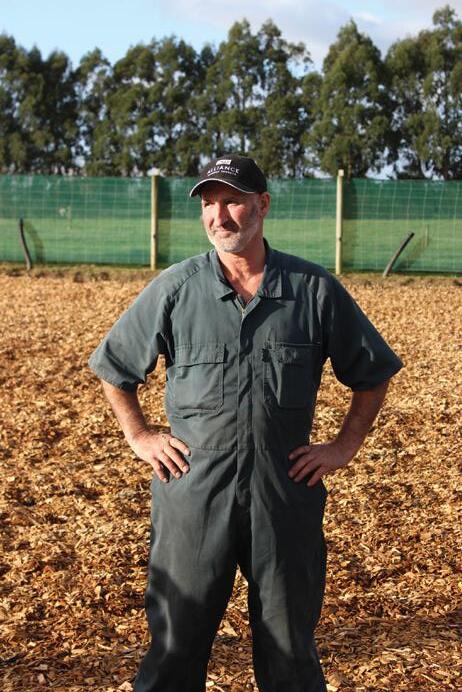
Aiming for 305 days in milk for his 550 cows, early calvers are dried off on May 29 with the rest of the herd on June 9 before wintering near Te Anau.
The heifers start calving July 15 with the cows a week later but in May, June and in July and even through to September or October, if the weather is bad, the cows are nowhere near the paddocks.
Instead they’re on the standoff pad.
“When it’s wet here, there is nowhere to hide.”
Built before the first Covid lockdown, they dug down to the clay base “hard as anything”, laser levelled it to get the right fall, and then filled it back up with a metre of wood chips.
A short wall stops the woodchips flowing on to the concrete feed area and in the centre is a concreted lane for silage to be fed out.
The two sides are divided into sections so mobs of springers, colostrum cows and heifers can be kept separate so they can flow into the dairy one after the other.
The cost was close to half a million dollars.
“We looked at putting a roof on just over the concreted area and that was going to cost three quarters of a million so we decided not to.”
A hedge on one side and wind cloth on the others provide shelter.
The wood chip has a network of drains under it and floodwash of green water cleans the concrete feed areas when needed. An ATV fitted with a scraper helps during the half hour job.
“We use greenwater because I was worried we might overflow the effluent
tank. If it comes out of there, I know we can put it back in.”
The bark chip is aerated once a week with a tine cultivator with half of the tines removed and every summer the top 20cm is lifted and spread on to paddocks.
“Under that top, the chip is clean so it stays and we just top it back up with new chip each year,” Paul said.
The cows are fed silage made at the farm’s nearby runoff with straw added pre-calving to provide bulk for rumen development.
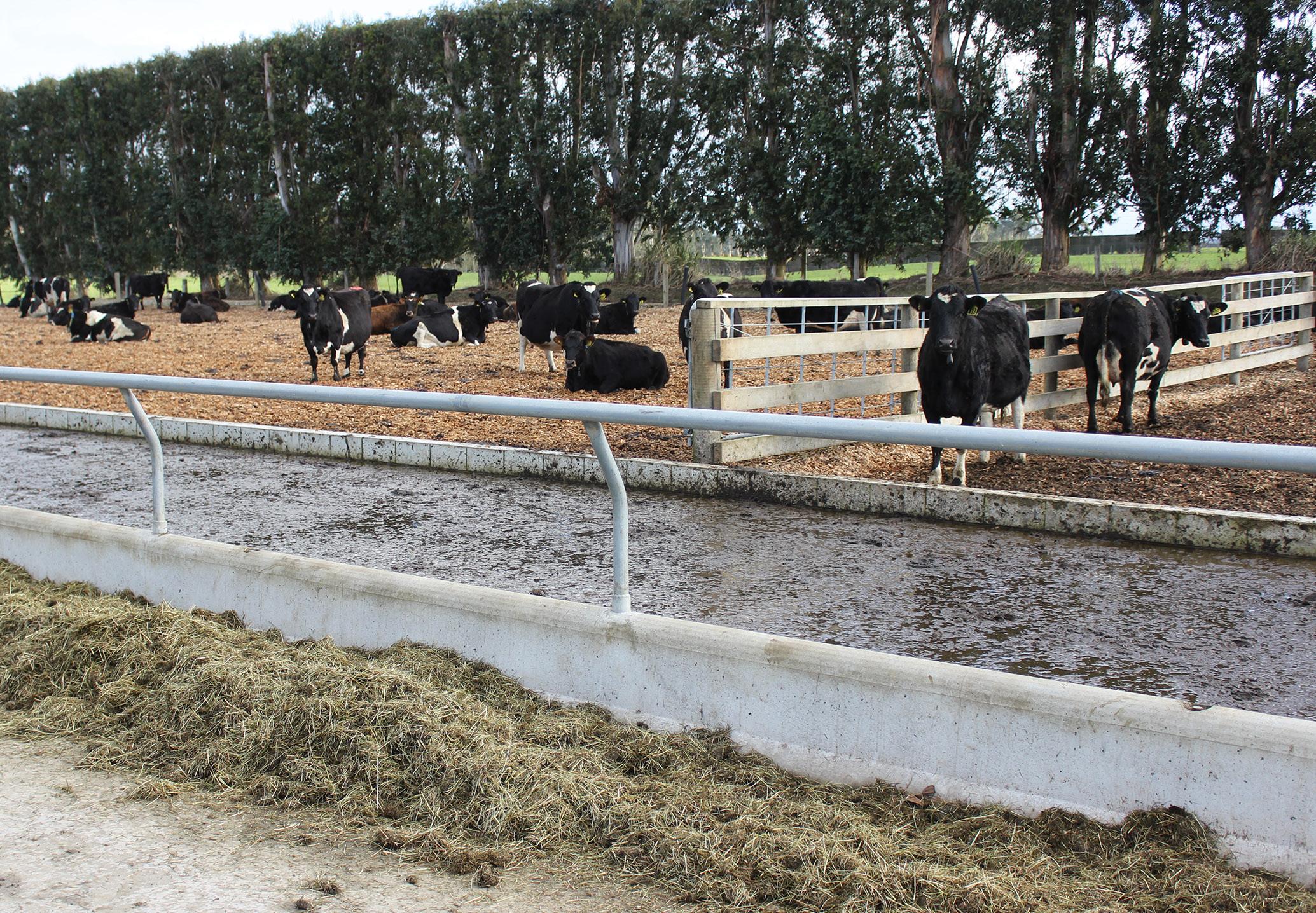
“There’s very little wastage, not like feeding it in a paddock.
“We put collars on the cows last October so we’re really looking forward to seeing the rumination data this spring. We’ll be watching it to make sure it goes back up after calving.”
Springing heifers on the pad are introduced to the rotary platform and fed grain and teat sprayed.
“It just means they’re more settled after calving. It’s not all new for them.
“We really thought we’d get more mismothering on the pad but it has been the opposite. We DNA test and before we used to get about 96% correct-mothered and now it’s at 98%.
“The floodlights go on throughout the night and we’re thinking that helps.”
42 Dairy Exporter | www.nzfarmlife.co.nz | July 2022 SYSTEMS SOUTHERN DAIRY HUB
Far left: The standoff pad next to the dairy used by the springer heifers in early July. Left: Isla Bank farmer Paul Hardegger.
‘WE LOOKED AT PUTTING A ROOF ON JUST OVER THE CONCRETED AREA AND THAT WAS GOING TO COST THREE QUARTERS OF A MILLION SO WE DECIDED NOT TO.’
...is happy to ‘talk up’ the benefits of his JCB SERIES III to his contracting business. We challenged him to see the advantages of owning a second one.

Here’s what he said...
Jeff Robinson of Three Rivers Contracting in Southland relies on his JCB SERIES III AGRI to speed up operations, both in the yard and out in the field. In fact Jeff loves his JCB so much, we thought we’d drop off a brand spanking new JCB SERIES III AGRI SUPER, leave it with him for a day and return the next day to see if he would consider the benefits of having two JCB’s in his fleet. Already familiar with the efficiency, manoeuvrablity and speed of his JCB LOADALL, Jeff was in no doubt how much his operation would benefit from having a second one.
WHAT COULD YOU DO IN A JCB SERIES III LOADALL?
SEE THE FULL STORY & MORE INFO AT JCBAGRICULTURE.CO.NZ

Dairy Exporter | www.nzfarmlife.co.nz | July 2022 43
LAN 2601
JEFF ROBINSON
“ IT’S GREAT FOR DOING JOBS WE CAN’T GET A TRACTOR TO DO.”
It pays to order your Corson Maize seed early.
Recently awarded 2022 Waikato Dairy Manager of the Year, Andrew ’theonceadayfarmer’ Macky has built up quite a following. With just under 14,000 subscribers and collectively over 2 million views on YouTube and Instagram worldwide, to garner a following like Andrew’s, passion is key. The passion for dairying he shares with his audience is the same passion he has for growing maize with Corson Maize.
To watch the video of Andrew’s story visit corsonmaize.co.nz
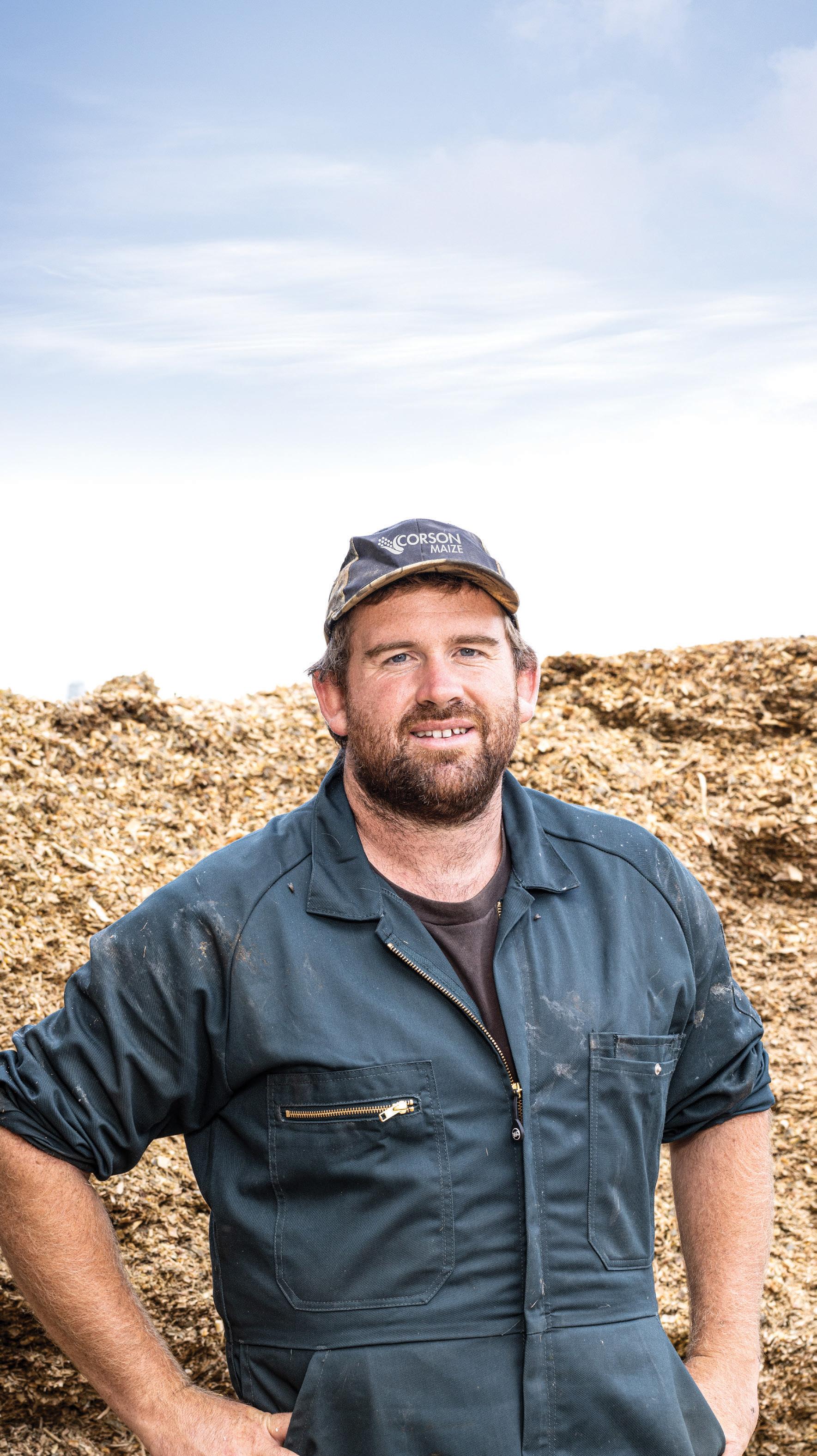
44 Dairy Exporter | www.nzfarmlife.co.nz | July 2022
BEFORE 31 JULY AND GET: Preferential hybrid
100% replant cover
in to WIN 1 of 20 seed vouchers to the value of $1,000**
ORDER
choice** Deferred payment options*
* Be
Come on over and grow with us. 0800 4 MAIZE (62493) or visit corsonmaize.co.nz *Ask your retailer. Offer is subject to your retailer’s credit criteria and approval. ** Terms and conditions apply. Ask in store or visit corsonmaize.co.nz for details. PWS 2214 ANDREW MACKY @theonceadayfarmer
SPECIAL REPORT
COSTS CRIMP RECORD PAYOUTS

RIGHT PRODUCT AT THE RIGHT PRICE

PAYING THE PRICE
CONTROL WHAT YOU CAN
KEEPING THE GRAIN FLOWING
Milk prices may be breaking records, but the breakeven price has also soared as input costs ramp up alongside global events. Anne Lee reports.
With record milk price forecasts and the futures market soaring over an eyewatering $10.20/kg milksolids (MS) mark it could seem that warnings to take action to protect profit margins are unnecessarily pessimistic.
But we’re living in unusual times. The global pandemic is still casting a “long Covid” pall over world economies, labour markets and supply chains and the effects of Russia’s invasion of Ukraine have struck a fire under fuel, fertiliser and feed prices.
So while milk prices have climbed to new heights the costs of producing it have rocketed along the same trajectory.
It seems staggering that a breakeven milk price could hit $8.75/kg MS but that’s the number Wairarapa-based dairy consultant Chris Lewis of BakerAg has arrived at for the coming season in the company’s long-standing budget model.
It’s what’s needed to cover the cost of milk production, along with interest and debt reduction, tax, drawings and asset replacement allowance or depreciation.
It seems high, and it possibly is because farmers are already reacting to higher input costs and making adjustments to how they farm but the purpose of Chris’
exercise is to illustrate what the outcome would be if the lower North Island, 160-hectare, 395-cow, modelled farm continued to use the same level of inputs this season.
“We’ve maintained our fertiliser and feed inputs at a status quo level so we’ve borne the brunt on their higher costs and we’ve made adjustments to labour costs to reflect rising wages and a push by farmers to try and get more labour onfarm.
“We’ve also made assumptions on actively managing tax to lower that cost but we’ve increased interest rates.
“Farmers who have done a breakeven milk price analysis will have had that wake-up call that they should be looking at what they’re doing in their business this season because the margin they thought should be there may not be.
“We’re not saying people are going to lose money this season but we are saying be careful – look at what’s happening to the margin - how it could be squeezed by these higher costs.
“Knowing your breakeven cost now will help inform your management and mean you can take action and plan accordingly.
“Do nothing and the breakeven milk
SPECIAL REPORT COST CONTROL
46 Dairy Exporter | www.nzfarmlife.co.nz | July 2022
price could soar along with the payout.”
The budget shows a hike in farm working expenses of almost 14% taking the total farm working expenses to $6.49/kg MS for the modelled farm.
That compares to $5.63 for the 2021/22 season and $5.12/kg MS for the previous season.
“If we take positive action to manage some of the price increases, we won’t hit that $6.49 figure but if we go blindly into the season we will or worse – and that’s before interest, tax, drawings, wages of management and depreciation.

“The 14% increase we’re seeing in this season’s budget comes on top of a 10% increase in the year we’ve just finished.
“We’ve been a little sheltered in the year just finished because a number of cost rises didn’t come in till part way through the season.
“We’d already paid for our spring nitrogen before last season’s price rises started and we’d paid for winter grazing costs right at the start of the season and we’d contracted in feeds like palm kernel and locked-in prices.
“This season we’ll get the full brunt of that 10% increase with another 13.7% increase on top.”
Fertiliser
Fertiliser has seen the biggest leap in prices, jumping 23% on the previous season’s budget.
Chris’ budget has assumed a continuation of the farm’s maintenance fertiliser and lime policy with a 300kg/ha application rate of sulphur superphosphate and 138kg/ha of nitrogen applied as urea.
“We’ve already seen farmers cut nitrogen application rates back significantly and get smarter in how they use it.
The Lincoln University Dairy farm (LUDF) has shown how it’s been able to maximise the response to nitrogen and reduce the amount it puts on by grazing at the third leaf stage.
The slightly longer rounds and reduced number of grazing rounds across the season that result meant that, with a policy of applying nitrogen after cows, nitrogen application also reduced.
Skipping applications during the hottest periods when response rates are lower can also lower use with minimal impact on pasture growth.
Chris says most of his clients are now talking about how to get nitrogen use down even further below the nitrogen cap of 190kg N/ha for each paddock.
“Talk to your fertiliser reps – be proactive about what you can do so you’re putting the right nutrients in the right amounts in the right places.
“Start the conversation with a set budgeted dollar amount for the season and ask them to come up with a plan that will give you the best option to achieve the right nutrient status for that price rather than bringing in the bulky and putting on a blanket rate across the farm and then living with the cost. Having comprehensive soil test results for the whole farm will enable more cost-effective fertiliser management plans to be drawn up.
Dairy Exporter | www.nzfarmlife.co.nz | July 2022 47
Table 1.Purchased feed sensitivity analysis
Feed cost increases will vary depending on feed type but for the modelled farm, which buys in palm kernel expeller (PKE) and silage but makes its own baleage and hay on farm, feed costs have risen by almost 15%.
He’s used a budgeted PKE price of $550/ tonne up $100/tonne on last year’s budget, adding another $14,100 to costs.
Silage is budgeted at 35c/kg drymatter (DM) – up from the 33c/kg DM last season increasing costs by $5700.
Baleage and hay costs have gone up by about $15,000 with some of that cost due to refilling the hay shed after last season’s dry autumn and the rest due to increased making costs.
Chris has put the cost of baleage at $80/ bale and hay at $95/bale – hay costs are $20/ bale up.
Calf rearing feed costs have jumped by $25/ calf in the budget to $150/calf.
“We are seeing some people reviewing their farm system as a consequence of higher feed prices –particularly if they’ve been using some of the more expensive feeds.
“They’re saying rather than chasing milk price by intensifying my system – as we’ve seen in the past when milk price has been high – maybe I should try simplifying it.
“We’re seeing costs of grain in Southland for instance hitting $650/tonne crushed and in the silo, and that may see some people change from being all-season feeders to just feeding it on the shoulders.”

The purchased feed sensitivity analysis for palm kernel (see table one) shows the red zone where the cost of using the feed to produce a kg MS is above even current high milk prices.
In some regions farmers have good feed inventories carried over while in other areas the dry autumn depleted them.
“In those areas where they have feed inventories, we know that smart use of them during the spring as a means to keep pasture covers to target through calving can be a good way to reduce the amount of more expensive imported supplementary feed fed at that time.”
The hikes in fuel prices – particularly diesel are being sharply felt and will likely be passed on in part at least to farmers indirectly as well as from suppliers who also bear that cost.
In terms of Chris’ budget, vehicle costs have lifted 10% compared with last season.
Some savings may come from actively encouraging staff to think about being efficient and effective with their movements around the farm and doing the same with trips to town that come under the farm.
Larger savings could come as a result of reducing tractor movements but that’s likely to be as part of a wider farm systems change driven by more significant costs such as bought-in feed use.
Utilisation of DM 90% 80% 65% 50% KgDM feed req to make 1kgMS 11.1 12.5 15.4 20 PKE Landed price $/t PKE c/kg (@90% DM) 450 0.50 $5.56 $6.25 $7.69 $10.00 500 0.56 $6.17 $6.94 $8.55 $11.11 550 0.61 $6.79 $7.64 $9.40 $12.22 600 0.67 $7.41 $8.33 $10.26 $13.33 700 0.78 $8.64 $9.72 $11.97 $15.56 800 0.89 $9.88 $11.11 $13.68 $17.78 900 1.00 $11.11 $12.50 $15.38 $20.00
How much does it cost to produce 1kgMS from PKE? Vehicle expenses – fuel 48 Dairy Exporter | www.nzfarmlife.co.nz | July 2022
FEED
Expertise that works for you

These days it seems everyone has an opinion on what’s best for your farm - but opinions aren’t facts.
Local knowledge, good science, technology and expertise matter. Which is how our environmental consultants bring insight and experience to compliance conversations.
Besides, you know what they say about opinions ... Talk to the team that works for you. Your Ravensdown environmental consultants.
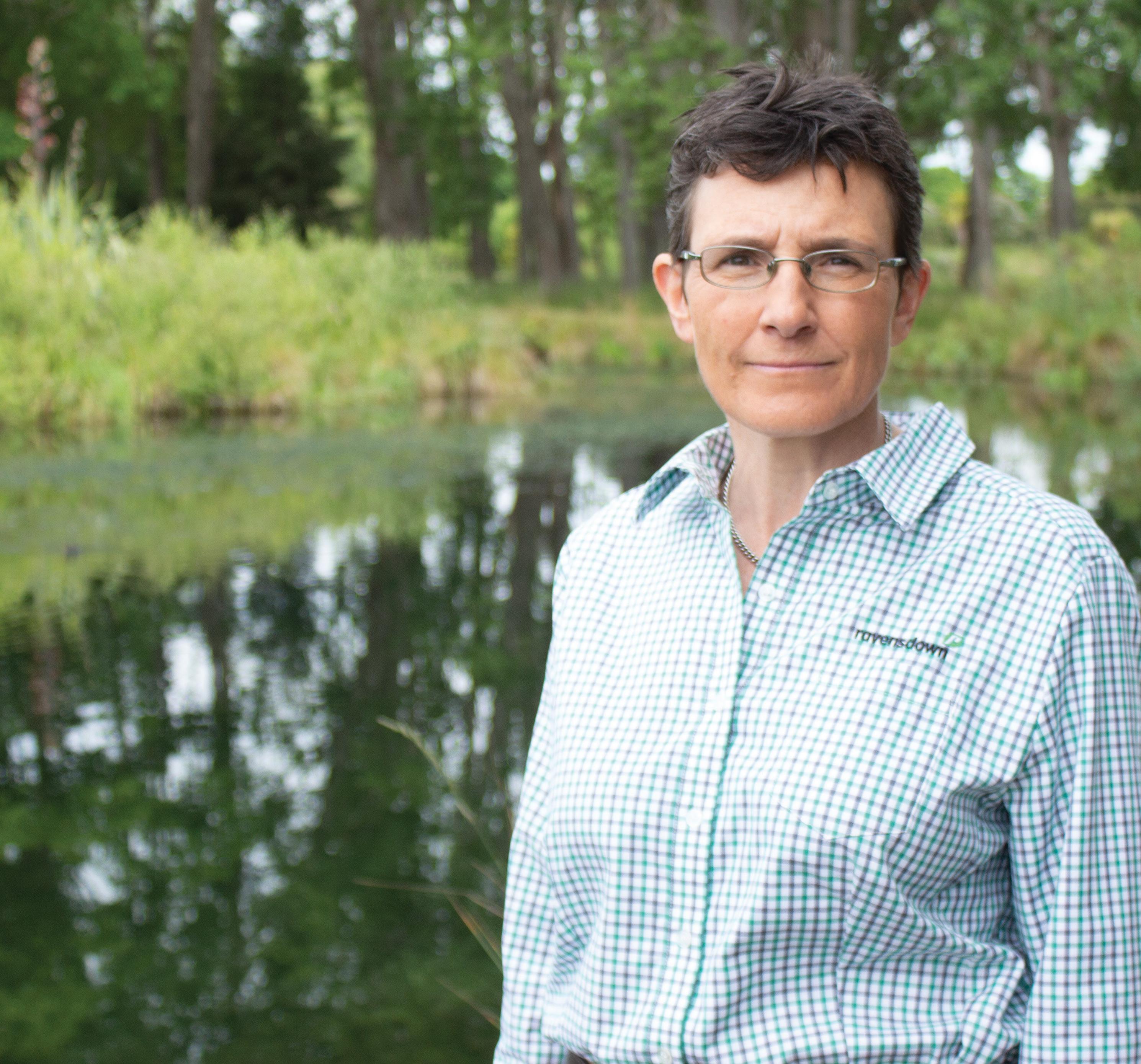
Dairy Exporter | www.nzfarmlife.co.nz | July 2022 49 0800 100 123 ravensdown.co.nz Smarter farming for a better New Zealand™
Environmental RAVJUL2022-DX 7
WAGES
The cost of wages has escalated through the season and is continuing to climb.
Many farmers have been running at a full labour unit equivalent down over the last two seasons as a result of a dire labour shortage across many sectors due to widespread effects of Covid restrictions.
Chris says wages costs have climbed significantly for this season because of both an increase in wage rates and farmers working hard to find additional people.
“If they can find them, farmers are getting back up to fully staffed levels. They’re having to pay more for people coming on to the farm and they’re increasing wages and salaries for existing staff too.
“I’m generally seeing about a 7% increase in wages if staff numbers are staying the same but we’re seeing a genuine move to find more relief or additional staff where people can get them and for that reason on our (modelled) farm we have an increase in staff cost of 10.7%.
“On a larger farm than our example farm we would expect people to be trying to get back that 0.5-1 full-time equivalent.
“We’ve seen capital expenditure over the last couple of years on technology like cup removers to help ease some of the workload pressure that’s come on with the people shortage.
“We’re also seeing clients now buying or looking at collar technology.
“It may not necessarily mean you’ll save on wages because you’re already running below the full complement of staff but people are looking at how they get the best out of the people they have – how they can be more effective and efficient given the wages and salaries they’re on.
“We’re seeing more farmers upgrading their housing for staff – a lot of paint and new carpet going in, kitchens being renovated.
“Farmers recognise that staff retention is hugely important – you might not get anything back directly from new carpet but there’s a big cost to having people move on and never more so than now.
“Turnover means not just those direct costs of recruiting people and probably having to pay more but there’s a loss in onfarm efficiency until new people are up to speed with the farm and systems.”
Investing in people in terms of training and investing in good people management and leadership is also a way to improve efficiency and reduce wastage onfarm.
“Things like lean management systems – you might not save on wages but the savings on other things right across the board can be substantial. From things like having to buy fewer pigtails to people doing their pasture walks and feed allocations more accurately that then results in an extra 50kg MS/ha – it adds up.”
other costs
$$$
- interest, principal, tax, capital and drawings
Interest rates have been on the rise and Chris has factored in a lift of 1.25%/year for the budget which equates to a 23% increase in total interest cost for the year.
Principal repayments have been reduced in his budget by 50% from $100,000 to $50,000.
Every farmer’s scale and situation varies as does their risk profile and the expectations from their bank so good communication is required to ensure no surprises for either party.
Chris has assumed active tax management with good communication with the accountant which has allowed a 44% drop in tax cost in the modelled farm situation.

Drawings have been maintained at last season’s rate of $125,000 although this is up from $95,000 in the 2020/21 year.
Chris’ budgets are based on the financial year – as per farmers’ accounts and include the milk price payments made within that period.
Last season’s washup payment therefore flows into the current season so milk income is the advance from the current season with last season’s washup payment along with any other co-operative difference payment given the modelled farm is a Fonterra supplier.
It means that, based on Fonterra forecasts, the milk income is down slightly for the 2022/23 year.
The rising costs and slightly lower in year milk income means the final budget gives an operating profit that’s 70% down on last financial year.
Towards the end of June, it was possible to hedge milk on the futures market at more than $10.20/kg MS.
“We can’t say whether it’s a good time to fix or hedge a portion of your milk price but we can say farmers should get good advice on it,” Chris says.
“At the moment – based on the budget and the costs we’re seeing our clients facing farmers will need to take action on managing their farm working costs to get the returns they might have expected at the current milk prices.
“While we expect farmers will be making capital investments –and there’s room to do that - we’re urging caution and urging farmers to be on top of the budget, review it and monitor closely.
“There is a risk of ambivalence in a high milk price environment – there’s a risk people back off the focus on spending.
“With the numbers we have here we’re saying don’t stop, don’t back off on that focus – all the good things you’ve done in the past in terms of cost control, high pasture utilisation and good pasture management – they’re all still very relevant –keeping doing them.”
50 Dairy Exporter | www.nzfarmlife.co.nz | July 2022
Chris Lewis.
Paying the prICE
Lee’s top tips
for creating a great team environment:
“Keep them close - take a genuine interest in your people. You don’t have to live in their pocket or do performance reviews every six months, just genuinely get to know them and take an interest in their world and what’s important or of interest to them.
“Extend that to include their whanau and create an environment that’s supportive of their whole family.
“Ask yourself what’s one thing I could change to help create a great team environment.”

Saying thanks, making time to talk to them as individuals, finding out what they want and need, setting realistic expectations and acknowledging when a job’s been well done can all go a long way.
Resources and tools are widely available, both from DairyNZ and rural professionals, to help farming businesses and leaders improve workplace environments and create great teams.
The dairy sector in New Zealand isn’t alone in its struggle to find people or the rising cost of labour in the business. No8HR director and principal consultant Lee Astridge says globally there’s a re-valuing of labour-intensive roles.
“There’s the thought that the increase in wages we are seeing is all about paying the price for our borders being shut but that’s only part of it.”
There’s a world-wide shift in how labour is valued – especially in the labourintensive roles played within essential services.
Lee says within the NZ dairy sector the increase in wages being felt varies regionally, depending on the availability of people, with the range from about 5%, in areas where labour is less tight, to about 9% in areas where it’s hard to find staff.
While it’s an added cost to the farm budget, farmers recognise that living costs for staff have risen rapidly too with higher fuel and food costs hitting hard for rural communities. There are tough aspects to dairying that farmers just can’t change –such as working in all weathers and having the busiest time of the season during the coldest times of the year.
But to attract and recruit people from a limited labour pool farmers could turn their focus to the things they can change within their business.
“Because there are some things we just can’t change about the nature of our workplaces, we have to be really good at all the other things, whilst also challenging our thinking on the way we do our work.”
Investing in technology that creates a better work-life for team members could be money well spent if it creates efficiency
and productivity gains that are used to take some pressure off the team’s workload.
“It can also help lighten the load of responsibility people feel in terms of animal welfare, for instance.
“I think we underestimate that. People in our farm teams carry a lot of responsibility on their shoulders and technology that supports them, eases the mind a bit – it can give them a level of psychological support and make them feel less vulnerable.
“Technology that helps mitigate the risk of them making a mistake reduces the pressure they feel.”
Investing in systems or technologies that help your people shouldn’t be seen as people costing you more money.
“Invariably good investments in your people are good investments for your whole business.”
Other farm system changes such as milking frequency can make a farm more attractive.
Typically the things that will attract people to the farm will also help retain them and they’re not necessarily wages.
Working hours, technologies to support work load, the farm’s assets and infrastructure, accommodation and good team leadership are all things farmers can look at that can keep people from moving on - either from their business or from the industry.
“We want to stop the attrition rates we see in the sector without setting up a major inflationary wages situation.”
People must be paid well and fairly and the re-set of wage levels is what we’d expect, she says.
But what we don’t want is a situation where farmers are competing for people on wages to the extent they’re pushing those costs up and up.
A number of people working on dairy farms are close to gaining residency and there’s a big risk a proportion of them will leave the sector once that happens.
The challenge and opportunity will be in convincing them to stay.
The fact a house comes with a farm job is a significant factor for many and ensuring it is quality accommodation is important. Creating a great team environment onfarm will also go a long way towards improving retention.
SPECIAL REPORT VALUING PEOPLE
Words by: Anne Lee
Dairy Exporter | www.nzfarmlife.co.nz | July 2022 51
what you can Control
Words by: Anne Lee
Dairy farmers will be in the envied position of earning record incomes again this coming year if forecast milk prices play out.

Export earnings for the country in terms of gross domestic product (GDP) will again be a significant prop to a limping national economy.
KPMG partner farm enterprise Brent Love told attendees at SIDE last month that given farmers’ contribution there were plenty of people in the community who were grateful to them.
It was a theme repeated several times by speakers at the conference.
“You are a unique bunch of people at the moment – you have money.
“There are a whole lot of people out there who are about to take a haircut and it could be the biggest haircut this country has seen since the mid 80s.
“Your income streams look like they’ll keep chugging along for a while and yes, your costs are going to get knocked about, but generally your position looks positive.
“Managing that will mean knowing where your cash is and the opportunities for that,” he says.
One thing farmers have to get better at, though, is tax planning.
“It’s simple to do but you need to encourage your accountant to help you to plan ahead on a regular basis.

“When milk price goes up, that should be triggering something for you – I’m going to have to pay tax.
“I’ve never spent a time in agriculture where 99% of my clients have no tax losses left in their business.
“The whole rest of my career 99% of my clients would have had tax losses in their business.”
Over the next two to three financial years the amount of tax being paid will be “quite mindblowing,” Brent says.
Despite the positive financial situation farmers must do budgets.
SPECIAL REPORT ACCOUNTABLE BUDGETING
There are those who roll their eyes at doing budgets when they don’t need working capital because they consider the budget is just for the bank, he says.
“That’s not what you do budgets for.

“You might not think you need to be so accountable to your bank manager because you don’t need working capital but you need to be accountable to yourself and your business partners and the people you employ.”
Farmers were likely already paying for the software that could make budgeting easier and provide all sorts of reports.
“You’re already paying for it because you have the software. Open the thing up and be accountable to your business.
“I tell you what, it’s amazing how energised you can get if you think about the decisions you’re making today and what that’s going to put in your pocket.”
Variable cost control in the current inflationary environment is important regardless of the high milk price.
Some of those costs have risen because of global geopolitical factors such as fuel and fertiliser.
“Focus on what you can control and don’t give in to inflation easily.
“Even if you have to accept the price, in the end at least you’ve asked.
“Everyone’s taking something off someone else because it’s hurting them somewhere else, and some of that doesn’t have to happen but unfortunately that’s what inflation has got to. Don’t just give in on the cost piece – ask the question.”

Know your breakeven milk price.
“Know your high-level numbers like your breakeven milk price so when milk price changes you know how it will affect your business.”
With the milk price futures for the current season surging upward and hitting $10.60/kg milksolids (MS) in the last week of June there has been stronger interest in using the futures market to hedge milk price.
Brent stressed he could not give advice on whether that was a good thing to do or not and urged farmers to seek professional advice for their own situation if it was something they were interested in.
He gave an overview of how hedging milk price works using the futures market, margin accounts and the difference between futures and put options.
Put options allow you to set a floor in your milk price but it comes at a cost/kg MS. People might use put options if they want to protect against milk price dropping below their breakeven milk price.
Using such milk price risk products should be done as part of a wider, longerterm strategy and not as a one off means to try and achieve a better price.
Locking in the costs as well as income can be more difficult in New Zealand than other countries but if you’re prepared to do the leg work it’s not impossible.
ASB rural manager Will Hurst told farmers that it’s likely some input coststhose driven by geopolitical issues – may come back down again but other increases are probably here to stay. Interest rates and the margins on finance farmers are charged

your budgets and financial position to assess how you’ll fare if faced by headwinds such as a drop in milk price or a jump in interest rates. Not only will the outcome of that stress testing help determine your interest rate, it will have an effect on how willing the bank will be in lending more money to you if a new opportunity arises.
Having a plan to show how you’ll weather various situations and communicating that to the bank will raise the level of confidence the bank has in you and may then influence your margins.
Plans need to focus on profit or earnings before interest and tax (EBIT) not just cost structures or costs/kg MS.
Every business will have different levers it can pull when facing headwinds influenced by factors such as expectations for shareholder dividends and debt repayment.
Environmental compliance is important too because without it you may not have a licence to operate.
If you can have the farm infrastructure in good shape before a downturn occurs your recovery, once the downturn is over, is likely to be shorter.
Repaying debt and building equity during periods of higher payout are obvious actions but depending on debt levels farmers are also using a portion of profit to get their farms future fit.
Will says by having business and personal goals, decisions on what to invest profits in can be better targeted.
Cash flow planning and budgeting are important in high payout years as well as in a downturn.
While there’s an element of people clipping the ticket in recent skyrocketing costs the things driving costs up are the same things that are driving up global milk prices.
“So control the controllable and understand what’s going to help your EBIT.”
Dairy Exporter | www.nzfarmlife.co.nz | July 2022 53
Control the controllable – SIDE workshop speakers from left Charles Ferguson - Fonterra, Brent Love –KPMG, Will Hurst - ASB
‘There are a whole lot of people out there who are about to take a haircut and it could be the biggest haircut this country has seen since the mid 80s.’
Wordsby:AnneLee
Making use of tools, technologies and sound advice to get the right product on at the right time at the right rate will help save you money.
Ravensdown Central South Island regional manager Martin O’Connor says it will also give you the best return for the money you do spend.
Fertiliser cost rises are among the most significant jumps in this and last season’s budgets and potentially where savings can be made if prudent decisions are made.
Nitrogen
Canterbury and North Otago farmers have already been making some significant changes to reduce the amount of nitrogen (N) they apply in response to regulatory loss limits and the new N cap.

Using urea coated with a urease inhibitor, such as N-Protect, can reduce volatilisation losses by up to 50% through spring to autumn meaning more of the nitrogen applied will end up in the ground rather than the atmosphere.
“For a premium of $50/tonne you can save $129/tonne of N loss – based on 18% average


volatilisation losses between spring and autumn and a 50% reduction of that loss achieved by N-Protect.
“So that’s about getting the right product on.
“Working out what rates of N to use at each application (and in total for the year) is made much more easily if farmers are feed budgeting and understand the feed demand versus the feed supply curve on their farm.
“In that way farmers can estimate how much extra feed they need to grow to meet any deficit.
“Timing of applications is important so applying N when the pasture is actively growing will give the best response rates – don’t apply it until the soil temperatures are 6deg Celsius and climbing in the spring and still above 7-8deg in the autumn months.
“Of course, that also only holds true if soil moisture isn’t a limiting factor.
“Nitrogen is a growth multiplier so when you’re getting the biggest natural growth rates you’ll get the biggest N-boosted response rates.”
Skipping an application through the hottest part of the season when ryegrass growth rates are
SPECIAL REPORT FERTILISER STRATEGIES
54 Dairy Exporter | www.nzfarmlife.co.nz | July 2022
limited by high temperatures won’t affect yields and will help save money too.
“Keep the application rates down to under 50kg N/ha/application. As the rates climb, the response rate per kg N reduces.
“Make sure the grazing interval is long enough for the pasture to express the full response to N.
“If grazing rounds are getting down to 17 days you’re not going to get the total benefits of applying N.
“We do see people successfully applying it before the cows graze the paddock giving a bit
of extra time, but that needs to be no earlier than three to four days before grazing.
As is the case for other fertilisers, if there are factors limiting plant growth such as compaction, low soil moisture, disease, insect or weed invasion, applying nitrogen isn’t going to be a magic fix.
Exclusion zones
Farm mapping programmes such as HawkEye can be used to ensure fertiliser and nitrogen are going on to the right places at the right rates.
“One of the things you can do with farm mapping is to create exclusion zones within paddocks or whole areas of the farm.”
These can include:
• The front third of the paddock up to the paddock gate – where nutrient transfer by the cows has pushed up fertility, including nitrogen levels.
• Around the trough.
• Stock camp areas.
• Critical source areas.
• Shelter belts.
• Riparian areas.
• Wetlands.
Those mapped exclusion zones are sent to the spreading contractors and the automated systems in their trucks switch off the fertiliser application as they pass over those areas.

“It doesn’t take long for even a small percentage in every paddock to add up to a significant area in total and you’ll see some substantial savings that will help the budget.”
Soil testing
“Have a fertiliser policy – so know what your target optimum level (for each nutrient) is for your dairy farm.
“It will likely vary depending on the physical farm factors such as soils, topography, climate, forage cropping and farming intensity.
“When you know what you’re targeting then have a policy for what you do if it tests at a certain point over that level and what you do if it tests at a certain point below that level.
“Those targets and the policy will be different for individual farms.
Dairy Exporter | www.nzfarmlife.co.nz | July 2022 55
‘If grazing rounds are getting down to 17 days you’re not going to get the total benefits of applying N.’
Left: Some farmers have looked at liming to lift pH as a means to reduce phosphate inputs but the economics of lime aren’t going to be better than applying P unless the pH is below 5.5.
Testing every paddock will pay dividends.
Divide the farm into three categories:
• Those that are below target and may require above maintenance rates.
• Those at target and require maintenance rates.
• Those above target and require less than maintenance or no fertiliser at all.
“We know there can be big differences across the farm but we also know there can even be big differences within a paddock and, in some cases, it can be worth doing even more detailed withinpaddock testing.

“But make sure you’ve looked at each area closely because there may be areas that are below target in terms of fertility but have other more serious issues impacting on pasture or crop production.”
Drainage issues or compaction for instance should be fixed because they’re
the limiting factor ahead of low fertility.
“Don’t go putting above maintenance rates on those areas – you may want to exclude those zones or put on lower rates.”
Martin urges farmers to have a nutrient budget carried out too.
“Overseer was built as a P (phosphorus) K (potassium), S (sulphur) and lime model and it’s a great tool for working out nutrient requirements together with whole farm soil testing because it’s calculating the amount of feed you’re growing.”
Effluent areas
Testing effluent areas separately for soil fertility levels can mean more accurate assessments of what fertiliser nutrients are needed.
Efflueunt will supply all the essential nutrients that were in the forage it was
produced from but is particularly high in N and K.

It’s a good resource and having effluent areas mapped out allows for variable fertiliser rate applications to account for the nutrients it is supplying, thereby reducing the requirement for fertiliser nutrients.
Fertiliser type and pH
Last year saw a swing back to superphosphate based on a c/kg nutrient P and S assessment and it’s advisable to have your agri manager help to determine the most cost effective fertiliser product strategy.
“All mixed pasture grows best, and the huge population of beneficial biological organisms living in the soil function best, when soil pH is between pH 5.8 - 6.0. “So if your paddocks are below that you should also apply lime.”
“I like Sprayfo Blue because it is easy to prepare, it smells nice, and it feels like it should. Where some powders are clumpy and grainy, Sprayfo has a nice ‘finish’ to it.
“The calves like it, they transition to grass well, and they become well-conditioned animals.”
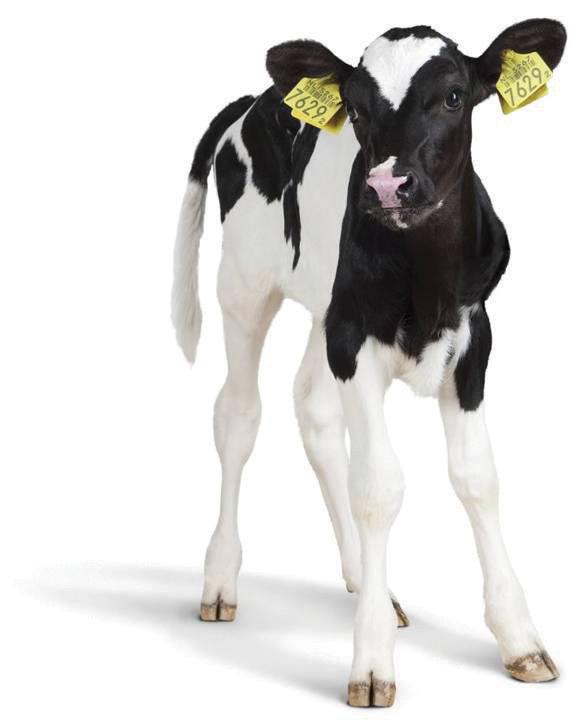
Sprayfo Blue Premium CMR 20kg

Premium quality Calf Milk Replacer, safe for calves from 4 days old
Whe y protein for faster digestion
Hydrolysed wheat protein aids digestibility (no soya)
Dissolves easily, even in cold water, with superior suspension
ENHANCES RUMEN DEVELOPMENT
56 Dairy Exporter | www.nzfarmlife.co.nz | July 2022
Ask instore* Qualifies for payment holiday
Rearing autumn 190 calves and 480 spring calves, Jenna uses AgriVantage’s Launchpad18 colostrum, Sprayfo Blue CMR and Biopect prebiotic. Pictured here with her daughter Keira and a healthy Sprayfo-reared calf.
0800 64 55 76 www.agrivantage.co.nz
* Apply for a payment holiday on AgriVantage calf rearing products through PGG Wrightson, Farmlands or Hazlett Rural. Terms and conditions apply – visit agrivantage.co.nz
-Jenna McLeod, Areare Farms, Waikato
The perfect mix.
Setting new standards in efficiency and reliability, Italian designed and manufactured Faggiolati submersible stirrers have the ability to transform effluent management systems.
A combination of superior engineering and advanced technology provide optimal mixing, homogenising, and agitating of sludge, and liquids with solids and even fibrous material content.






The industrial strength, cast iron Faggiolati submersible stirrers have an exceptionally rugged construction that’s not only ideally suited to the demands of the harsh effluent pond environment but rated for continuous duty.
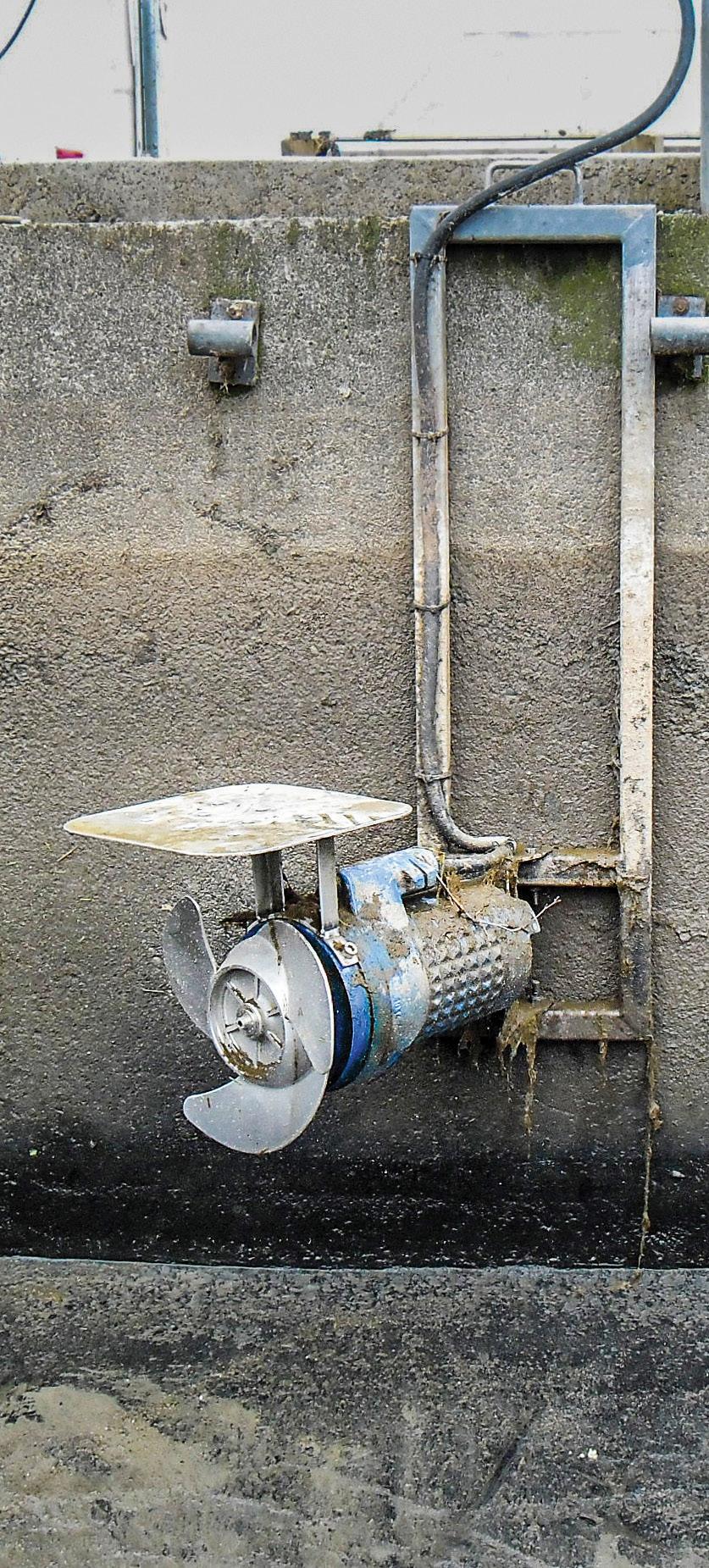
That’s combined with a unique impeller profile that handles larger effluent volumes without any problems at all. Clogging is minimalised and crust formation is eliminated.
The stainless-steel propellers and double silicon carbide mechanical seals enable the mixers to operate effectively and super-dependably, reducing lifetime costs, saving time, and removing operational headaches.
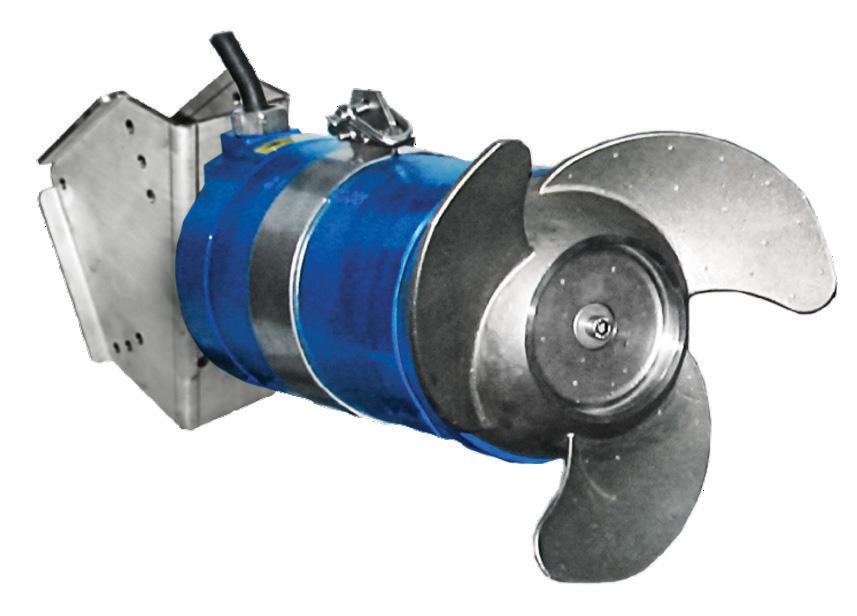
Call the Prime Pump team today for advice about Faggiolati and the names of our expert, approved dealers.

Bringing the world’s leading pumping technology to NZ.

57 Call now 0800 482 747 | info@primepump.co.nz www.primepump.co.nz
flowing
rable and dairy farmers, after years of trying, are still failing to close the gap between the two farming systems even though grain prices are spiking.
“It’s still a nice dream that we have,” FAR (Foundation for Arable Research) general manager business
“There have been many projects and conversations through the years but there are still very few official long-term contracts between arable and dairy.
“We’ve got a draft template that farmers can use, and we were having face-to-face meetings about it, especially with the dairy section of Federated Farmers,
“We have good supply within the South Island of feed wheat and there are good relationships, with or without brokerage, and there are even some dairy farmers that grow their own grain for their cows, but it could be so much
There were “huge opportunities” if the two farming systems were closer including environmental benefits that
“We’ve talked about it lots, we’ve sat around the table and talked about it lots but still there is nothing really in
The feed wheat price in the past has been linked to the milksolids price but this year there were further complications, sending the spot price of grain upwards.
“There’s starting to be conversations about food security, and there is the war in Ukraine and the problems with the China and United States relationship as well as Covid, which have all affected the grain price,” Ivan said.
“We all want the war in Ukraine to end soon and to end well, but I don’t think it will see the cost of grain going down globally anytime soon. There are too many other things going on.

“Suddenly it’s a much bigger conversation.”
New Zealand dairy farmers tended to be reactive to the season when buying grain.
“They buy grain on the spot price, on the spot market, but that is when everyone else is trying to buy it because the weather is bad or calving is coming up, or they can’t get imported feed, so they’re competing with one another.
“Instead, they should be having those conversations as early as possible. They should be talking to arable farmers or grain brokers now for next year’s harvest and be putting contracts in place.”
Contracted grain not only allowed dairy farmers to control their budgets, but it also helped arable farmers improve their planning.
“Growing grain at around that $400 mark, it has always been hard to make it profitable for arable farmers, especially when they don’t know who is going to buy it or when.
58 Dairy Exporter | www.nzfarmlife.co.nz | July 2022
Words by: Karen Trebilcock
grain
“Now it’s spiking at $600 to $650 per tonne and we know it will go down at some point but who knows when or how much. There are so many factors influencing the price now.”


However, he said more grain would be grown by arable farmers if they knew when they were going to get paid, for how much grain, the quality required and when it would be leaving their silos.
“That would give them more confidence to put the seed in the ground.”

United Wheat Growers chair Brian Leadley said stability in the marketplace was what was needed for grain and dairy farmers.
“Feed grains are competing with what else we can grow. If we knew what dairy farmers wanted, if they locked in a price and delivery, maybe if they even paid a deposit, everything would work so much easier.
“Our costs are going up just like dairy farmers’ costs and most of our costs are well before harvest.
“It’s been really tight for us, and our cash flow isn’t as good as for dairy farmers as their payments are spread.









Most feed grain was traded through a third party.
“They do a good job but they add another cost so as arable farmers, we’re not getting the best price and dairy farmers are not paying the best price.
“Some of the problem is also that there is not a stable workforce on many dairy farms. Because you’re dealing with managers or sharemilkers or contract milkers, they
change from year to year so you get a good relationship with one person and then they leave.”

The other problem, Brian said, was DairyNZ was not supportive of feeding grain to cows.
“If I was a dairy farmer, I would be really unhappy because I’m paying their levy, but they don’t recognise the benefits of feeding grain for cow health, for milk production or for the environment.”
Ivan said growing feed grain would be an attractive business decision for South Island arable farmers as the weather caused fewer issues than when trying to grow milling wheat which attracted higher prices.

“Last year, in 2021, we grew in New Zealand 420,000 tonne of wheat. About 100,000t was milling wheat and the rest was feed wheat.
“All of the feed wheat is used in New Zealand but we even have trouble getting it to the North Island.

“It gets complicated there because we don’t have the means to transport large amounts of grain from the South Island to the North Island. We need better infrastructure and logistics, both for rail and shipping.
“Work is already being done to improve this, through upgrades to rail loading in Mid-Canterbury and some options for coastal shipping, but more is required.”
Instead, much of the feed grain needed in the North Island, especially for the poultry industry, was imported, he said.
A PETA dispenser is the simplest way to dispense magnesium, trace elements and salts to treat grass staggers or trace element deciencies. Developed by agricultural scientists at Ruakura Research Centre, the correct amount of treatment is dispensed per-animal per-day. Available in 24 hr and 48 hr models. Simply place in the trough and the job is done.



Dairy Exporter | www.nzfarmlife.co.nz | July 2022 59
60x267
Sheep 1/3
With a PETA
PETA Dispenser from
local rural supplies store or veterinarian. The efficient, economical way to healthy animals. www.peta.co.nz Other dispensers in the range: • Zinc: 24hr & 48hr • Bloat: 12hr & 24hr
Grain harvested near Riversdale in Southland.
0094320
CW
Page Multi
Multi-Purpose Dispenser Purchase a
your
Mineral Deciencies Solved the Easy Way
Wetland A FARM TAONGA
South Waikato farmers
Gray, Marilyn and Joel Baldwin have restored a wetland to capture runoff from their farm. Claire Ashton reports.
After two years in the planning, the Baldwins’ Wetland open day was showcased on a sunny, breezy day on a hilltop, overlooking the wetland on their System 5, 713-hectare dairy farm on Lichfield Road, near Putaruru. Joe Kaponga from Raukawa Iwi welcomed guests and sponsors to the whenua with a karakia.
“It’s a taonga within the land that we have,” Gray Baldwin says.
Seven years ago, the process began to return this treasured area into a wetland. The 0.85ha wetland captures runoff from 85ha of surrounding farmland, including natural seepage gullies, and the central race.
The river catchment is Ngutuwera Stream, in the Pokaiwhenua/Karapiro catchment.
DairyNZ led the project in partnership with; the Baldwin family trust, Waikato River Authority, Opus Consultants, Waikato Regional Council, Hill Laboratories and NIWA.
Through the project, their wetlands and others onfarm have been used to create a set of national guidelines for wetland plantings, produced by DairyNZ entitled ‘Wetland Practitioner Guide’.
The family onfarm labour is divided into three parts: son Joel running the cows, Gray the maize, and Marilyn the calves.

60 Dairy Exporter | www.nzfarmlife.co.nz | July 2022 ENVIRONMENT WETLANDS
“There was a bit of a debate around how much dirt we had to shift at the beginning,” Gray says. “The biggest and most important expense was getting it level, because you don’t want a ditch the water just disappears into. We had it laser-levelled with a digger like they do on building sites, it had to be perfectly level as the water has to spread out.”
Four ground monitoring wells or piezometers measure ground water as there was more water leaving the wetlands than entering it due to groundwater. The measurements also take into account evaporation and transpiration from the plants, and rain, and when they take those variables into account the loads in and out can be accurately measured.
Joel Baldwin says it takes time and maintenance to keep persistent weed plants out, such as blackberry and willow.
“We have to constantly keep on top of it to keep it functioning, drained and cleared to make sure water is flowing.
“It takes time, it takes money, and you need staff. We spend a lot of time down there - we just planted 1500 cabbage trees in the last couple of months.”
Staff consists of the Baldwins, two farm assistants and a 2IC. The family propagated all the amenity plantings in their own nursery.
“The cabbage trees are on the periphery - but the action is right in the middle where the carex, sedges and rushes are.”
DairyNZ general manager for sustainable dairy David Burger commented that the wetland is a successful project and something they can be very proud of.


“A lot of people like the ‘idea’ of a new challenge but they don’t want to be the first to do it, but the Baldwins’ grabbed the opportunity and ran with it.”
THE CHALLENGES
The past seven years have certainly held their share of challenges. In the first year a flood took out topsoil, and after that they had several years of drought to contend with.
The wetlands were monitored in two different years, 2017 and 2019. The first was very wet and 24 tonnes of sediment was captured, then in 2019 with a lower rainfall just 2.5T of sediment was captured.
James Sukias, wastewater scientist from NIWA, described how the project was monitored.
“The flow was measured via v-notch weirs. As water comes over them, the height of the water that goes through is measured and samples of the water quality going in and going out shows the amount of nutrient removal.”
That monitoring showed it removes about 60% of nitrogen (N), 70% of sediment and 20% of phosphorus (P) from the water it receives. Microbial denitrification is the key process by which nitrogen (N) is removed in well-established wetlands.
The real time sensors monitor flows, which optimise wetlands to maximise the treatment. Accurate measuring systems are needed for farmers and regulators to get the credit for the reductions as part of Overseer budget and nutrient removal.
THE NUMBERS:
• Total Cost $150,000
• Partial funding contributed by:
• $75,000 Waikato River Authority (WRA)
• Dairy NZ $30,000
• WRC $30,000
• Hills Laboratories $10-15,000
• 15,000 plant and tree species planted
• DairyNZ and NIWA scientists have found that over 12 months, the .85ha wetland removed
• 50-60% of the nitrogen
• 20-23% of the phosphorus
• 70-80% of sediment
• 65-85% of E. coli.
ON THE LEVEL
Dairy Exporter | www.nzfarmlife.co.nz | July 2022 61
NIWA Scientists spoke on the day and worked with Dairy NZ
“Monitoring these systems is quite hard as we measure the flows as well as the concentration of what is coming in and out of the wetlands. The difference between the load coming in and the load coming out is the difference of what has been removed - and it is highly variable but what we have managed to do is average those results out for the long term.”
After twenty years of work studying wetlands and aquatic pollution, the Wetland Practitioner Guide turns science and numbers into practical guidance, said NIWA’s principal scientist Dr Chris Tanner.

The guide is available for download at : www.dairynz.co.nz/ media/5795432/wetland_practitioner_guide_web_may_2022.pdf
BIODIVERSITY INCREASE
The project has also seen an increase in the biodiversity in the area of the farm where the wetland is located. Frogs, birds, and insects such as katydids have appeared, and the wildlife includes pied stilts which hadn’t been seen for two decades.
“The biodiversity is also good for staff morale, especially in this era of droughts, floods and plagues,” Gray says.
DOC plans to include the Baldwins’ wetlands on a track running through Lichfield, down to Horahora, and Enviroschools will be visiting the wetlands. Raukawa Iwi also want to enable cultural access. All this will promote ruralurban relations and shine a spotlight on positive actions dairy farmers are implementing.
At one point, Marilyn pondered if they might not have bitten off more than they could chew. Now though, her dream is to have a boardwalk built through the wetlands – something she mentioned more than once. Watch that space in the future for the opportunity to get up close and personal for a closer inspection of the wetlands.
ONFARM REALITIES FOR WETLANDS
Alternatives to wetland planting were raised at the end of the field day. As a lot of work and expense goes into establishing a wetland, why not simply dam a suitable area to create a cost-effective ‘natural’ wetland, experts were asked?
The response was that if you allow natural revegetation in areas to develop you will get a lot of grasses and weed matter, which will give you some nutrient removal, but they are inclined to die back more than wetland plants and leak more nutrients out. To be successful and get the best results you need to clear the weeds out and plant it. You can enhance naturally occurring wet areas by planting – sometimes they were once wetlands and have been drained.
SACRED COWS
1
Pasture is unreliable due to floods, droughts and climate change - especially with their rolling/steep Lichfield location, so their system 5 farm focuses on the feed pad and inshed feeding. Feedpad: 6kg maize, 6kg grass silage, Inshed feeding 3kg in shed, canola, tapioca, DDGs Total:15kg drymatter. The drymatter is achievable and affordable due to the 200ha maize-producing land onfarm. Feedpad rations are reduced in October when the grass growth kicks in, but Gray is cautious as the herd’s rumen bugs get used to the grass again and then by summer - there goes the grass due to the dry conditions.
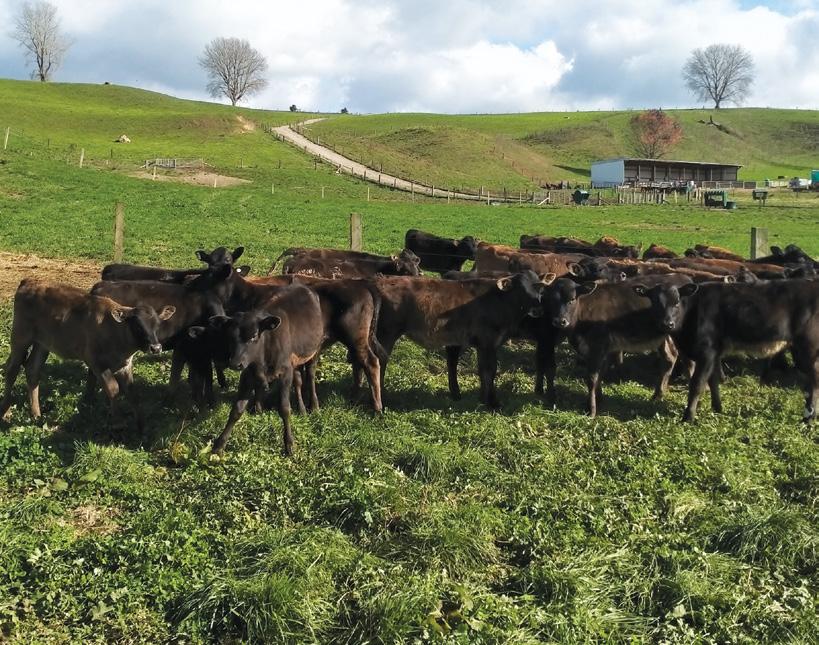
2 Practice autumn calving.
3
Once-a-day milking is both productive and profitable - producing 395-400kg milksolids (MS)/cow/year for Miraka
4 Baldwins don’t breed their own replacements, instead using LIC Wagyu genetics. They do have a ‘cash calf’ though, as they put Wagyu over the Jersey herd to produce around 600 Wagyu beef calves, onselling 80% at 10 days or weaned to 90kg. A chef Marilyn spoke to says he prefers the Jersey Wagyu mix for the marbling and the yellow fat it produces.
62 Dairy Exporter | www.nzfarmlife.co.nz | July 2022
Gray Baldwin, in his introduction, announced that he killed the ‘four sacred cows’ of dairy farming in New Zealand.
Wagyu calves.
Equipping Coast farmers for future
Farmers around the remote settlement of Whataroa in South Westland are attending workshops and working online as part of a pilot programme to prepare their own freshwater farm plans and learn about greenhouse gas emissions.

The programme has been so successful plans are now underway to roll it out to the rest of the West Coast’s remote farming settlements.
Whataroa is about as remote as it gets for dairy farming and connectivity can be challenging, so when the Te Wheke Digital Hub was established in the tiny settlement, the chance arose to run a programme to resource farmers to develop their own freshwater farm plans.
One of the proponents for the programme, Ministry for Primary Industries’ regional adviser for the West Coast, Lyn Carmichael, says farmers have
SETTING THE BENCHMARK
Welcome to the next generation of in-bail automatic teat sprayers. Fully automated and ready to integrate into any rotary system, the iSPRAY4 makes milking easier and hits its target each and every time. Ensuring full coverage of teat spray to each milking quarter, it’s your herds’ best asset in the fight against mastitis.
Automate your milking routine: GEA.com/new-zealand

few rural professionals travelling the huge distance between its northern and southern boundaries.
“Our aim is to equip farmers with the tools they need to implement new environmental regulations, including developing their own freshwater farm plan.”
When the idea was mooted for the Whataroa Freshwater Farm Plan programme to be held in their community, 16 farmers joined up to take part. Most are dairy farmers which make up 90% of farms on the Coast, but the group also includes a couple of sheep and beef farmers, plus a deer farmer. The fully funded programme follows a similar initiative of the P3 Dairy Trust on the Hauraki Plains. In Whataroa, the farmers attend fortnightly workshops during the four-month course as well as online modules in their own time.
Dairy Exporter | www.nzfarmlife.co.nz | July 2022 0097201 65.97x297 1 of 2 consec RHPGS
ENVIRONMENT FARM PLANS
Participation by a group of South Westland farmers in a freshwater farm plan programme has reassured them their farming practices were already well on the way to meeting regulations. By Anne Hardie.
MPI has facilitated the programme, alongside Westland Milk Products, with Development West Coast funding the face-to-face component, while a host of industry groups and the West Coast Regional Council have also had input.
Lyn says the West Coast is a particularly challenging environment to farm and farmers can experience massive rainfall, flooding, slips and high transport costs.
“This programme is all about understanding how to farm well on those farms. It brings a group of farmers together so they can benefit from their collective expertise.”
The council has met with the group to guide them through regulations and Lyn says it has been beneficial for understanding terminology and exactly what is required from farmers. Farmers involved in the programme have been keen to get working on their individual plans.
“One of the really nice things for us is seeing the lightbulb come on as they realise what they are already doing is what is being asked of them.”
Lyn says for most farmers, it was a matter of fine-tuning their farm business and developing a template that can be adjusted in the future as more information became available. The Te Wheke Digital Hub has enabled them to access information, but also given some farmers the opportunity to develop their digital skills.
The course includes workshops and online chats about understanding risk and mitigation onfarm, creating action for those risks, as well as on-farm visits to view farm plans and check progress. Farmers also got the chance to discuss greenhouse gas emissions with Nick Tait from DairyNZ which was followed with a workshop aimed at understanding their emission numbers and creating a plan.

“There’s very few rural professionals on
the Coast and this is a way for us to bridge that gap.”
Lyn says the programme has been a community effort and even the local school has benefited by supplying lunches for the workshops held at the hub every second week.
“Having that discussion time at workshops is really important. Farmers aren’t rushing away at the end of the workshops and they’re wanting to talk about their farm maps and farm plans.”
The programme ends with a visit to each farm to check and complete the individual farm plans.
Whataroa farmer Brenda Syminton says the programme has given farmers confidence in their ability to farm with the new environmental regulations. It reassured them their farming practices were already well on the way to meet regulations with tweaks here and there and one of the biggest jobs was getting it written into a plan.
Bringing a group of farmers together enabled them to bounce ideas around to
come up with solutions.
“If you didn’t have something quite right, it was about finding a solution that was practical. Lots of people had different solutions to different things – what works for someone doesn’t necessarily work for the neighbour across the road on stony soils.”
Brenda says the challenge for many farmers before they took part in the programme was simply working out where to start. Working as a group with professionals made it easy.
“It actually just made it simple, which is what you want. We were doing all those things but just didn’t have it down on paper,” she says. “We didn’t start farming to write a book on it, but that’s kind of what it is today.”
Another local farmer, Stacey Straight, says the programme and group format made environmental regulations less daunting for farmers. It made them realise they were already doing many of the things being asked of them.
“It’s something we all know but are guilty of keeping it in our head and not writing it down.”

64 Dairy Exporter | www.nzfarmlife.co.nz | July 2022
MPI regional advisor for West Coast, Lyn Carmichael.
The Whataroa Freshwater Farm Plan programme at one of their workshops.
TIME FOR ANOTHER LOOK AT URINE


Received wisdom refers to something that ‘everybody knows’ is true… even though it might not be. It’s common knowledge that you starve a fever and feed a cold, that going out with wet hair will make you more susceptible to bugs, and that man ‘flu’ is an exaggeration.
Periodically, the curious person might examine some of the ‘everybody knows’ statements to test for truth. Circumstances change, science advances, and sometimes the passage of time means that the original interpretation is no longer appropriate.
With this in mind, the suggestion that dairy cow urine is the source of so many environmental problems deserves reexamination.
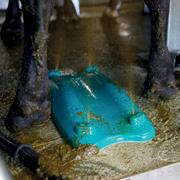

In the early 1990s a soil scientist made a back-of-the-envelope calculation at a conference and said that a dairy cow urine patch could be equivalent to the addition of nitrogen (N) at one tonne per hectare.
The figure is still in the minds of many, even though it was pared back to twothirds of a tonne very rapidly. Advances in animal breeding and feeding since then mean that the modern dairy cow (and other farm animals) is more efficient than her forebears; she turns more of what she eats into milk and so excretes less.
Doctoral candidate Lisa Box, working with Dr Racheal Bryant and Professor Grant Edwards on plantain at Lincoln University has estimated urinary N output at approximately 200g N per cow per day. She did this with collection devices on the cows. The N was delivered in about 20 urination events of 2-3 litres liquid each time. Research has also shown that the area of a urine patch covers about 0.40 m squared of pasture (with an uptake zone of twice that area).
After being grazed, ryegrass plants start rapid regrowth with a translocation mechanism for fast transfer of stored sugars from the roots, and uptake of water (and N) from the soil. The dark green colour and increased growth of the grass, observable within a few days of the herd departing, is an indicator of where much of the about 10g of N from the urine can be found.
After a single grazing, urine patches cover 3-4% of the grazed area and form part of the diet once the herd returns. As far back as 1994, soil scientists suggested that “a combination of ammonia volatilisation, denitrification, microbial N immobilisation and rapid plant uptake may minimise leaching losses in urine patch areas of pasture”.

First principles support new thinking.
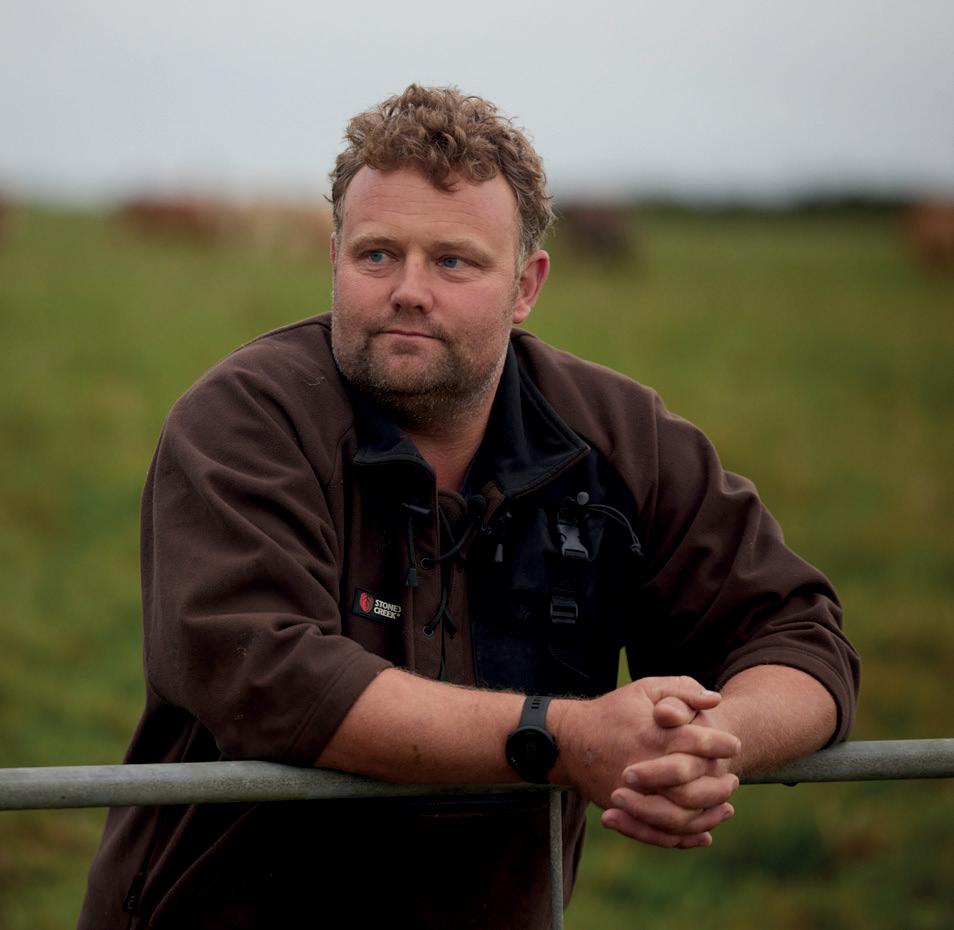
Dairy Exporter | www.nzfarmlife.co.nz | July 2022 65
“Our somatic cell count was sitting at 150,000. Since installing the iSPRAY4, it’s settled at 90,000”.
Andrew Pritchard - Taranaki Milking 420 cows across 2 herds
Continuous spray delivery Standardising your milking routine Automate your milking routine: GEA.com/new-zealand ENVIRONMENT NITROGEN
4 cross-fire pre & post spray nozzles Better spray coverage
The suggestion that dairy cow urine is the source of so many environmental problems deserves re-examination, Jacqueline Rowarth writes.
Dr Graeme Coles, a Canterburybased nutrition scientist, has done the calculations, using published results from New Zealand research trials. See Table 1.
Research by Massey University animal scientists has shown that nitrogen is split about evenly between urine and faeces. Best production practice leaves (49.5 x 3.16) kg/ha return of N in urine while mean productivity leads to (37.2 x 3.45) kg/ha return. Soil scientists have calculated that at least 65% of this N is immediately recaptured by plants and about 30% is lost to the atmosphere. This leaves a maximum of 7.8kg/ha of nitrogen to leach from a best practice operation (for 2255 kg/ha MS), and 6.4kg/ha from a mid-level production system (for 1473 kg/ha MS). Note that these estimates are worst case because they assume cows do all excretion on pasture, which is not the case in reality (because of milking).
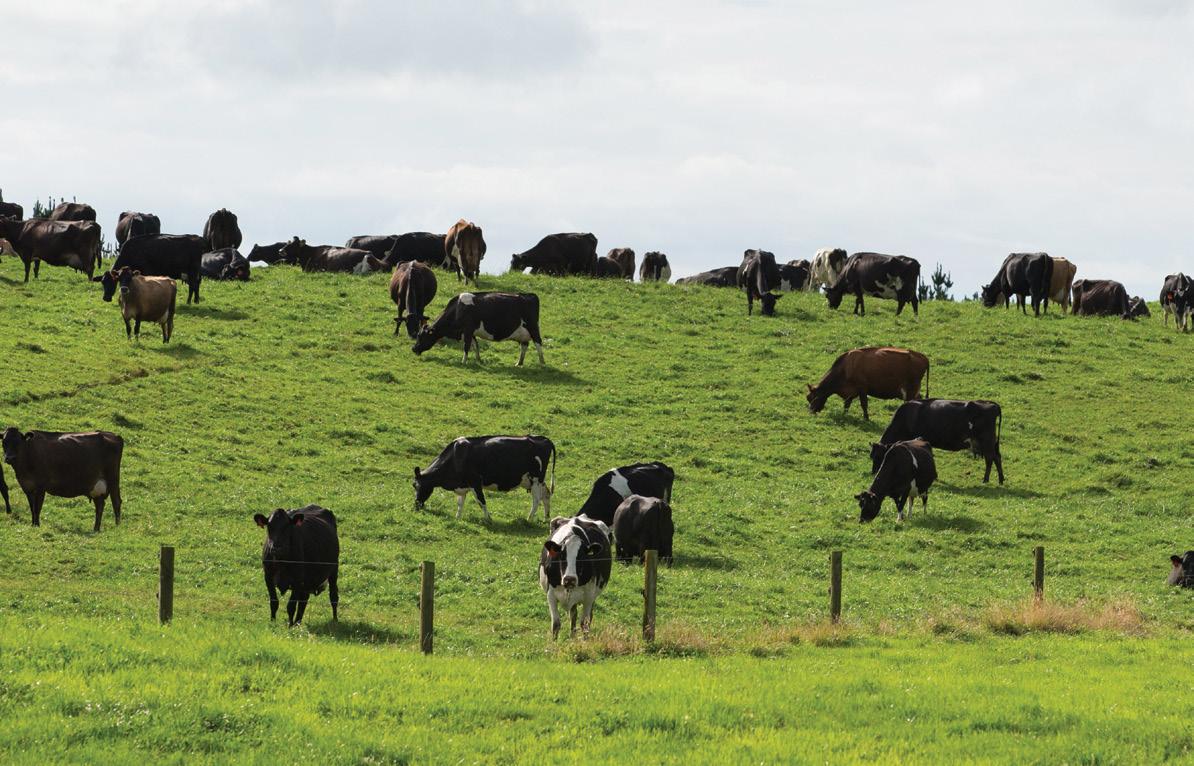
This N is joining a background of N from soil organic matter. To 30cm depth, NZ soils contain on average 100 tonnes of organic matter per hectare, which is associated with about 10 tonnes of N.
Decomposition of organic matter depends on temperature and moisture but under fertilised moist conditions in NZ, half of any added material will have gone in 3.5 to five years. The research team, which included scientists from the University of Waikato, estimated mean turnover time for organic matter on fertile, moist pastures at about 15 years. This gives
the potential for considerable N to be released from soil organic matter – 127kg/ ha/yr has been measured over a 13-year period under bare fallow by Plant and Food Research scientists.
Another significant source of N is human excretion. Again, Dr Coles has done the calculations with a focus on the Selwyn District in Canterbury. In rural areas septic tanks are ubiquitous and the dispersal field must be below the depth of pasture (lawn).
NZ population dietary studies indicate average daily protein intake is 102g for males and 71g for females (86.5g overall). This protein is effectively all turned over, which means rural Selwyn residents inject 182 tonnes/yr of N into groundwater. Gorse and broom contribute to N in groundwater as well. Research by Landcare
modellers have warned that the catchment contribution of nitrogen-fixing woody shrubs is being underestimated. They calculated leaching under gorse was greater than under pasture by a factor of almost two to almost three times –and underestimation of this ‘invasive’ contribution could constrain agricultural production (because of assumptions that N load is caused by agriculture).
‘Feed a cold and starve a fever’ was probably never true. Wet hair leading to illness is probably association rather than causation. Man ‘flu’ is probably real. Men already knew this but struggled through sickness and ill health to make their case clearly to women. The explanation, published by the British Medical Journal in 2017 is that men might have weaker immune responses to viral respiratory viruses. Another explanation, published last year in Frontiers for Immunology, is that women have evolved to be more resistant to herd diseases such as viruses (including Covid-19), whereas men are more resistant to bacterial infection likely to be associated with hunting and fighting. Research will continue internationally on the reality of man ‘flu’, but in the meantime NZ needs to sort out the received wisdom around dairy cows. Food production, particularly of the essential amino acids available in meat and milk for low calorie intake, depends upon it.
• Dr Jacqueline Rowarth, Adjunct Professor Lincoln University, is a farmer-elected director of DairyNZ and Ravensdown. The analysis and conclusions above are her own.
jsrowarth@gmail.com
• First published Country-Wide July 2022.
66 Dairy Exporter | www.nzfarmlife.co.nz | July 2022
Measurement using Canterbury data Best practice* Mean Forage dry matter produced (kg/ha) 19,000 15,000 Stocking rate (cows/ha) 3.16 3.45** DM/cow (kg) 6,013 4,348 N Yield @ 16% protein (kg/ha) 486 384 N/cow (kg) 154 111 Milk solids yield (kg/ha) 2255 1473** Milk solids/cow (kg/yr) 700 427** N in Milk (incl. milk urea) kg 51.2 31.8 N in calf (kg) 1.24 1.24 N in cow body weight (kg) 2.6 2.6 Leaving N for excretion (kg) 99.0 75.4 Table
1
*This is the ideal/possible calculated by Lincoln University scientists as harvestable ** using DairyNZ/LIC dairy statistics 2020-21
Left: After a single grazing, urine patches cover 3-4% of the grazed area and form part of the diet once the herd returns.
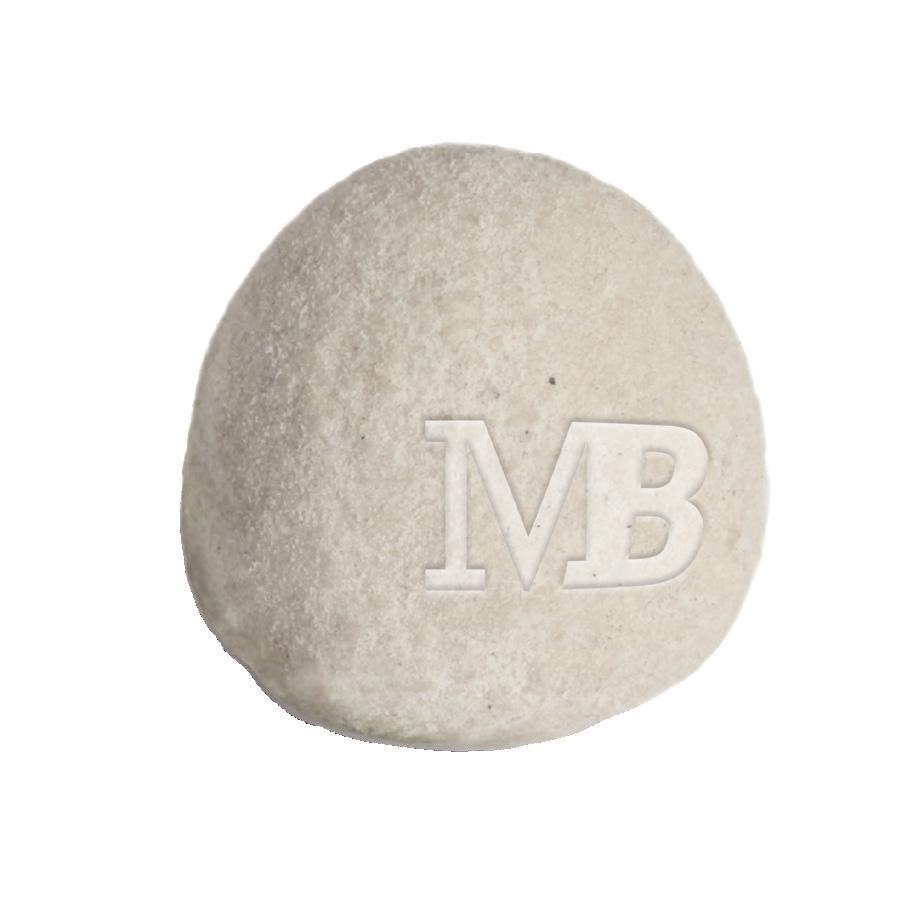

Dairy Exporter | www.nzfarmlife.co.nz | July 2022 67
Going for
When the opportunity arose for Rob and Sharon Klaus to buy land adjacent to their dairy farm in Okauia at the foot of the Kaimai ranges just out of Matamata, they wondered how they could utilise the land’s potential - apart from increasing cow numbers. They now have 94 hectares, with 85ha effective.

The answer was to rear calves, and Rob took ownership of this, leaving Sharon to milk the herd of 200 cows. The 1050 square metre calf shed purchased from Sheds4U in Gisborne as a kitset was built for $120,000 in 2018 and has generally performed very well, however the timber has puzzlingly deteriorated on the western side of the shed, even though it is not the side exposed to the Kaimai ranges.
Gates and divisions in the shed were on top of that cost, as Rob aims to keep the calves fully separated with solid divisions. Important factors when considering a shed are ventilation and drainage, and Rob uses the Novaflo drainage systems. Underneath the pens is sandy loam soil, topped with sand and wood shavings. He also uses ZorbiFresh Active which kills bacteria and absorbs moisture in the bedding.
However, veterinarian Rebekah Kloosterman, from Vetora, pointed out that spraying disinfectant on a mound of poo isn’t an effective use of disinfectant. It is most cost-effective to use disinfectants between batches of calves (or before the season) and after removing 10cm of bedding.
Rob favours early calves through AI, and this year he is rearing 130 calves who spend five to six weeks in the shed. (Other numbers run to 500 calves in spring, and in past years Rob has raised 300 in autumn.)
The Friesian bull calves arrive at four days old, and at pickup the calves’ NAIT tags are scanned by the agents and their Birth Identifications are checked - which is an absolute must, especially if selling to a company such as Landcorp, as Rob has done. On arrival autumn calves are given whey-based milk powder twice a day before going on to Ancalf once a day at three weeks.
Rob uses the mixing ratio recommended by the manufacturer.
“Someone with a bigger pay scale than me has done the maths so I pretty much stick to the instructions on the bag.”
Milk comes from the vat and into 15-calf teat feeders, and Rob will usually put 14 calves in a pen to leave one teat spare. He can feed 300
68 Dairy Exporter | www.nzfarmlife.co.nz | July 2022 STOCK CALF REARING
At a SMASH (Smaller Milk and Supply Herds) Field day at Rob and Sharon
Klaus’s farm in mid-June, Rob shared his best practice methods when rearing calves. It is the second year the event has been held onfarm and looks set to be a regular in the event calendar.
Claire Ashton reports.
gold
Rob and Sharon Klaus.
calves in one hour and will have 2-3 feeders on the go at once. Feeding must be efficient as Rob flies solo in the shed. He uses a particular gun, that costs $60.00 for a pack of three, which is a lot cheaper than the price of the ‘recognised brand of guns’ and are just as effective as well as cost-effective. His tip for gun hygiene is to keep shavings out of the gun and not to use hot water on the gun which causes deterioration, and to keep it calibrated.
Troubleshooting
A serious bout of salmonella arrived with a batch of calves two years ago, and Rob and Sharon spent two nights vaccinating all the calves but lost a few. From that point on, upon arrival the calves now get a 5:1 shot and, perhaps needless to say, the calf-seller did not get another shot at supply.
Rob sprays and disinfects the pens and keeps sick calves in a separate shed. Sick calves are given electrolytes for 24 hours and the next day are given a half feed at first and then 50/50 electrolytes/milk the following day.
The incubation of Salmonella is a period of one to five days, so a week of isolation is appropriate. The incubation of Rotavirus is one to three days, Coronavirus three to five days, and Crypto about four days so keeping sick calves away from the shed is imperative if the virus is to be contained. On average, calf mortality rate is 4% due to lack of colostrum, and 6% to salmonella.
Rob perceives that other health issues include ‘The 10-day blues,’ where a calf hasn’t received enough colostrum. Rob cannot stress enough the importance of good quality colostrum.
“If you’re not going to feed colostrum you may as well not bother at all.”
The calves are dehorned at two weeks, a well-oiled practice which Rob leaves in capable hands. Drenching takes place at three weeks and not before. He aims to get the calves to 60kg before they go outside, and four of the paddocks have calf huts. On any given day, Rob is known to suggest to Sharon, “Shall we weigh the calves today.”
The calves are weaned off milk at 90kg and onto meal and DDG (especially sunflower) at a cost of around $825 per tonne, and then calves leave the farm when they weigh 100kg to fulfil an existing contract in Hawke’s Bay.
Colostrum is gold
Emma Cuttance from Epivets on Failure of Passive Transfer (*FPT)
The all-important colostrum is needed as soon as possible after birth for healthy calf immunity. Reasons calves experience FPT include; not feeding soon enough after birth, low colostrum quality, or not enough volume. Other factors for a higher rate of FPT may be due to the cow being more than seven years old, calving being at peak, or interestingly, low hanging udders - as it has been found that the calf naturally favours a high udder due to its natural suckling instincts. The natural way for the calf is to keep its mouth on a higher level than the throat because this helps the natural uptake of the milk.
Emma’s advice is around the crucial first 24-hour period. Feed 10-15% of the calf’s bodyweight in colostrum within the first six12 hours of life – this is known as the ‘Golden Period’. For a 40kg calf this is 4-6 litres of colostrum, split into at least two separate feeds due to the calves’ limited stomach capacity. Passive immunity to some infectious agents is transferred from the cow to calf via colostrum and maximum absorption is within 12 hours, and after 24 hours the calf’s gut starts to ‘close off’ and will not absorb any more IgG molecules, but colostrum is still an excellent feed after 24 hours of age.
MPI are looking at proposed regulations around the colostrum intake having to take place within a two-hour period after calving, but there is some discussion around how this two-hour statistic was arrived at - and how it would or could be enforced.
Dairy Exporter | www.nzfarmlife.co.nz | July 2022 69
‘Someone with a bigger pay scale than me has done the maths so I pretty much stick to the instructions on the bag.’
Ruminating on repro
it is time to draft the cow for artificial insemination.
But with the collars worn year-round, there was a huge amount of data about rumination that Ben had no idea what to do with.
“Then I was dealing with the technical staff in Australia and they were asking me what was wrong with my cows because the rumination times were down at 300 minutes.
“I looked at the cows and they looked fine to me, like they always do at that time of year after calving but here was someone who couldn’t even see them saying there was something seriously wrong.”
he told SIDE delegates at a workshop on reproduction in Oamaru in early June.
“I can benchmark all the data and with so much data coming in I can now advise farmers who don’t have the collars.”
And when he saw Ben’s rumination figures following calving he became concerned, just as the Allflex technician in Australia had been.
Cows don’t eat at calving but Ben’s cows still weren’t reaching at least 400 minutes/ day rumination times required for good health until weeks later.
When Waimate dairy farmer Ben Smith bought Allflex collars for his cows to show heats for mating five years ago, he was scratching his head about the rumination data the collars were also collecting.

The collars detect heats using peak cow activity together with rumination times (picked up by the motion of the cow’s jaw moving side to side) which dip about 26 hours before ovulation.
The two data sets combined show when
His vet Ryan Luckman, of the Veterinary Centre, began collecting data from his clients with Allflex collars and started getting his head around the figures.
He now has more than 50 dairy farmers in the area with the collars and can look at the information as it’s generated.

“One of the cool things about the Allflex system is writing reports from the data is very easy – it’s all open access and I can look back two to three years and see how things happened on farm,”
“They were in a huge energy loss and when I went forward and looked at his reproduction figures following calving they were also not good with cows not cycling pre-mating and poor conception rates.”
However, farmers in the area that had 400 minutes/day rumination following calving had higher six-week in-calf rates and lower empty rates.
Ryan changed Ben’s figures around by getting him to transition springers earlier, feeding them more than he had been and making sure cows were on once-a-day milking until 10 days after calving.
“Now I have an Allflex page that I can look at and it shows me the cows that can
70 Dairy Exporter | www.nzfarmlife.co.nz | July 2022 STOCK RUMINATION
Collars are gathering information on cows’ rumination to indicate ovulation for AI. Story and photos by Karen Trebilcock.
Ben Smith’s cows wearing Allflex collars.
leave once-a-day (OAD) and go on twice-aday TAD milking,” Ben said.
“If I don’t follow it, I know now it will stuff up their whole lactation.”
Ryan and Ben began focusing on what drove rumination times post calving and also found links to calcium supplementation.
However, cows that don’t eat, won’t eat dusted grass so Ben now gives all his cows post calving a calcium and molasses drench and follows that up with 250g/cow/day of lime flour.
Although the cows are on OAD, he doesn’t 24-hour graze, instead shifting them twice a day and feeding out silage between as well.
“The rumen should be bigger than the udder – the cow should be round coming into the dairy.”
Although Ben misses out on milk early in the season, his cows now peak higher and stay at the peak for longer.
‘I LOOKED AT THE COWS AND THEY LOOKED FINE TO ME, LIKE THEY ALWAYS DO AT THAT TIME OF YEAR AFTER CALVING BUT HERE WAS SOMEONE WHO COULDN’T EVEN SEE THEM SAYING THERE WAS SOMETHING SERIOUSLY WRONG.’
“We’re giving them three offerings a day to stimulate their appetite and I now have higher residual targets.”
Ryan said farmers should look at their cows post-calving and it was when “they looked like apples instead of pears” that was the time to start milking TAD.
“I do get tempted at day seven or day eight after calving to put them on TAD because they look great and their milk flow is tanking but if I do that, it always comes back to bite me.”
The number of downer cows has dropped to almost none, almost all cows are cycling pre-mating and six week in-calf rates and empty rates have improved.
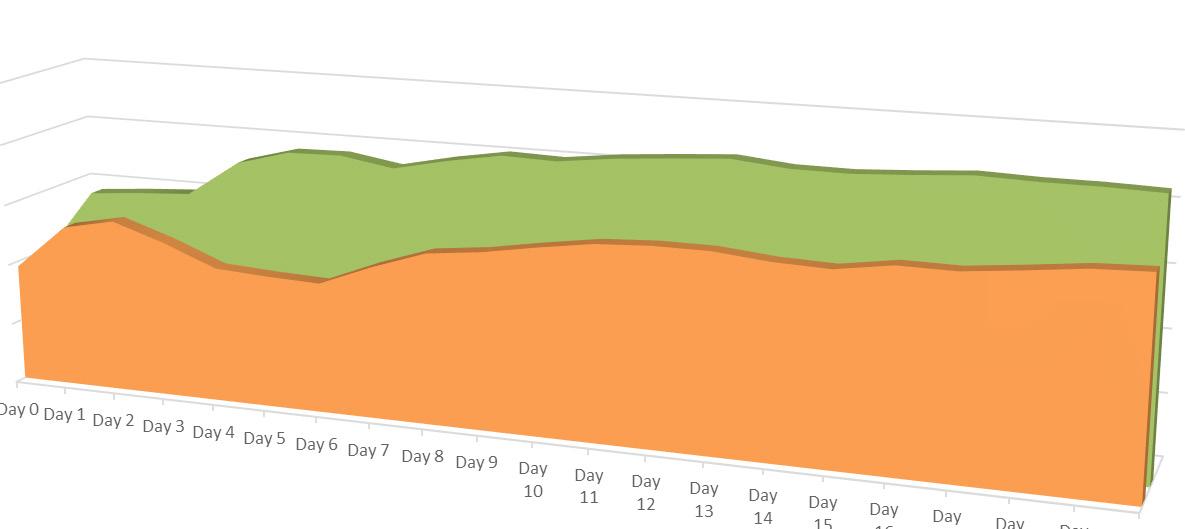
As well, his staff across his three farms, one lower order sharemilker, one 50:50 sharemilker and one an equity manager, can spend more time looking after calving cows and feeding them well, instead of being in the dairy milking.

“With our planned start of calving end of July, it’s not until about August 15 that we have enough cows to start milking TAD so we have so much more time those first few weeks.”
The plan for this spring is to also separate the heifers from the mature cows and not put the two age groups together until after Christmas.
“Asking them to socialise with the older cows, plus recover from calving and get back in calf is too much for them.”
Ryan said the Allflex collars showed when the two age groups were introduced to each other, rumination times in the heifers dropped.
“Socialisation takes that much out of them,” he said.
The Allflex data allowed farmers to have targets and the weekly benchmarking among his clients showed what was achievable in the district.
“We can compare pre-mating heats across the farms and conception rates and when farms are falling behind the others, we can go see what is going wrong by looking at the other data.”
Benchmarked figures will be available on the Veterinary Centre’s website under MoozNews starting premating this year.
Dairy Exporter | www.nzfarmlife.co.nz | July 2022 71
Days post calving Average daily rumination (minutes) 0 1 2 3 4 5 6 7 8 9 10 11 12 13 14 15 16 17 18 450 400 350 300 250 200 Transition Rumination 2020 (orange) vs 2021 (green) 2020 Transition 2021 Transition 19 20
Waimate dairy farmer Ben Smith has used the Allflex collars rumination data to improve his mating and cow health.
Improving in-calf rates
Words by: Anne Hardie
The West Coast six-week in-calf rate was behind the national trend last season and though the weather played havoc, there were also other factors at play including a higher percentage of older cows.
LIC senior reproduction adviser, Jair Mandriaza, told a SMASH field day near Hokitika that a higher proportion of older cows aged nine or more in the herd meant the better the younger cows had to be.

Figures showed 8% of the West Coast cows in the survey of 140 farms totalling almost 67,000 cows were cows aged nine years or older.
Compared with two-year-olds that had a six-week in-calf rate of 68%, three-yearolds 65.5% and four to eight-year-olds of 65.6%, the older cows only reached 51.4%. The trend was similar for threeweek submission and conception rate.
altering the milking management with younger cows, such as once-a-daymilking, was helping improve in-calf rates.
His key message for reducing overall empty rates was improving the six-week in-calf rate because figures clearly showed the highest percentage of empty cows resulted from those not getting in calf by six weeks.
Early calvers, particularly those that calved in the first three weeks, were more likely to be cycling early and have good conception rates that meant they were in calf by six weeks, whereas the cows calving nine weeks or more after the beginning of calving had significantly less success at getting in calf.
Within the group of cows calving between six and nine weeks after the beginning of calving, 26.8% did not get back in calf.
On the West Coast, just 61% of cows
were achieving the six-week in-calf rate and ending up with an empty rate of 13.1%, while 60.6% of the bottom quartile were in calf at six weeks and 19.8% did not get in calf that season. A similar pattern was clear for production worth, lactation worth and fertility breeding value.
“It is a common misunderstanding that high-producing cows are hard to get in calf but if you use lactation worth and production worth as a proxy for milk production, our data shows that isn’t the case. The highest-producing cows are no worse at getting in-calf than the lowest producers.”
Even within an age group, he says the higher performing animals with higher BWs are getting in calf more successfully than those lower-performing animals.
Age had a particularly dramatic effect on their ability to get in calf at all, with 31.3% of those older cows empty after mating. That compared with 14.1% of two-year-olds empty, 15.8% of three-yearolds and 17% of four to eight-year-olds.
Jair says the 14.1% of empty two-yearolds is an industry problem. Farmers are very good at getting heifers to good weights by 15 months, but those animals need to continue growing and heifers that struggle can end up empty the following year through no fault of their own.
Anecdotal evidence from farmers
within herds calved within the first three weeks of the calving period last year and Jair says that is below the target of 67%.
“Early calving cows have better reproductive performance. The key is to try to address calving pattern and have a good cohort of younger cows coming into the herd and calving early. The later the cows calve, the lower their in-calf rate. That is quite a difficult group to get in calf.”
Within a herd, breeding worth (BW) was also having an impact on reproduction. In the top quartile, 68.5%
Another crucial factor for influencing in-calf results is heat detection and he says herd size doesn’t alter results but increasing the number of staff can make it more challenging as each person’s ability to detect heats can be varied.
He has looked at reproductive results using technology such as collars and says the six-week in-calf rate has the same distribution of results as those farmers not using technology.
“Wearable technology offers farmers more information about their cows but improving a herd’s reproductive performance comes down to what decisions are made off the back of that data.”
72 Dairy Exporter | www.nzfarmlife.co.nz | July 2022 STOCK IN-CALF RATES
‘EARLY CALVING COWS HAVE BETTER REPRODUCTIVE PERFORMANCE. THE KEY IS TO TRY TO ADDRESS CALVING PATTERN AND HAVE A GOOD COHORT OF YOUNGER COWS COMING INTO THE HERD AND CALVING EARLY. THE LATER THE COWS CALVE, THE LOWER THEIR IN-CALF RATE. THAT IS QUITE A DIFFICULT GROUP TO GET IN CALF.’
Jair Mandriaza analysed data from 67,000 West Coast cows.
‘WHY SEND WHOLE MILK TO THE FACTORY TO HAVE MANY COMPONENTS REMOVED TO CREATE A MILK POWDER THAT GETS BAGGED UP AND THEN TRUCKED BACK TO THE FARM TO BE RECONSTITUTED TO BE FED TO CALVES, BUT WHICH IS MISSING SOME OF THE COMPONENTS THAT ARE DESIGNED FOR CALVES?’
reconstituted to be fed to calves, but which is missing some of the components that are designed for calves?
Back to basics with veal
Calves raised on whole milk are at the heart of the Pearl Veal operation. Karen Trebilcock reports.
New Zealand Pearl Veal calves are raised without grain, fed only fresh, whole milk and high-quality hay before being introduced to lush pasture.
Co-founder Alan McDermott said nearly 1000 calves had been raised during the past two years for the veal contracts and one farmer was so impressed with the system he had changed to rearing all his calves this way.
“Trial work with AgResearch in Palmerston North published in 2000 showed the rumen was slightly smaller when the calves were fed whole milk without grain, compared with calves fed CMR and meal,” Alan said.


“However, the hind gut, the intestines, were much more developed.
“It’s the hind gut which is important for a healthy calf.”
The calves were weaned at 12 weeks and had achieved higher liveweight by weaning than normal. They maintained that liveweight advantage through to slaughter.
“The calves fed meal in the study never caught up to them.”
Pearl Veal calves are fed 500 litres of milk, peaking at eight litres a day divided into two feeds.
“We crank them up and then ease them back down again.
“We’re doing it the way nature intended. It’s back to basics,” he said.
“Why send whole milk to the factory to have many components removed to create a milk powder that gets bagged up and then trucked back to the farm to be
“Ours is an animal and climate-centric approach. It may not cost less, depending on the cost of milk or meal, but it delivers the best possible calf, not just an acceptable calf.”
He said Pearl Veal was working with pioneering farmers and leading chefs to create premium veal and to demonstrate just how delicious well-raised veal could be.
“We do need to derive a high price for our veal to cover this cost, but Pearl Veal is a special product.”
Pearl Veal calves are also not given any type of coccidiostat.
“Coccidiostats used in meal are ionophores which is an antimicrobial. In America it’s classed as an antibiotic, and we don’t want to feed antibiotics to animals as a preventative.
“Our farmers ensure calves receive plenty of good quality colostrum, have good hygiene, good quality fresh pastures and they make sure the calves are strong and healthy so they can fight off any problems.
“We haven’t had any issues yet with any of our calves, but recognise this approach may not suit all calf rearing systems.”
Dairy Exporter | www.nzfarmlife.co.nz | July 2022 73 STOCK CALVES
New Zealand Pearl Veal co-founder Alan McDermott.
The good grain
Farmers thinking of cutting costs by cutting grain fed to calves should think again, Complete Feed Solutions nutritionist Natalie Chrystal says.

Although traditionally reared beef calves are never fed grain, they also get large volumes of milk from their mothers well into summer giving them plenty of time for their rumen to develop before weaning in autumn.
However, dairy calves are given usually between eight to 10 weeks of milk feeds before weaning meaning their rumen development must be faster.
And the only way to do it is by feeding grain-based (wheat, barley, maize) feeds high in starch.
“This is because starch fermentation in the rumen results in the production of butyrate and propionate which are two volatile fatty acids which develop the finger-like papillae that line the inside of the rumen,” Natalie said.
“These papillae provide an extensive surface area for the absorption of volatile fatty acids produced in the rumen, ensuring they can provide the energy required by the growing calf.
“They also play an important role in helping to maintain a healthy rumen pH as they move the acidic volatile fatty acids out of the rumen, helping to keep the rumen pH within an ideal range.”
Feeding high quality hay, such as lucerne hay, and fresh grass encouraged some papillae development but not enough for an early weaning, she said.
“Hay tends to be high in fibre but low in starch compared with grain. Fresh grass, especially spring grass, while high in protein, is also very low in starch, and is also low in drymatter making it difficult for calves with a relatively small rumen to eat enough.
“Providing high quality protein is essential for lean tissue growth, especially
in calves which have not yet been weaned. Good sources of protein for young calves are soya, canola and peas.”
Some other feeds which are suitable for older cattle, such as palm kernel, soya hulls, DDG (Distiller’s Dried Grains) and cottonseed meal should be avoided in the calf pens, as they are either low in starch or provide poor quality protein which can’t be digested by calves.
“For young calves eating only very small amounts of feed, it’s important to provide a 20% crude protein feed.
“This helps to ensure they can consume enough of the feed to provide all the essential amino acids they require. A 16% calf meal is ideal for older calves eating larger quantities of hard feed and grass.”
Starch levels should be around 40% and this should come from grains such as wheat, barley and maize in the calf grain.
Some calf feeds don’t show starch levels on the packaging so she recommended asking the feed manufacturer if in doubt.
Feeding calves a grain-based mix also had other benefits as many calf feeds also contained added vitamins, minerals and a coccidiostat.
“Coccidiosis is caused by a parasite
that infects the cells that line the calf’s intestine.
“The parasite is naturally present in the farm environment. It’s hard to kill, and numbers can build rapidly in calf sheds and paddocks, especially if calves are weaned in the same paddocks year after year.”
Calves are infected by swallowing the parasites when they eat infected pasture and feed, drink contaminated water or even when they groom themselves and each other.
“Symptoms are diarrhoea, dehydration, reduced weight gain and obvious discomfort and although most animals do recover, the damage to their intestinal lining means they take a long time to regain condition and start growing again.
“Many animals may be infected without showing symptoms other than less than optimal growth.”
Farmers should make sure the calf feed they used, especially after weaning, contained a coccidiostat as this helped control the growth of coccidia during a period when calf immunity is challenged.
“It’s when calves are out on pasture they are most at risk so changing to a cheaper feed after weaning that doesn’t contain a coccidiostat is risky.”
74 Dairy Exporter | www.nzfarmlife.co.nz | July 2022 STOCK GRAIN
“PROVIDING HIGH QUALITY PROTEIN IS ESSENTIAL FOR LEAN TISSUE GROWTH, ESPECIALLY IN CALVES WHICH HAVE NOT YET BEEN WEANED. GOOD SOURCES OF PROTEIN FOR YOUNG CALVES ARE SOYA, CANOLA AND PEAS.’
Complete Feed Solutions nutritionist Natalie Chrystal.
Feeding calves a grain-based mix has many benefits, Karen Trebilcock reports.
First Light goes it alone
Words and photos by: Karen Trebilcock
First Light is preparing to go it alone this spring.
The Wagyu company has partnered with LIC since 2017 offering Wagyu straws with contracts for the resulting calves, but this year is going directly to farmers as it wants a closer relationship with them.
First Light Wagyu performance manager Victoria Hamlin said they were asking dairy farmers who had supplied calves in the past to get in touch and were also keen to hear from new farmers.
“Ultimately, we’re focusing on optimising our supply chain by establishing relationships with dairy businesses that are interested in becoming a key part of the First Light value chain,” she said.
Contracts options are for seven-dayold calves, 95kg weaners, eight months, 15 months and 20 months old, and for finished cattle.
“We want to partner with dairy farmers who can supply animals across a minimum of two of these contract options.
“We’re also wanting to work with dairy farmers near our rearers and finishers to minimise transport for the calves and older cattle.”
The cattle are grass-finished with suppliers spread throughout the North and South Islands.
However, NZ Wagyu, also known as Black Origin Wagyu, are continuing their partnership with CRV and ST Genetics established last season.
They have 28,000 contracted calves expected to be born this year between the autumn and spring calving. However, it wants to significantly lift numbers and is keen to hear from
farmers directly wherever they are in the country.
“We’re operating more of a hybrid model, using the genetics companies but also dealing with farmers as well,” NZ Wagyu’s production manager Jon Porteous said.
“We’re different to First Light as we want calves from F12 Holstein Friesian or better dairy cows.”
He said farmers interested in using Wagyu semen could contact the company through its website. Calves could be contracted to be picked up at five to 10 days old, or at 100kg with grazing contracts also available for before the animals go into barns to be finished on grain.

Dairy Exporter | www.nzfarmlife.co.nz | July 2022 75 See our website or phone for more info About effective backing gates “making milking easier and faster” for circular and rectangular dairy yards K. H. McConnel Ltd. Phone: +64 7 849 2122 Fax: +64 7 849 2128 Hamilton, New Zealand Email: sales@mcconnel.co.nz www.mcconnel.co.nz STOCK WAGYU
‘WE WANT TO PARTNER WITH DAIRY FARMERS WHO CAN SUPPLY ANIMALS ACROSS A MINIMUM OF TWO OF THESE CONTRACT OPTIONS.’
NZ Wagyu calves fed grain in Southland last summer.
ORGANICS AND JERSEYS
German dairy operator KoePon has switched to Jersey cows and converted to organics, Sjoerd Hofstee reports.
KoePon Germany exchanged Holstein-Friesian cows for Jerseys in 2017, switched the entire dairy farm to organic in 2018 and opened a brand new dairy barn with eight milking robots last year.
“Even in east Germany, you don’t get along very well with critics, but I believe that our type of business is future-proof on all sides,” says company manager Dinand Kippers.
Dutch entrepreneur and multimillionaire Wijnand Pon has a lifelong love of dairy farming and has set up dairy farms in various places worldwide, including Schwerin, in east Germany.
Two dairy barns, each with 500 milking Jerseys, are a few kilometres from each other. A completely new stable was put into use last year on the edge of the village of Brüel. At KoePon Kaarz, the original site of KoePon in Germany set up in 1993, 500 Jerseys are milked in a 32-stand Fullwood carousel. In Brüel, eight Lely A5 milking robots have been installed in the center of the barn, four oriented to each side, so the cows walk through in mirrored groups of about 250 animals.
“One group grazes during the day, the other at night. That is one of the most important changes for this company
when we switched to organic: compulsory grazing,” says Dinand Kippers (56). He has lived and worked in east Germany for 24 years.
Kippers often get asked why Jerseys are being milked rather than HolsteinFriesians.
“‘I can list all the advantages of less water and feed consumption for maintenance, higher feed efficiency, lower CO₂ emissions and the high levels of fat and protein in the milk. All those arguments played a part. But the main reason was that Wijnand wanted to milk Jersey cows. He thinks the cows are beautiful and the sales share of this breed continues to grow strongly at AltaGenetics (also a Pon company), especially in the United States. Hence this wish.’
KowPon Germany consists of a total of four business units. Dairy cattle, arable farming, sheep and biogas. The dairy farm has 1000 dairy cows, 1000 young cattle and 2000 hectares of fully organic land, while 2500 sheep are run at a third location.

The arable farm is run in combination with biogas. A total of 73 people work at all company locations, supplemented by eight trainees with managers for each business unit.
“All cows calve at KoePon Kaarz,” Kippers says. “The youngest calves also stay there, and then they can quickly move to the location where the young stock is also.”
Most of the required feed is grown on the 2000ha of the dairy farm. Several hundred hectares at both locations are mainly used as pasture plots. There is also a seven to eight-year cultivation plan in which grass-clover serves as the main crop.
“Our livestock gives us manure that we can use, but that is relatively little on so many hectares. That is why leguminous crops such as clovers, which themselves fix nitrogen for growth and protein formation in the crop, are indispensable. If the grassclover cultivation succeeds, the other crops often succeed as well.”
A plot often has grass-clover two years in a row, followed by crops such as alfalfa, field beans, silage maize or soybeans year after year. On the arable farms winter wheat, field grass and summer grain are grown.
“We grow more than 210ha of silage maize for dairy cattle and we are expanding the cultivation of soybeans from 50 to 100ha this year.”
“Not because silage maize does not grow well here or does not fit. With an average

76 Dairy Exporter | www.nzfarmlife.co.nz | July 2022 STOCK JERSEYS AND ORGANICS
of 550mm of rain annually, grass is difficult and maize fits better, but purchasing protein is extremely expensive, which means that we continue to reduce maize cultivation.”
Danish x American Jerseys
The Jerseys purchased in 2017 came from Denmark. They are a type of Jersey with a clearly higher percentage tendency than the American Jerseys.
“We now breed with American Jerseys, mainly because they have demonstrably better udders. From our current herd, too many animals already end up in the danger zone after three or four calvings due to an udder that is too deep.”
The Jerseys calve on average at 24 months. “You don’t have to try later, the heifers quickly become too fat for calving then.”
The replacement percentage last year was 22%. Pregnancies come largely through sexed semen. The bulls that are born, for example from a cross with a Belgian Blue beef bull, go to a separate rearing location. The meat of the Jersey bulls is sold inhouse because the demand for Jersey bull calves is also very low in Germany.
“In the current market, an 18-monthold Jersey bull will fetch around €900


($NZ1520) to €1000 ($NZ1688). Then it’s still okay. Previously it was only €400. Of course that is far too low to cover the costs.’
The milk production of the 1000 Jerseys last year averaged 6400kg per cow with 5.85% fat and 4.10% protein. After the switch to organic, production dropped slightly and Kippers foresees a slight further drop over the next few years.
In March this year KoePon received a milk price of €74.44 per 100kg. This includes all allowances and the supplementary payment that Arla recently paid for last year. Conventional dairy farms received, on the basis of 4.2% fat and 3.4% protein, all added up in the same month ‘only’ €46.46.



In June this year, the milk price clearly increased even further. The components on the KoePon herd fell to 5.2% fat and 3.95% protein at the end of May, but due to a higher payment, the milk price has already added up to about €0.80 per kilo.

The Arla factory in Upahl (Hansa) which KoePon supplies, does not use the rich Jersey milk for cheese, but for daily fresh dairy products.
“Still, they are very happy with it and pay us extra premiums. That is because they often struggled to achieve a 3.8% fat
content in the summer. A minimum that is necessary. This has been possible with our Jersey milk in recent years. Because transport is a major cost item here, we also receive a handsome quantum addition.’
In Germany, Arla has been working with supermarket chain Aldi for some time on a concept in which (organic) dairy will be sold under a label: milk produced solely from German feed.
“We already grow more than 85% of our feed ourselves and we source few raw materials from abroad. That should be feasible for our type of company.” Aldi pays participants an extra €4 cents/kg. “That means about € 275,000 in income for us on an annual basis. Well worth it,’ says Kippers. The plan was first shelved as a result of the war in Ukraine, but Kippers expects it to be implemented in the coming years.
“It also proves to me that the business setup we have here is future-proof. By that I mean, organic in combination with own cultivation of feed for the livestock. This is possible because we are a mixed company. In fact, old-fashioned is becoming modern again. Because of what the market and society demand. With the important difference that the scale is different than before.’”
Dairy Exporter | www.nzfarmlife.co.nz | July 2022 77
THE VALUE OF A POST MORTEM


It’s the phone call no one wants to receive any day of the week, let alone on Sunday morning over a long weekend. One of the top animals from the R1 replacement heifer mob had died unexpectedly, after a short illness.
Diarrhoea, mild respiratory signs and depression were the main clinical signs observed over a few days. Two heifers were affected, but they had been on treatment and had shown improvement.

It would have been easy to just leave it at that – a phone call or two to arrange for disposal of the carcase, and the weekend activities could have carried on uninterrupted. But why did she die?

A post mortem on a cow is not what I would describe as a quick, easy or clean job, and the logistics of dealing with a 250kg+ carcase add to the problems when dealing with this situation.
The heifer was an hours’ drive away at grazing and doing a post-mortem at that site wasn’t suitable, so her carcase would need to be brought back home before anything could be done. It would have been easy to put it in the too-hard basket and just accept the loss. But why did she die?
Arriving back home mid-afternoon with the carcase in tow on the trailer, it was going to be a rush to get the rest of the jobs on the farm done before dark. There was the option of storing the carcase in a large chiller until the vets opened again on Tuesday – this was tempting as it meant finishing the day before dark.
It would have been easy to take this option, except that the longer the delay in getting a postmortem performed, the lower the chance of finding out what had caused her death – and we knew it was important to find out why she had died. The decision was made to do the post-mortem that day.
The vet couldn’t be there until 4pm, so there was just enough time to shift the herd off the winter crop and move the break fences for the next morning.
The post-mortem took about two hours to perform. It was a good decision to get it done there and then – there were limited obvious gross changes so taking samples was necessary, and early decomposition was already setting in. Once decomposition takes hold, it becomes very difficult for the lab to analyse tissue samples and find the cause of death.
Gross lesions were found in her gut and she had inflammation around her bladder. A multitude of samples were collected and preserved in formalin – liver, kidney, spleen, lung, heart, gut, bladder – all would be submitted to the pathology lab to be examined under a microscope. All that could be done now is wait. By the end of the week,
in – the kidneys
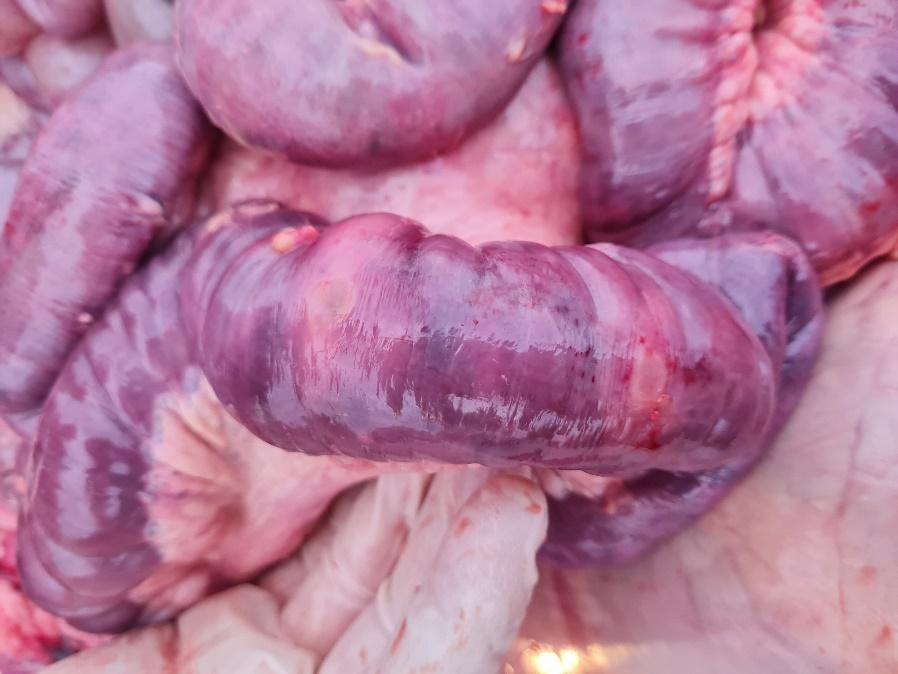
78 Dairy Exporter | www.nzfarmlife.co.nz | July 2022 STOCK VET VOICE
the results were
and gut had lesions
Words by: Lisa Whitfield
Lisa Whitfield
Figure 1: Why did she die? A post-mortem is the best way to find out the ca animal dies unexpectedly
Figure 3: Bovine Adenovirus 10 was detected by the vet pathology laborato results suggested this disease was the cause of death
Figure 1: Why did she die? A post-mortem is the best way to find out the ca animal dies unexpectedly
Figure 2: Post mortem reveals ulcers on the small intestine
Figure 3: Bovine Adenovirus 10 was detected by the vet pathology laborato results suggested this disease was the cause of death
Figure 1: Why did she die? A post-mortem is the best way to find out the cause of death when an animal dies unexpectedly.
Figure 2: Post mortem reveals ulcers on the small intestine.
which pointed to Bovine Adenovirus 10 as the cause of death – and subsequent testing using PCR confirmed the diagnosis. No one could have predicted this result – in fact we had never even heard of it as a cause of disease in New Zealand before.
It turns out Bovine Adenovirus 10 is a sporadic cause of disease and death in R1 heifers over autumn, winter and into spring, and there are a few reports of outbreaks around the country. While the virus is widespread in the cattle population it rarely causes serious disease or large outbreaks. Stressors such as bad weather, transport, parasitism or other diseases can trigger outbreaks. Clinical signs include diarrhoea, depression, respiratory signs and often severely affected animals will die. Getting an answer could be considered reward for effort if you want to look at the whole thing in a positive light. We now knew what we were dealing with, and while there wasn’t much we could do about it, the chances of more losses seemed likely to be low. No one was to blame either – it was just bad luck. A post-mortem is an under-utilised tool in NZ farming. There is value in knowledge, and getting answers can allow you to prepare and/or prevent ongoing stock losses.

• Lisa Whitfield is a Manawatu production animal veterinarian.
• •
Tips for a successful post-mortem include:
• Get it done as soon as possible – particularly in summer heat, but also in winter, every hour the carcase decomposes means there is less chance of getting an answer
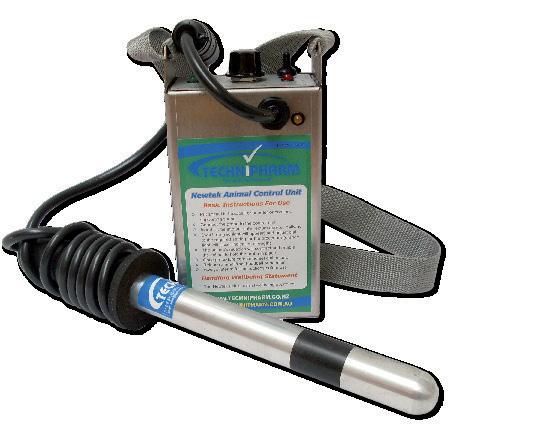
• Be prepared – what transport options do you have available? What is a suitable means of carcase disposal?

• Communicate – a good history for the animal is really helpful for a vet going into a postmortem – sometimes it is not practical to sample everything, but the history of the animal will prioritise which samples really need to be collected, versus which ones might not be necessary.
A neuro immobiliser relaxes the cow and a allows you to do what needs doing without creating a drama for animal and yourself or staff. Better safety and better outcomes for Animal and people with better overall results.

for infections
Check for results
Check for animal health
Track for comparisons
Instant test results per cow per quarter for best results
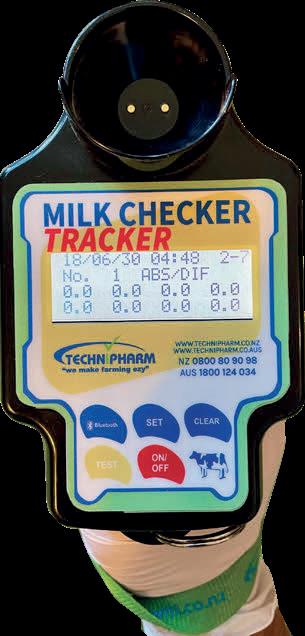
Dairy Exporter | www.nzfarmlife.co.nz | July 2022 79 We Make Farming Ezy WWW.TECHNIPHARM.CO.NZ 0800 80 90 98 WWW.TECHNIPHARM.CO.NZ 0800 80 90 98 WWW.TECHNIPHARM.CO.NZ 0800 80 90 98 WWW.TECHNIPHARM.CO.NZ 0800 80 90 98 ® iDairy ™ All + Gst, Freight and Insurance *Subject to terms & Conditions Save water - reduce up to 40% of water usage Save labor - gain an average of 3 weeks of time Reduce effluent volume - less effluent less worry Reduce energy use - less pumping lowers the power bill Big tick on farm management plan Big tick on farm efficiency Big tick on automation profit increase DUNGBUSTER® AUTO YARD WASHING “NEVER WASH YOUR YARD WITH A HOSE EVER AGAIN” TH2106 24/05/2022
Fresh cows on the platform training, hoofcare drama’s. Staff safety a concern?
PACIFIER™ ANIMAL CONTROL Normally $1895 $1795 Special $1495 N0RMALLY $1495 NEW 2022 MODEL WITH BT NEW! Check and Track Check Colostrum cows
Check
CATCHING THE DIRECTOR’S EYE
Shannon Munro made a series of TikTok posts during Covid lockdowns to keep her family and friends up to date with happenings on the farm – never realising they would launch her into a starring role in a national ad campaign to promote the industry she loves.
It was Dan Max, director of the advertisement who spotted Shannon on Tik Tok.


“The amazing head of casting for the DairyNZ ‘Join Us’ campaign Kate McGill contacted me asking if I would apply for the role. I thought it was a cool idea to promote dairying but said acting was not my cup of tea,” Shannon says, who with husband Steve and three children, farms at Waiohau in the Bay of Plenty.
Kate was persistent and eventually convinced Shannon to audition by sending in a video, based on some of the script from the advertisement.
“Steve got dragged round the farm filming and it was a lot of fun. However, I didn’t expect to get the role and was stoked when I did.”
Filming began in December last year on locations throughout the Waikato, including a bakery in Putaruru where Shannon was filmed walking out with a tray of cream buns, and cream on her nose.
“That was funny. It was filmed live with people in the street watching and people trying to get in and out of the shop next door.”
New to the world of acting, Shannon didn’t take long to find her groove. “I really enjoyed the experience and was so proud to have our son Sid involved too.” (That’s Sid working on a toy tractor in the workshop scene).
As a young Māori woman Shannon is also proud to be presenting a different face to dairy farming and to be associated with the campaign to show people what dairying has to offer as a career.
“Dairy farming offers really great opportunities and lifestyle. There are lots of opportunities for people to progress quickly and it’s very rewarding.”
She is also excited to help promote dairying as not only a career but also a lifestyle built around family.
“I was 100% delighted at the decision to feature a woman in the campaign as I think there are amazing women in the industry and their role needs to be highlighted.”
Shannon and Steve lease a 66-hectare farm about 30 minutes’ drive from Whakatane where they milk a herd of 180 Kiwicross cows.
“It’s a relatively small farm, small herd and a simple system which is good as finding balance between work and family time is really important to us.”
Their children, sons Benson (11), Sid (9) and daughter Kezie (4) love being on the farm, riding
Dairy Exporter | www.nzfarmlife.co.nz | July 2022
A Tik Tok posting during lockdowns saw dairy farmer Shannon Munro caught in the advertising lime light. By Elaine Fisher.
motorbikes and being hands-on. “They especially enjoy making huts in the bush and staying at the family’s glamping spot next to the creek.
“The kids can enjoy a lot of freedom on the farm. At the same time, they have lots to keep them busy and they’re learning life skills they may not have otherwise learned in the city,” she says.
Shannon grew up on a beef farm near the Kaipara Harbour in Northland and when she was 11, moved with her family to Tauranga. “Living in the city was a bit of a culture shock.”
She and Steve met when they were both attending Te Puke High School and Steve went on to become a builder.
“We had our first child, were renting and finding long commutes to work didn’t give us much time with him. When, 10 years ago, a family friend offered Steve a farm assistant’s role at Ngakuru near Rotorua we jumped at it.”
Shannon, with son Benson by her side, helped with calving and calf rearing.
Six months later Shannon and Steve were offered a management role on the farm they now lease, but after three years, a drop in the milk pay-out forced the owners to take over running the farm
again. That was followed by a move to a Galatea farm and then an offer of a 2IC role for Steve on a farm in the South Island where Shannon worked in a sales role with a rural company.
When a further opportunity arose to go contract milking, Steve and Shannon formed a company to take on the work, later moving to Northland. “We are always keen to take up new opportunities and when the chance came to lease this Waiohau farm, we leapt at it.”
Dairying can be hard work, but for Shannon it’s also fun and she and Steve plan to be working on the land and with cows well into the future – with farm ownership the ultimate goal.
Shannon’s bubbly personality shines through in the ad campaign, and she’s delighted that it has encouraged people outside the industry to consider dairying as a career.
“I know that through Covid many people have lost their jobs and thanks to the campaign, some are considering, or have already taken up roles in our industry.”
DairyNZ chief executive Dr Tim Mackle says DairyNZ’s ‘Join Us’ campaign is part of a wider project – ‘Here for the Long
Game’ - aiming to help communities understand what drives dairy farmers, and how they are working to provide a better future for their farms, the land, their families, their communities, and New Zealand.
“Dairy farmers are a core part of the economic, social, and environmental wellbeing of communities throughout New Zealand, and our wider ‘Here for the Long Game’ campaign is a platform for dairy farmers to share with other Kiwis who they are and what they do in a way that’s open and fun,” he says.
“Welcoming and supporting new farming talent is vital to the sector’s long game, so we’re excited to launch a new campaign encouraging young Kiwis to get into the dairy sector,” he adds.

The ‘Join Us’ campaign looks into daily life on a farm - from working with machinery and technology, to caring for animals and the land.
“It’s about showing young Kiwis that, for those keen to get stuck in, dairying offers a truly rewarding career and lifestyle. By joining us, you’re not only securing your own future, but becoming part of creating a better one for all New Zealanders.”
Dairy Exporter | www.nzfarmlife.co.nz | July 2022 81
‘I was 100% delighted at the decision to feature a woman in the campaign as I think there are amazing women in the industry and their role needs to be highlighted.’
Shannon Munro: ‘Cool idea.’
ATTRACTING
WORKERS TO DAIRYING
DairyNZ’s ‘Join Us’ campaign has changed perceptions for about four in 10 New Zealanders, with 82% saying it made them more favourable toward the dairy sector, research conducted for DairyNZ has shown.

Launched in January, it ran for just three months as a multi-channel campaign, ‘Join Us’ designed to reach a broad audience. The aim was to give Kiwis a better understanding of what it means to be a dairy farmer – connecting with everyday New Zealanders to build awareness and trust in the sector, and inviting more Kiwis to join dairy farming.
SURVEYING SHOWS ITS KEY SUCCESSES WERE:

• Had great visibility – an estimated 3.1 million people (18+ years) saw the Join Us campaign at least once over the total campaign period.
• High awareness – 1/3rd of New Zealanders say they have heard of or seen the campaign (unprompted awareness).
• Strong recall of what the campaign was about – almost three-quarters of people aware of Join Us remembered a dairy sector or farming message, with ‘dairy sector as a career’ being the main message recalled.
• Created positive impressions of dairy
The main message people took from the campaign was to join or consider a career in dairy and that there were benefits, variety and skills to working in the dairy sector.
• Positive flow-on effect – helping change perceptions
The campaign changed perceptions for about four in ten New Zealanders, with 82% saying it made them more favourable toward the dairy sector.
WORKERS
DairyNZ has now kicked off an intensive GoDairy promotion that will run until August. It is aimed at inspiring, encouraging and recruiting younger people to dairy roles before calving. With roughly 4000 dairy farming vacancies nationwide, and many farmers under real pressure to fill roles this season, DairyNZ wants to help attract more people to a dairy career. GoDairy will appear across a range of social media and online platforms, encouraging people to visit godairy.co.nz to learn more about what dairy farming involves and how to apply.
WWW.GODAIRY.CO.NZ
WATCH THE JOIN US VIDEO AT:
• www.dairynz.co.nz/news/dairynz-kicks-off-newcampaign-to-attract-more-kiwis-to-dairy/
We have a range of books for sale on our website: Go to: www.nzfarmlife.co.nz/shop
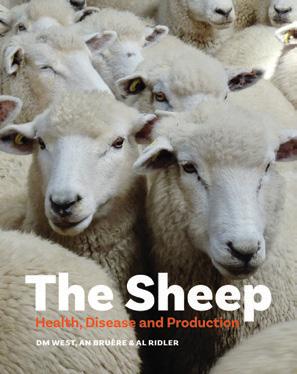

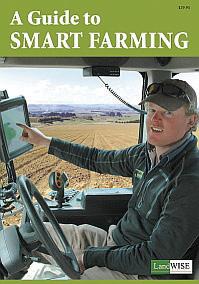

82 Dairy Exporter | www.nzfarmlife.co.nz | July 2022
BOOKS
SUBSCRIBE TODAY
BENEFITS:
• Monthly magazines - choose from print or digital subscription options
• Subscribers save between 17% and 22% off the cover price, depending on your subscription term

• Share your magazines with team members to grow their knowledge or subscribe them all and each have a copy
• A great reference tool to refer back to time and time again
• Your subscription is a tax deductible farm working expense
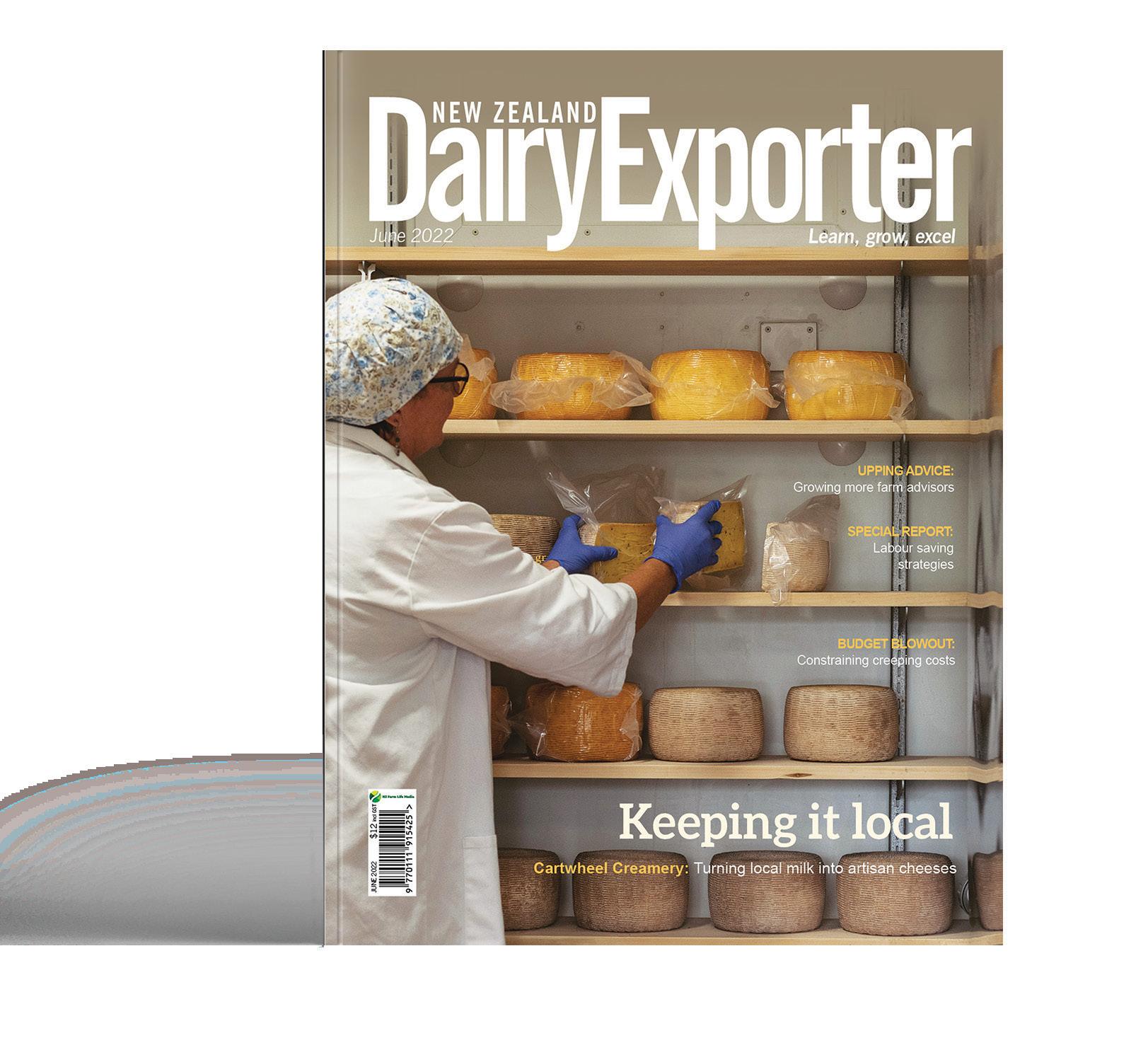
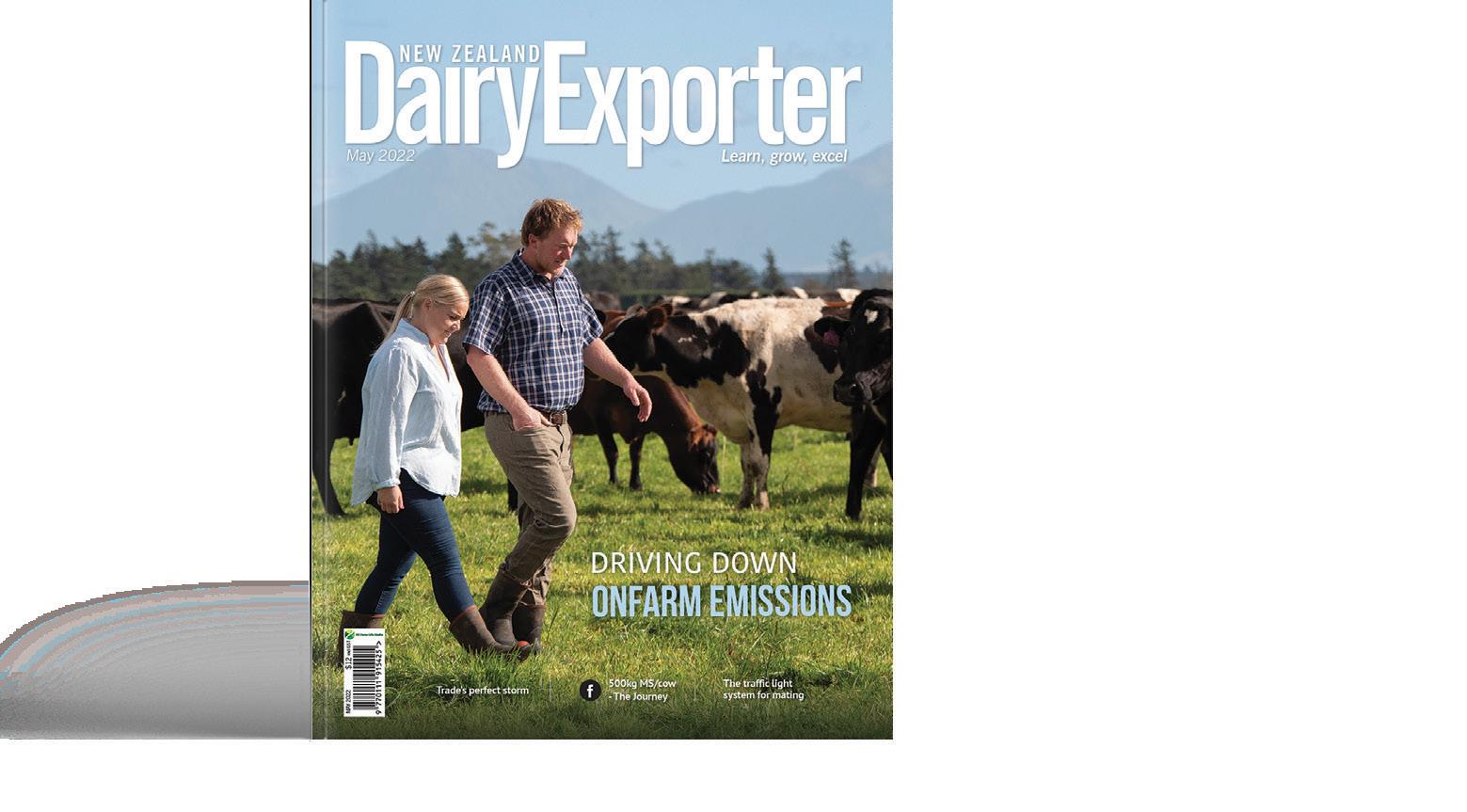

• Entry into regular subscriber-only competitions and giveaways
• Access to years of archive content on our website
12 MONTHS $129
24 MONTHS $252
36 MONTHS $360 3*
Dairy Exporter | www.nzfarmlife.co.nz | July 2022
AND 6-MONTH SUBSCRIPTION TERMS ARE AVAILABLE, VISIT OUR WEBSITE FOR DETAILS.
CARD PAYMENT ONLY Use RuralcoFarmlandsyouror card and SAVE 10%
224 782
• www.nzfarmlife.co.nz
*CREDIT
0800
subs@nzfarmlife.co.nz
Taking a
break
How do we keep morale up when it’s cold, wet and dark?
Harriet Bremner asks.
It is that time of year again when the short days, arduous jobs and sometimes, miserable weather can start to get on top of us. Getting up and leaving the house in the dark is something that dairy farmers, yes, are used to but when you take away lovely warm summer evenings and throw in what can feel like endless mud, baleage wrap and more mud, it can start to feel, well, boring.
So, how do we keep our own and our staffs’ morale and enthusiasm up during this time? We need to be mindful that working towards calving, an extremely full-on time of year, we want everyone to move towards that feeling like they have plenty in their ‘tank’ to get through.

Think about your team, what gets them excited, what interests them, who are they as people outside of work and when is the last time that you did something together that was off-farm where you didn’t only talk about work?

We hit this roadblock and I knew that we needed to go and do something fun together, being the token female in the team I knew it was me that was going to have to be the person who ‘dragged’ them off the farm - even for a little while!
What did we do? I asked everyone at the Monday morning meeting what evening suited them for dinner together. Once decided, I thought about what was something that we can do together that is random, totally distracting from real life for a few hours and what would also help us work together as a team without labeling it ‘team building’ and getting eye rolls in my direction. So, I got them to all meet us in the yard at 3:30pm and told them I had organised a surprise.
On the drive there, the buzz was great and chatter even better - it was like everyone just breathed and relaxed instantly. When we arrived in Te Anau outside Fiordland Escape the penny dropped that we were about to do an escape room and to my surprise everyone was excited. Bearing in mind that our team’s age ranges from 20 to 63 years, so it was cool to get that response.
In we go. I was the only one in the group who had done an escape room before and no one else knew what to expect. I simply said to them that for the first few minutes you’ll wonder what on earth we are doing. We had our debrief and with some nervous glances at each other entered the almighty ‘Moose Hunt’.
Harriet Bremner and Poppy.
WINTER
WELLBEING
When you first walk in, knowing where to start can be the hardest part. For us, we stood there, looked at each other, and then it was all go! There can be some epic disagreements in these rooms when too many chiefs come to power but in our case, it just worked.
You have an hour to complete the clues, puzzles, locks and riddles and if we got stuck on something, the woman outside will give a clue. Throughout the hour, which went incredibly fast - with no mention of the word ‘farm’, we had laughs, got frustrated, took turns, saw each person’s individual strengths shine and in short - had fun.
We finished just over an hour after the clock started. When we walked out of the room we were asked:“do you guys work together because I have never seen a team work together so well and with no arguments!” This was really cool to hear.
We headed out for a few drinks and a meal after and no one mentioned work until about 7:30pm after dinner. Winning!
The longs and shorts of this experience for us were that it felt like we truly escaped
our farming lives, even for a few hours and mentally it gave us a buzz. We got to see each other in a non-work sense and have some reprieve from the daily grind. We deliberately did not go far from home as we understand people also have things they like to do outside of work and didn’t want to take away too much of their spare time. Also, we, like most of you are in the grind of daily breaks so doing a whole day away is not an option at this time of year. Next time, when the days are longer we are absolutely doing a day trip.
Think of something that will suit your
BOOST Animal Health

with this highly palatable and easily absorbed natural blend of New Zealand Fine grade Sea Salt containing Agrisea Seaweed and AgriSea Animal+ (seaweed extract)
Seaweed salt blocks are made using New Zealand fine grade sea salt, a unique blend of Ecklonia radiata seaweed and a especially batch brewed Animal Health Tonic. Together this blend of natural products provides livestock with a valuable source of essential elements, vitamins, minerals and amino acids in addition to toxin neutralisation to boost overall Animal Health.

PERFECT FOR CALVES
The natural fine salt used in this block, easy on the mouths of young stock. Plus natural seaweed providing needed minerals for life.
Fine Natural Sea Salt
Source of essential Trace Elements. Convenient & Cost effective for year round use. Probiotic effect of Animal Nutrition stimulates good gut health.
Toxin binding capacity from incorporated Animal+.
Salt addition helps optimize production. Easy to stack, handle and dispense.
The team smashed through the Escape room challenge in 63 minutes flat - and had lots of fun doing it, and best of all, no talk of the farm.
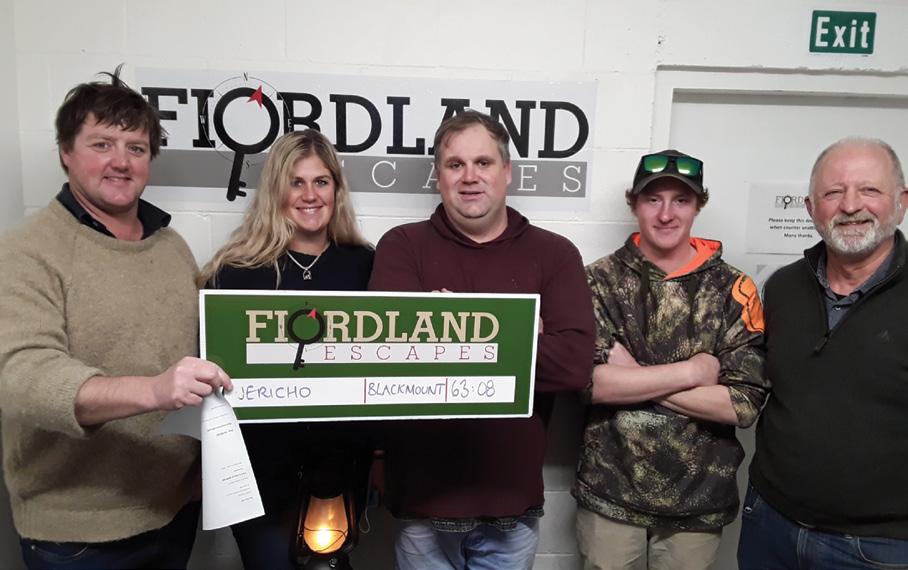
team, your budget, your family lives and so on. What activities can you do that aren’t too far from home, or maybe you want to do a day trip somewhere and take everyone’s families as well. The options are endless. We are certainly going to make a point of doing things like this more often. It brings people together, gives them a boost, shows appreciation and helps bring the team closer together. This is just one thing we can do to help boost that morale when it is cold, wet and dark. Get off the farm, have a laugh, have fun and don’t talk about work!
So where are we going next time? Fishing.
Have a wonderful July everyone.
Dairy Exporter | www.nzfarmlife.co.nz | July 2022 85
Seaweed
in a 15kg
your
Merchant
For more information visit our web site www.domsalt.co.nz
Salt Blocks are available
Block from
local Rural merchant or Farm
Store
Migrants again welcome
For those desperate for staff, the long-awaited opening of our borders post-Covid will come as some relief although the July date is hardly in time for calving.
Dairying, with its estimated 4000 muchneeded staff, has somehow missed out being prioritised by Immigration New Zealand (INZ) and is under the Accredited Employer Work Visa (AEWV) scheme.

The good news is, under the scheme, dairy farm managers, assistants and herd managers can apply for residency after two years working in New Zealand.
So the migrant you employ, train and get to know doesn’t have to leave if all goes well and they can bring their families with them.
But the bad news is they must have had at least three years’ experience working on
a commercial dairy farm in a similar role before coming here.
You also must pay them at least NZ’s median wage which is currently $27/hour but is reviewed yearly and about to be announced for this year. My guess is it will go up.
Migrants must apply to work here under the immigration code Dairy Cattle Farmer ANZSCO 121313 (ANZSCO stands for Australian and New Zealand Standard Classification of Occupations) and there is a very long list of what they must be capable of doing before they get here from meeting environmental regulations through management of soil, nutrients, effluent and water efficiently to being able to supervise and train other staff to milk cows.
In other words, the person you bring in from overseas now must be competent in
the role before they come here. You’re not employing a newbie to the industry.
So, there is a list of things you must do to get one.
First, you must become accredited to apply to hire migrants so INZ can make sure you are a viable business, meet immigration and employment standards and will not exploit anyone. This will take an estimated 10 working days, according to INZ.
Once you are accredited (don’t laugh at this next bit), you must do what’s called a job check which is to advertise the position for at least two weeks on a national listing website or channel to make sure there are no suitable NZers you could hire and train for the role.
Why you would go through the process of becoming accredited and pay the fees if you could hire a NZer, I have no idea.
86 Dairy Exporter | www.nzfarmlife.co.nz | July 2022
DAIRY 101 STAFFING
The borders have reopened for migrant workers for the dairy industry, but they need to know what they’re doing - newbies need not apply. Story by Karen Trebilcock.
However, if you want to pay twice NZ’s median wage or if the job is on the government’s green list, you don’t have to advertise and get a job check.
Unfortunately, no dairy farming roles are on the green list.
Job checks are valid for six months
and INZ is estimating they will take 10 working days to process.
Once you have it, you can then ask the migrant to apply for their work visa by sending them the job token number INZ has given you which they include in their visa application.
Allow 20 working days for the processing of the visa application.
So that’s 10 working days to be accredited, two weeks of advertising and another 10 working days to process the fact that you have advertised and found no one and then 20 working days for the visa application to be approved which adds up to about two and a half months of waiting and doing paperwork before your new employee can get on a plane.
But while you are filling in paperwork, so is your new employee.
They must provide to INZ a copy of their signed employment offer, show they have an acceptable standard of health and evidence they are of good character (which might require a police certificate).
Also, their skills and experience must match the skills and experience you gave to INZ as part of your job check application. So they will be asked for references and evidence of qualifications to make sure they meet the ANZSCO 121313 classification.
As their employer, when they arrive in the country, you are also required to help them and their family settle in. Finding accommodation, assisting with setting up bank accounts and showing them where the local supermarket is are all encouraged if not mandatory.
Which makes sense. After spending two and a half months getting them here, you want them to stay, settle in and be happy.
If you don’t want to google government websites and try to figure out how this all works, you can employ
a recruitment agency that deals with immigration. They know all the forms to fill out and can advise you at every step (and correct anything I might have got wrong in this article).
Of course, another way is to employ young people who have Working Holiday Visas. Young travellers wanting to see the world are fun to have around, bring different cultures and traditions, and are eager to learn and experience new things.
Some may never have seen a cow before so expect a few laughs, a few shocked faces and whatever you do make sure they understand what you have told them to do because their Netflix and school-taught English might not be as good as it seems.
To qualify they must be aged between 18 to 30, or 35 for some countries. They can stay in NZ and work for up to 12 months, or up to 23 months if they are from the United Kingdom or Canada.
They can’t come for a permanent job, but seasonal work is fine although some countries have restrictions on how long the job can be for.
They can’t bring their children and partners have to apply on a separate visa.
Although our agriculture minister knows in the past young people from overseas will milk your cows for nothing if you provide them with accommodation, today you should pay them at least the minimum wage for every hour worked and check with your accountant about holiday pay.
Ask to see their electronic work visa to make sure they are eligible to work while here and make sure they have an IRD number. If they don’t, it’s easy to get them one.
Fingers crossed the opening of our borders will see employment issues ease but whatever you do, when you get that great employee, make sure you keep them.
Dairy Exporter | www.nzfarmlife.co.nz | July 2022 87
You also must pay them at least NZ’s median wage which is currently $27/hour but is reviewed yearly and about to be announced for this year.
Focusing on the heat
From management in Otago to 50/50 sharemilking in Northland, Peter Slade and Alyse Fisher are focused on caring for their cattle and creating both a sustainable and profitable dairy farm. Focusing on their herd’s needs and providing everything needed to perform comes as second nature to Peter and Alyse.

Now in their third season as 50/50 sharemilkers Peter and Alyse have invested in the cow monitoring system CowManager to help increase the overall efficiency of their herd by making decisions based on accurate data.
“So far CowManager has helped take us from reactive management of the herd to proactive management, often we know cows have some form of sickness days before they start showing physical signs.
“Being able to detect sickness in our cows earlier means we can monitor and treat those cows before they go down and become unproductive.
“On this farm, we have had issues with what is called hardware disease. Hardware disease is caused by cattle consuming small metal objects, the objects can then pierce the sidewall of the stomach, become lodged and cause a variety of other issues for the cattle.”
One of their cows had it really bad, Peter said and unfortunately died from the disease.
“We had the vet perform an autopsy which is how we first diagnosed the issue as hardware disease. Now with the help of CowManager’s in-depth analytics, we can see the pattern for hardware disease in our cows and treat them with a magnet.
“It is amazing to watch their
activity climb again after treatment and gives us real satisfaction that now with CowManager we can act fast and have a serious impact on the health and performance of our cows.”
In Northland’s very hot summers, naturally, just like humans the cows overheat. Prior to CowManager the couple knew this was an issue and had tried various methods to help cool the herd.
“We were recommended a heat pack for the herd and naturally were a little sceptical. We decided to give it a go and after only the first feed using the Nutritech heat stress packs, we stopped receiving red heat stress alerts between 8.00 and 10.00am. Instead, if we got any at all, they would be around 3.00pm and only as suspicious heat stress.
“We noticed the average ear temperature of the herd dropped by around a degree. Over the rest of summer, we only had two red group heat stress alerts which were on two of the hottest days. Without CowManager we would still be left wondering about how effective the heat packs had been.”
CowManager went in two weeks before mating last season. They were a little unsure about trusting the system 100%. They felt tail painting was going to still be their main heat detection and that CowManager was to be the backup. Four days in and tail paint was gone and they were relying on CowManager for all heat detection.
“We had cows with untouched tail paint so we put them up and the technician would say yeah sure enough she is on.”
Accurately detecting silent heats and removing the worry of tailpaint was a game-changer, Peter and Alyse
88 Dairy Exporter | www.nzfarmlife.co.nz | July 2022
SOLUTIONS MONITORING NEW? What’s
Left: Peter Slade and Alyse Fisher: making decisions based on accurate data.
said. To put the system in two weeks out from mating and to rely on it and get an increase in six-week in-calf rate was pretty unreal.
“Fertility was definitely one of our biggest draws to the system. Getting cows in calf is critical to any dairy operation. Having seen such success with the health and fertility modules, we decided to give CowManagers Nutrition module a go as we had access to a free trial.
“Originally I never saw myself using the Nutrition Module,” Peter said, “but now after experiencing it and seeing the value first hand the combination of the Nutrition Module and Health Module is almost going to have a bigger effect on our fertility rates than even the fertility module itself.”
They have a few paddocks of fescue which the cows don’t like. With CowManager, they were able to clearly see just how much they hate it.
“Whenever we graze it, we consistently get feed intake alerts anytime from 9pm. Their eating and rumination both drop with an increase in activity. We would turn up in the morning and the girls still have over 2200 feed coverage and rather than eating the fescue, they are all sitting on it.”
Managing transition periods, getting feed right and maintaining a healthy herd heavily contributes to getting the herd in calf. CowManager being a discreet ear sensor was a no brainer. The cows are used to tags in their ears so there is no adjustment for them after installing them, and once installed there is no need to touch them.
“When we first got the system there was a running bet in the neighbourhood about what the solar routers onfarm were for as the CowManager ear tags are so discreet no one even noticed them on the cows. People always ask if we lose many ear tags but we haven’t lost any. We have had two come out in the feed pad which were found and retagged the same day.”
CowManager has been a valuable addition to their dairy operation and they are excited about what they can achieve.
More: Senztag.co.nz/cow-monitoring
Know your colostrum powder
Providing a newborn calf or lamb with colostrum within 12 hours of birth is vital, we know that. And if maternal colostrum is unavailable or poor quality, a colostrum replacer can provide an essential alternative.
So, how do you go about selecting the right product? Always remember, a product selected on price may not give a calf the start it needs to become a high-performance animal.

Consider:
Is it a colostrum replacer or a colostrum supplement?
Although very similar, it’s important to note the difference between a colostrum replacer and a colostrum supplement.
• A colostrum replacer is designed to completely replace the first feeding of colostrum – most often used when high-quality colostrum is not available.
• A feed of colostrum replacer will provide at least 100g of Immunoglobulin G (IgG) which is essential for achieving passive transfer in a 40kg calf.
On its own, a colostrum supplement cannot replace high quality colostrum; it is designed to be fed in conjunction with maternal colostrum.
Have the vital immunoglobulins been protected during pasteurisation?
Products listed as “whole colostrum” (usually a replacer) are just that; made from colostrum collected from dairy cows.
Any colostrum must be heat-treated (pasteurised) to eliminate any potential disease-causing agents, such as Johne’s disease or M. bovis.
Heat treatment is key here. Where standard pasteurisation involves high temperatures which can reduce IgG content and damage growth factors, whole colostrum is pasteurised through carefully timed heating and cooling cycles, with regular testing, to preserve the natural ratio of all ingredients - keeping key colostral components intact. So, the different products obviously have different benefits. However, a colostrum replacer is more costeffective; it can be used as the sole source of colostrum or to enrich maternal colostrum. Ask your retailer for AgriVantage’s Launchpad18 – the whole colostrum replacer.
More: agrivantage.co.nz/launchpad-18-colostrum-powder

Dairy Exporter | www.nzfarmlife.co.nz | July 2022 89
SOLUTIONS COLOSTRUM NEW? What’s
Cows with CowManager ear sensors.
50 years ago in the Dairy Exporter July

As NZ Dairy Exporter counts down to its centenary in 2025, we look back at the issues of earlier decades. 50 Years Ago – July 1972.
THE BIRD THAT MATTERS
The attitude of a farmer’s wife is “absolutely vital” to the success of his farming operations, a South Taranaki dairy farmer, Mr Barley Hutton, told the Massey conference during an entertaining address.
“It is not the monkey around your neck but the bird on your back that really matters,” he said.
Mr Hutton said the farmer fortunate enough to have a wife who will “discuss, encourage, sympathise, budget and still know when to keep quiet possesses a gem of inestimable value”.
“What an unfortunate fellow is he who tries to farm with a disinterested partner,” he added.
INFLATION ERODING DAIRY EFFICIENCY
Inflation of the proportions of recent years obviously could not be halted overnight, but unless it was brought under control quickly the competitive efficiency of the dairy industry would continue to be eroded, said the Dairy Board Chairman, Mr F. L. Onion, in his address to the Dominion Dairy Conference in Wellington.
It was a matter of concern that even since the stabilisation regulations were strengthened last March, prices of petrol, fencing wire and other farm requisites had increased. Road carriers’ transport schedules, county rates and packaging costs had also risen.
Mr Onion said that last season, cow numbers had declined by 3½ percent through a loss of confidence in the dairy industry arising from an intolerable costprice squeeze.
NITROGEN DUE IN AUGUST
Nearly 8000 tons of nitrogenous fertilisers are due to arrive in New Zealand from
Japan in the first week of August.
This shipment, which will ease an acute shortage in many parts of New Zealand, will be followed at approximately one month intervals by two more shipments. Each will be about 7500 tons.
The first shipment will be 7800 tons of urea, ammonium sulphate and MPK and, according to the firm handling its import, will be discharged at Auckland, perhaps New Plymouth, and at Lyttelton and Timaru.
The general manager of one of the consignees, Mr P. G. Riddell, Auckland, says the August shipment had been due in New Zealand in June.
It had been delayed primarily because of the Japanese seamen’s strike which had tied up thousands of ships.
A world-wide shortage of nitrogen was another factor.
POLLUTION CONTROL “TOO FAR TOO FAST”
The New Zealand dairy industry might be being pushed “a little too far too fast” over pollution, Dr W. A. McGillivray told dairy factory managers at their conference in Palmerston North.
Dr McGillivray, director of the Dairy Research Institute, said there was a need to distinguish between agricultural pollution which, although expensive to overcome, was relatively controllable.
Unlike industrial pollution, which could cause permanent damage unless controlled immediately, the effects of agricultural pollution, although possibly unsightly and unpleasant, were short-lived.
He said, it seemed to him that, because of this, these agricultural problems did not have to be tackled with the same urgency as some other pollution problems. If a
company was in difficulties, no permanent damage was done by being a little lenient, at least temporarily.
INDUCED CALVING TRIALS
A 35 percent death toll among calves born through induced calving experiments is a warning to dairy farmers thinking of using this method of changing the normal calving pattern of their cows.
Ruakura scientist Dr R. A. S. Welch outlined the experiments and the results in a paper to the Ruakura farmers’ conference this year.
He said the main advantage of the technique lay in being able to inject a farmer’s few late calving cows so that they could become pregnant again in time to calve with the bulk of the herd in the next season.
But he warned that a farmer could expect a possibility of losing a large number of calves through death and also have increased metabolic disorders and retained placentas in the treated cow.
Dr Welch said 571 cows were treated on 132 farms in field experimental work undertaken through the Huntly Veterinary Club.
Of the 540 calves born, 191 were born dead. “This was the most serious drawback to the treatment and was both unexpected and disappointing.”
• Thanks to the Hocken Library, Dunedin.
90 Dairy Exporter | www.nzfarmlife.co.nz | July 2022 OUR STORY 50 YEARS AGO IN NZ DAIRY EXPORTER
Cover photo: Subtle autumn tonings on a dairy farm near Hinakura, Wairarapa, caught the attention of a National Publicity Studio cameraman.
Dairy Exporter | www.nzfarmlife.co.nz | July 2022 91 Check out our latest episode on Wintering - not just a Southland issue
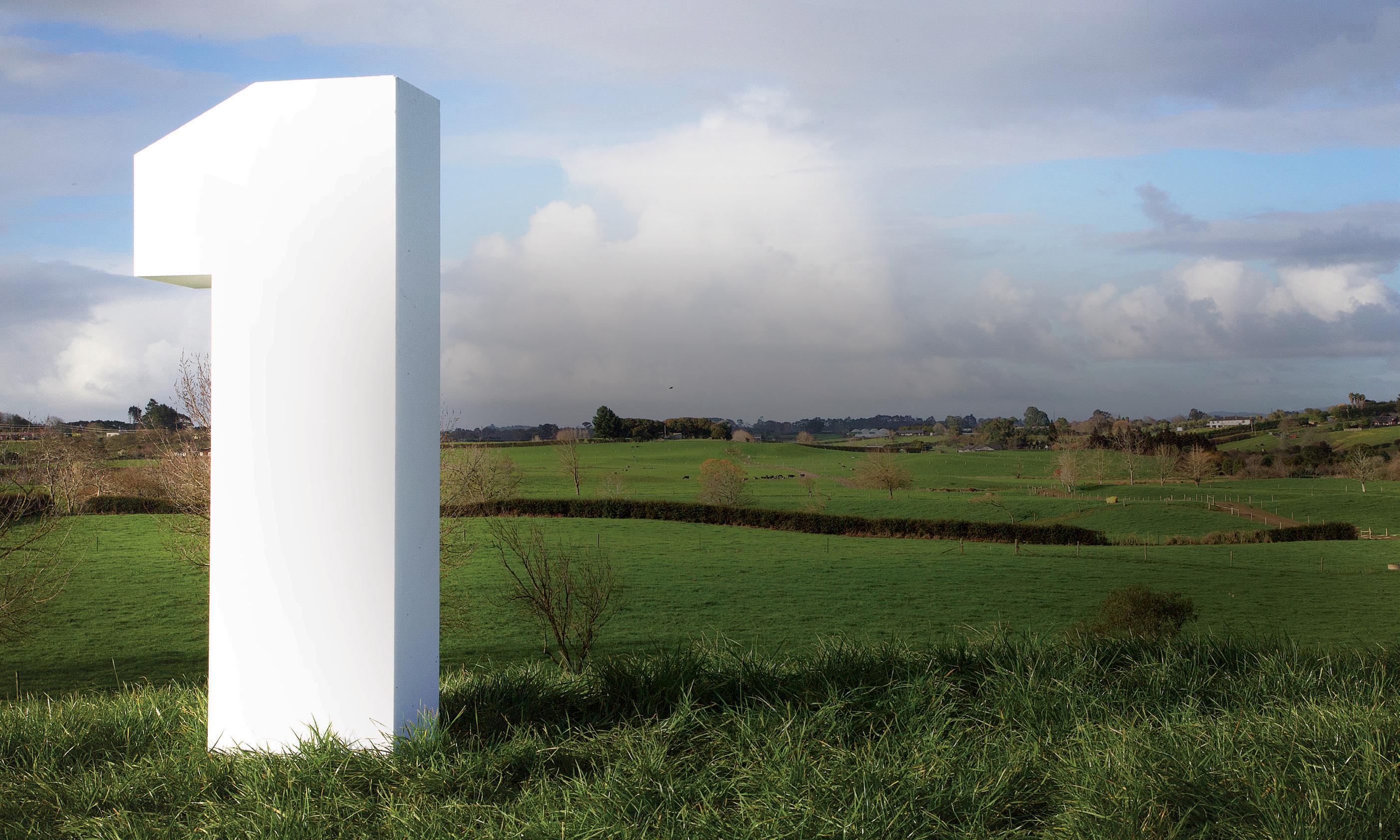
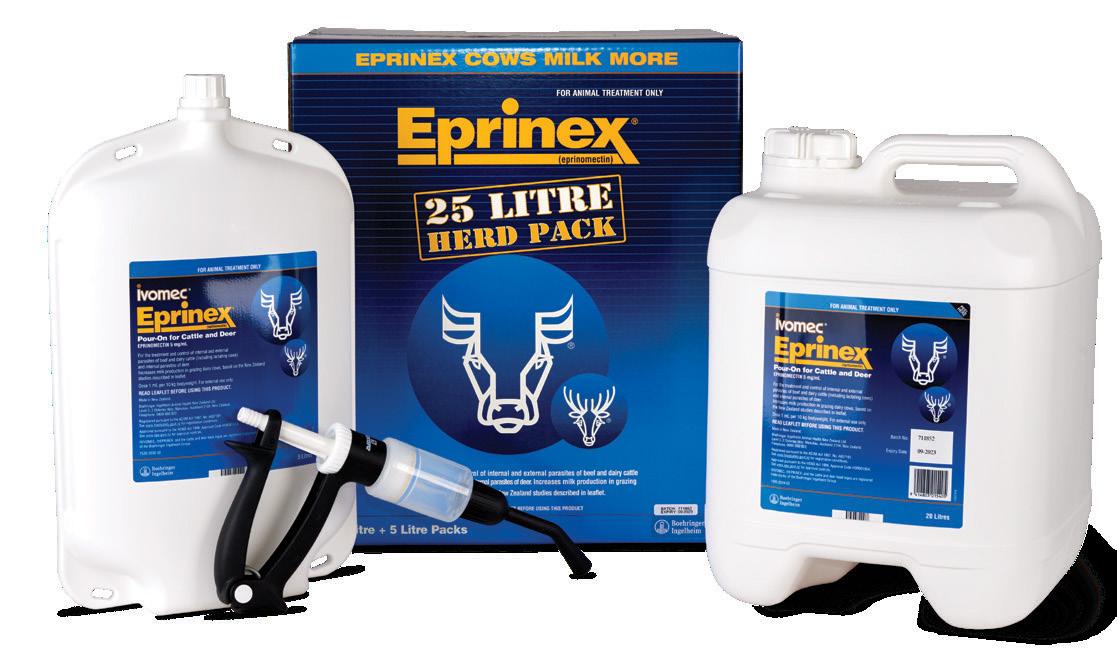

92 Dairy Exporter | www.nzfarmlife.co.nz | July 2022 Eprinex is not only the 1 and only drench to have worldwide NIL milk withholding when treating lactating cows - it is also the No.1 drench for return on investment by far. For example, based on an average herd size of 500 cows and a $9.00 payout, farmers can expect a return of $67.44 per cow. Eprinex makes a lot of sense… and cents. For more info go to futureproducers.co.nz BO1362 PROUDLY AVAILABLE FROM YOUR LOCAL PARTICIPATING VETERINARY CLINIC Boehringer Ingelheim Animal Health New Zealand Limited. Level 3, 2 Osterley Way, Manukau, Auckland, New Zealand. EPRINEX® is a registered trademark of Boehringer Ingelheim Vetmedica GmbH, used under licence. Registered pursuant to the ACVM Act 1997, No. A007191. © Copyright 2021 Boehringer Ingelheim Animal Health New Zealand Limited. All rights reserved. NZ-BOV-0012-2022. futureproducers.co.nz Scan here to calculate the R.O.I. on your herd... *Based on a 500 cow herd and $9.00 milk solid payout. Together going forward. Ensure young stock become future high producers through improved health, growth and energy at: $ 67.44 PER COW* Typical R.O.I. by using Eprinex® on your dairy herd this season. 1 of a kind. makes a lot of cents.
































































































































 Words by: Chris McCullough
Words by: Chris McCullough

































































































































